- Skip to primary navigation
- Skip to main content
- Skip to primary sidebar
- Skip to footer

Nikki On Her Way
Travel more, travel better.

Our Once In A Lifetime 6 Month Trip Itinerary
28.07.22 | Nikki Gibson | 5 Comments
In August of 2021, my husband and I left for 6 months of travel through Europe and Asia. We made it to 18 countries on our itinerary, and lived out our dream of traveling the world together! It was amazing, and sometimes it truly feels like a dream to me.
I’m going to detail our eventual 6 month travel itinerary, how long we stayed in each place, how we decided where to visit, and the method that we used to plan our trip.
When we left, we did not have a solidified itinerary for the countries we would visit. Armed with a list of potential destinations, we flew to Turkey as our first stop, and made it up from there!
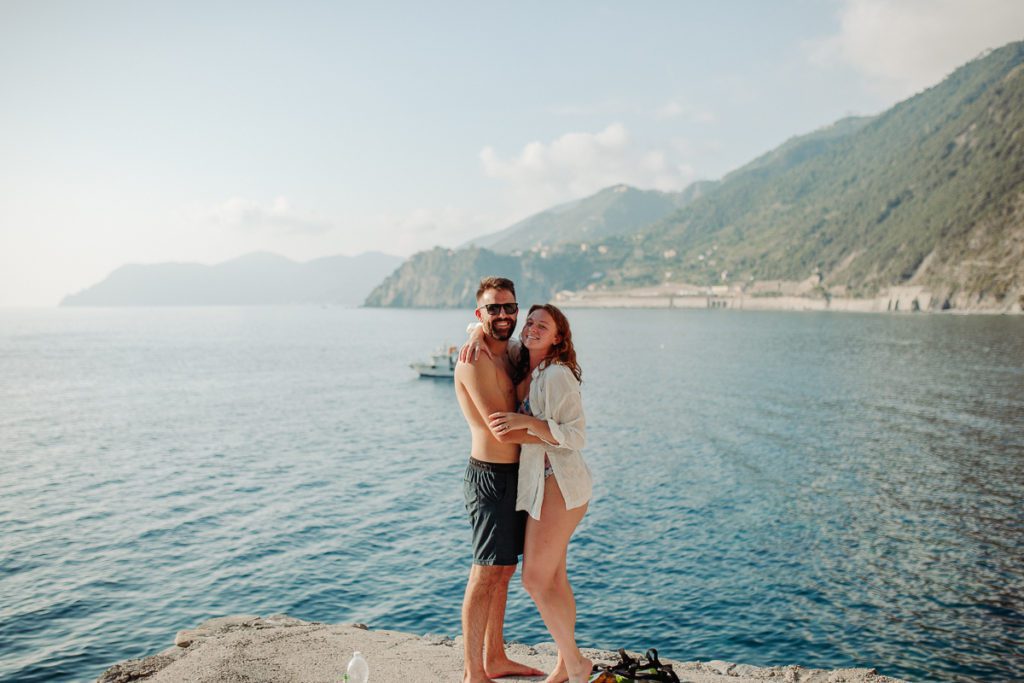
If you ever decide to do something similar to us (which you totally should 😉 ), you can use this information to help create your own itinerary!
When we left, many borders were closed or very difficult to get through *ahem thanks virus ahem*, so we stuck mostly to Europe and ended up in Asia at the end of our trip.
But, that being said, we were able to stretch the $30k we had saved in 1.5 years over about 6 months for two people!
This post may contain affiliate links. If you use these links to buy something I may earn a commission, at no additional cost to you.
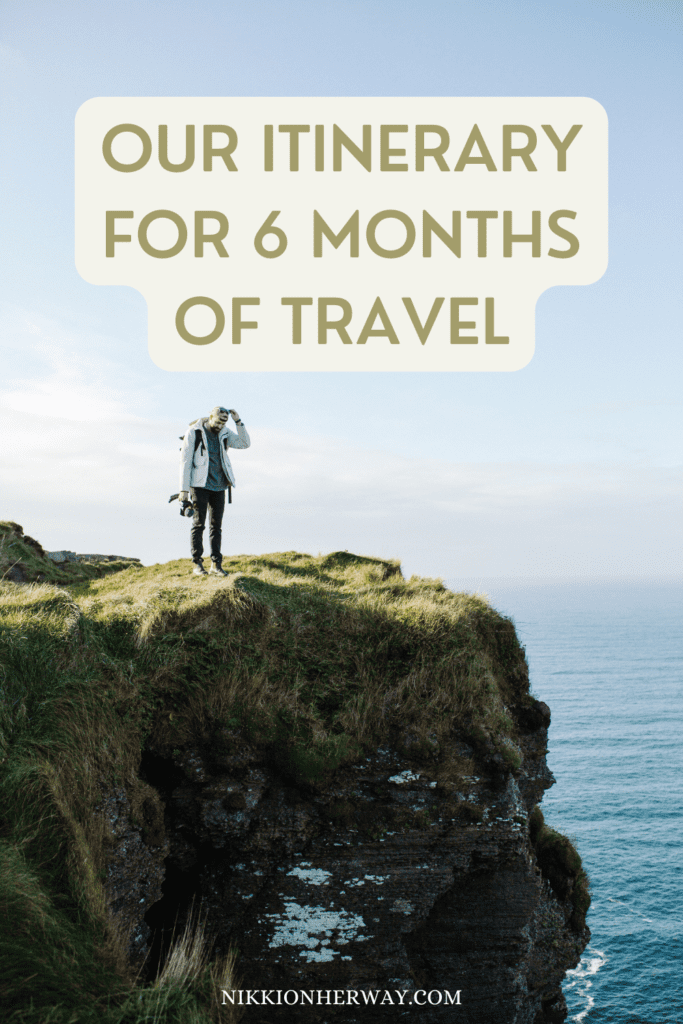
The 18 Countries We Visited In 6 Months of Travel
Table of Contents
Turkey – 2 Weeks İstanbul – İzmir – Selçuk – Ephesus – Pamukkale – Antalya – Cappadocia
Bosnia & Herzegovina – 2 Days Sarajevo
Croatia – 2 Weeks Dubrovnik – Trogir – Šibenik – Zagreb
Spain – 15 Days Mallorca – Soller \ Barcelona – Zaragoza – Bilbao – San Sebastian – Madrid
Italy – 3 Weeks Naples – Rome – Florence – Montaione – Cinque Terre – Ortisei – Fie allo Sciliar – Venice \ Lake Como – Milan
Vatican City – 1 Day
Slovenia – 4 Days Ljubljana – Lake Bled
Hungary – 3 Days Budapest
Czech Republic – 1 Week Prague – Karlštejn – Cesky Krumlov – Jiřetín pod Jedlovou
Austria – 10 Days Vienna – Salzburg
Germany – 11 Days Berchtesgaden \ Cologne – Baden Baden
Ireland – 9 Days Dublin – Donegal – Galway – Cliffs of Moher – Dingle – Cashel
France – 6 Days Paris – Blois – Amboise – Le Havre – Étretat
Scotland – 11 Days Edinburgh – Inverness – Isle of Skye – Fort William – Glencoe – Glasgow
The Netherlands – 3 Days Amsterdam – Breda
Belgium – 1 Day Bruges
Switzerland – 8 Days Chur – Lucerne – Bern – Engelberg
Thailand – 1 Month Bangkok – Chiang Mai – Koh Phi Phi – Krabi – Khao Sok – Koh Samui – Koh Tao
This list is in chronological order of where we visited on our 6 month travel itinerary , with a few exceptions. We went to Italy, Spain, and Germany twice, but I’ve listed each of those countries based on the first time we visited. I’ve separated the visits to those countries with a \ between locations.
READ ALSO: Why We Decided to Quit Our Jobs and Travel What 6 Months of Travel to 18 Countries Cost Us Travel Camera Gear – What’s In My Camera Bag | Travel Blogger Edition
How We Planned Our 6 Month Travel Itinerary
People always balk when I tell them we only planned the first 2 weeks of our 6 month world trip. And honestly, I can admit it does sound kind of chaotic.
Before we ever left for our trip, we had actually done a ton of planning for our 6 month travel itinerary. Just, not necessarily for our destinations or the daily activities we would do.
Rather, our pre-trip planning was mostly financial in nature (like setting up our Charles Schwab debit card that reimburses us for ATM fees anywhere in the world and racking up credit card points to use for free flights).
The rest of our trip was spent planning as we went.
The planning process on the road looked a little something like this:
We would sit down after a day of exploring and talk about where we wanted to go 5 days from then, do some research about where to stay, what to do, and how to get there.
Then, we would book our flights, trains, cars, hotels, etc. once we knew where we wanted to go.
It really was that simple! Sometimes you need to plan further ahead than that and book tickets for major tourist attractions or popular activities. But, usually you don’t need to plan very far out!
As someone who has dealt with anxiety her whole life, I understand the need to over-plan or be hyper prepared.
But, I will share with you that I felt less anxiety while we traveled than ever before, even when I didn’t know where we would be sleeping the following night. I found some sort of freedom in the flexibility we created.
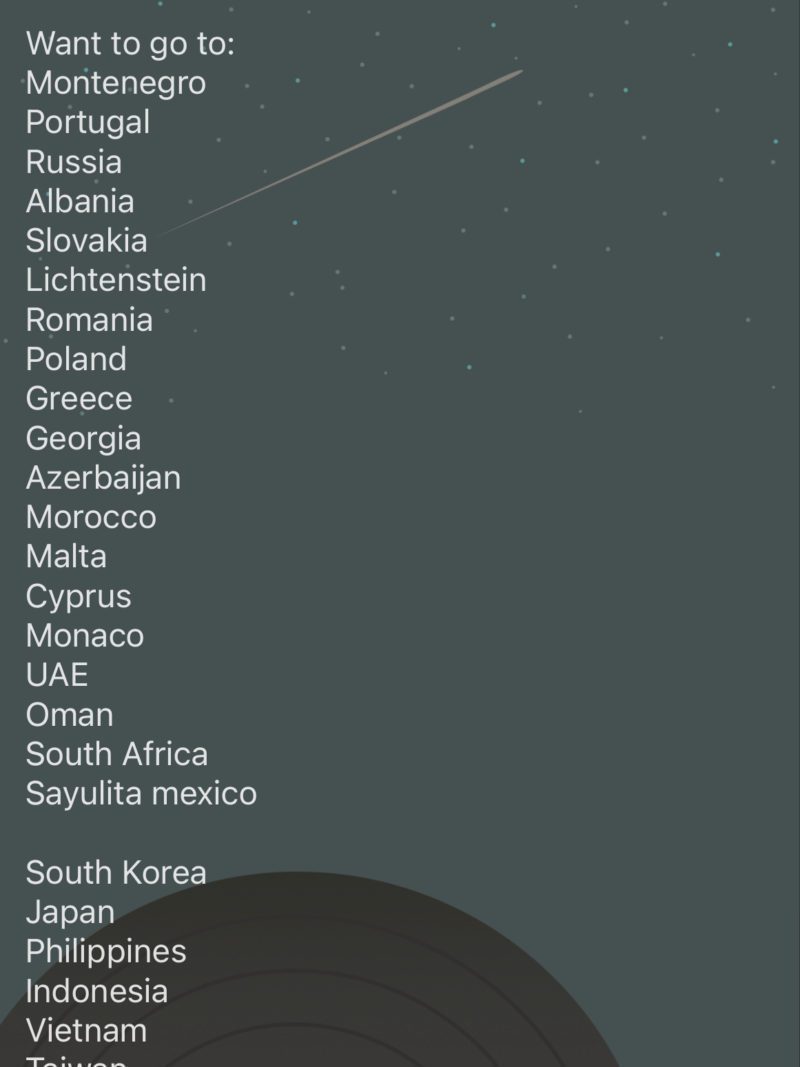
How We Decided Where To Visit on Our 6 Month Travel Itinerary
Most of what drove our decisions of where we would go next was money and convenience.
When we were ready to move on to the next destination, we would look at the map, notice nearby cities or countries, and then look up train or flight prices to get there. Likely, we would choose the cheapest option or the closest one, and go from there!
Easily the most important factor that determined our 6 month travel itinerary was cost. The cost of transportation, the cost of food, the cost of accommodation, all of it.
We made a spreadsheet pretty early on into our planning where we collected all of our research about what it would cost to visit x country. I ended up putting some pretty estimated costs because it can be pretty hard to tell how much it costs to travel a country based on other people’s stories. Everyone travels differently, so you have to take it all with a grain of salt.
It’s better to overestimate how much it’ll cost to travel long term than to underestimate how much you’ll need.
I put in the estimated daily cost, multiplied by 2, and then multiplied again by the number of days we might want to travel there in order to give us a general idea of how much we might need for 6 months of travel.
This process helped immensely in visualizing the money aspect of our trip. I was able to see how quickly the cost could add up and how being frugal in certain places would save us money and help us to travel for even longer.
READ ALSO: What 6 Months of Travel to 18 Countries Cost Us 14 Simple Tips To Make Your Next International Flight A Breeze
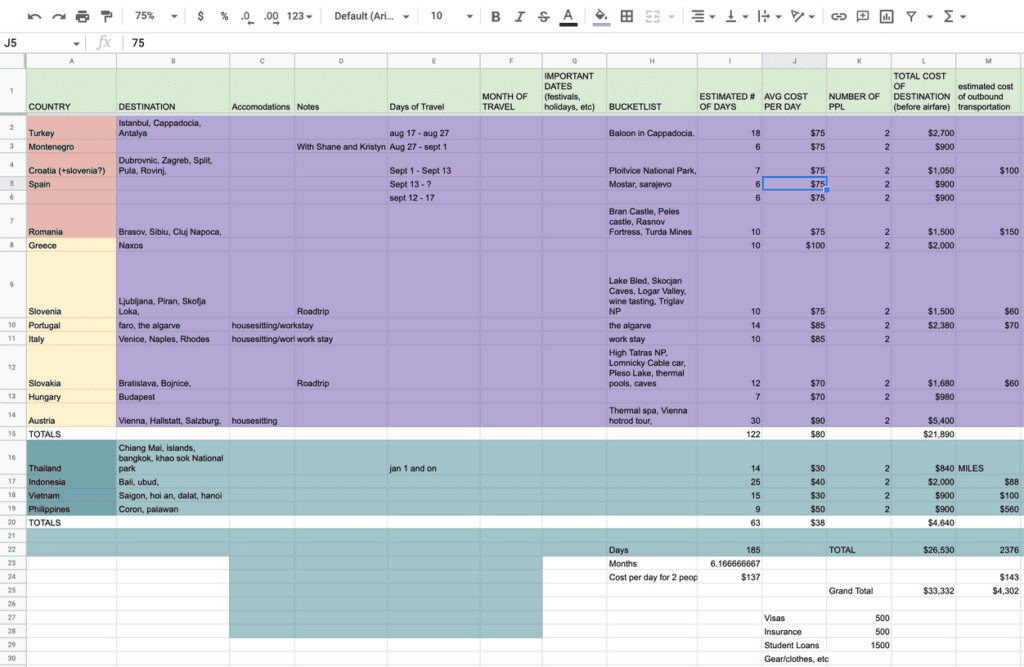
Transportation
We traveled by train to a lot of places, just hopping to the next country over. For example, Slovenia and Hungary share a border, so we took a train from Ljubljana to Budapest.
Traveling by train in Europe is one of the best ways to get around, and is often very cost-effective, too.
My favorite ways to search for available train routes and tickets are Omio and Google Maps .
Sometimes, flights can be very inexpensive, but you just need to look at the itinerary. Most of the time, those €15 flights are a horrible itinerary. Other times, flying was a great option for us, so it just depends.
There were some times that flying was our only option, like when we traveled to Ireland or Scotland.
In other instances, where we traveled to next was determined by our family coming to visit us. We met up with my dad and stepmom in Spain, Colton’s parents in Austria, and my mom, stepdad, and siblings in Switzerland. We planned around those meetups and tried to make it a logical progression of our trip.
Make A Logical Travel Itinerary
You can decide where to go next based on a number of factors, but I believe the easiest way is to approach it logically. Not only will this be the easiest way to plan, it will also probably save you money.
Instead of flying around Europe in a path that resembles a 2 year old’s scribble drawing, travel in one direction and do short hops from one place to another. You’ll spend less time on trains or planes, and more time exploring.
You’ll likely save money by doing this as well, as longer flights tend to cost more, as well as train tickets.
If you’re traveling to multiple continents and doing a full round-the-world trip, the best idea is to decide a travel direction. Like, East to West, or vice versa.
Traveling that way isn’t always possible and sometimes an awesome flight deal can be too good to pass up on, so don’t beat yourself up about it.
It’s just going to make your travel planning that much easier, and will likely be the most cost-effective method of traveling.
Bucket List Points of Interest
Before you ever leave on your trip, have an idea of your must do activities and must see locations to help guide you.
We had a master list of places we were open to visiting, plus some must-do activities, like a hot air balloon in Cappadocia, the thermal baths in Budapest, or the Bernina Express in Switzerland.
Having an idea of what you want to experience on your travels will help guide your decisions about where to travel to!
If you’re looking for some incredible experiences to add to your bucket list, check out these blog posts and our YouTube Channel .
READ ALSO: A Magical 10 Day Trip to Turkey How to Get Around The Five Villages of Cinque Terre One Of The Best Things To Do In Switzerland: Bernina Express Train

If you’re planning to travel long term, you’re likely to run into a few different seasons and climates.
We traveled with these carry-on suitcases , so we initially packed for one season and type of weather: warm. Because of that, we stayed in the Mediterranean climate as long as we could before Fall arrived.
When we met with Colton’s parents in Austria, they brought us a suitcase with our cold weather clothes, and that’s when we made the switch to colder weather.
If we wanted to, we could have designed our trip around chasing the warmer weather, but we knew we wanted to experience Fall and Christmas in Europe.
Not everyone will have people that will come visit and bring them a new wardrobe, but you can purchase clothes along the way and leave other items behind. That’s what we did during the transition season of Fall.
You could also pay to have a family member ship you some clothing items in order to make the change between seasons, but I really think you can find good, cheap clothes in most places abroad, so make the switch that way!
Building an itinerary with the climate and your wardrobe just makes sense, and jumping back and forth between warm and cold just won’t work!
Once we decided we were going to Thailand in January, we sent clothes home with my family at Christmas time, and bought a bunch of clothes in Bangkok!
READ ALSO: What & How To Pack For Long Term Travel Packing For One Week In Europe, Summer & Winter 10 Tips to Pack Efficiently in Your Carry-On 10 Essential Items To Pack For A Trip to Europe
How To Get Around While Traveling Full Time
Transportation to, within, and from each country you visit will be different everywhere.
You may fly to one country, then take a train to another. For us, we made those decisions based on price. You may value comfort or convenience more, so you should make your decisions with that in mind.
In Europe, train travel is not only cheap, it’s also easy and efficient. That makes traveling by train one of the very best ways to get around in Europe. We also traveled by ferry, scooter, taxi, and by foot. Planes, trains, and automobiles!
While in Asia, we found that flying is affordable and convenient, and often much more efficient and comfortable than other modes of transportation like buses or trains. That being said, we also traveled by tuktuk, scooter, ferry, van, and taxi.
Apps like Rome2Rio or Omio are super helpful when trying to determine the best way to travel to your next destination. They’ll show you what routes are available, likely cost, and transportation providers to book with.
In Ireland, we decided to rent a campervan , while in Scotland we rented a regular car for our one week Scottish road trip . While in Slovenia, we traveled to Lake Bled on a bus. In Thailand, we took a ferry to Koh Tao . It all just depends on your needs and your budget!
You’ll need to look at how you want to travel and what type of travel is available to you, then make your decision from there.
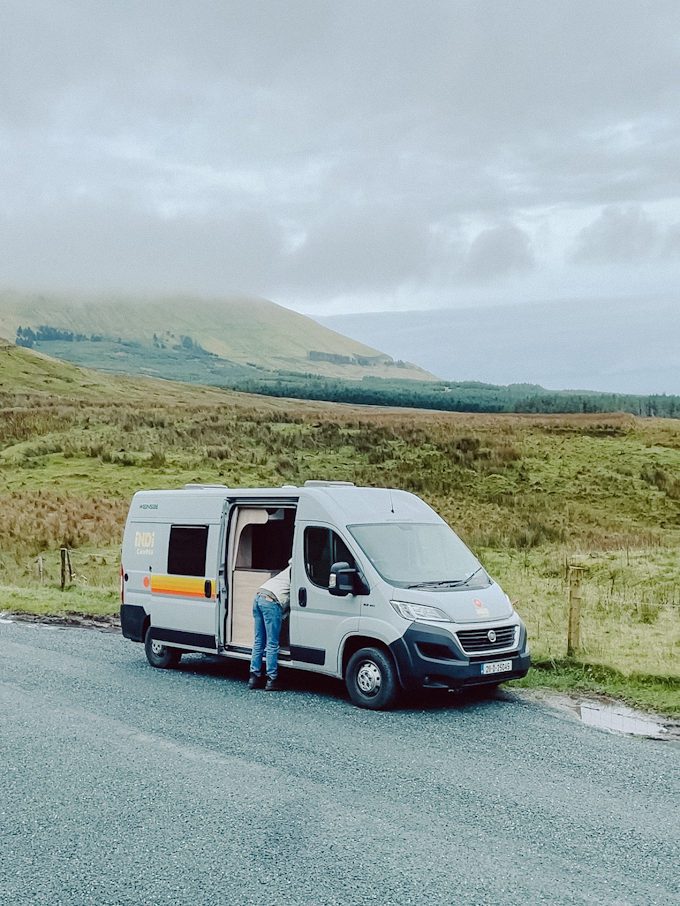
Plan Ahead Or Make It Up As You Go?
Your greatest asset when traveling for a longer period of time is flexibility.
Now, some people need to have a plan in order to feel secure, and that is totally fine! But, I want to give you some reasons why I think you should not plan your long term trip out entirely before you leave home.
We chose not to set our itinerary before we left for our trip for this reason alone: we wanted the flexibility to change plans if we wanted or needed to.
Imagine you booked a hotel for 5 nights, and about $600 in Barcelona, 6 months from now. You’re currently in Positano, Italy and flights are looking to be $300 one way. For some reason the price of flights has gone way up!
But, you have an ‘appointment’ in Barcelona with that hotel you booked months ago! You have no choice but to spend the $300 a person for your flights, or cancel your booking and not get your $600 back.
If you left your itinerary open, you would be able to take a train to Florence for so much less and get to explore Italy more, then travel on to Barcelona later when it’s cheaper.
This may seem like a trivial example, but that’s just one of the reasons flexibility is important when traveling.
I promise you’ll be able to find a place to stay even if you book at the last minute. There were plenty of days where we didn’t book a hotel for that night until the day of. And it was fun to be so spontaneous!
READ ALSO: How to Save Money for Travel – Budget & Save for Your Next Trip Travel Camera Gear – What’s In My Camera Bag | Travel Blogger Edition
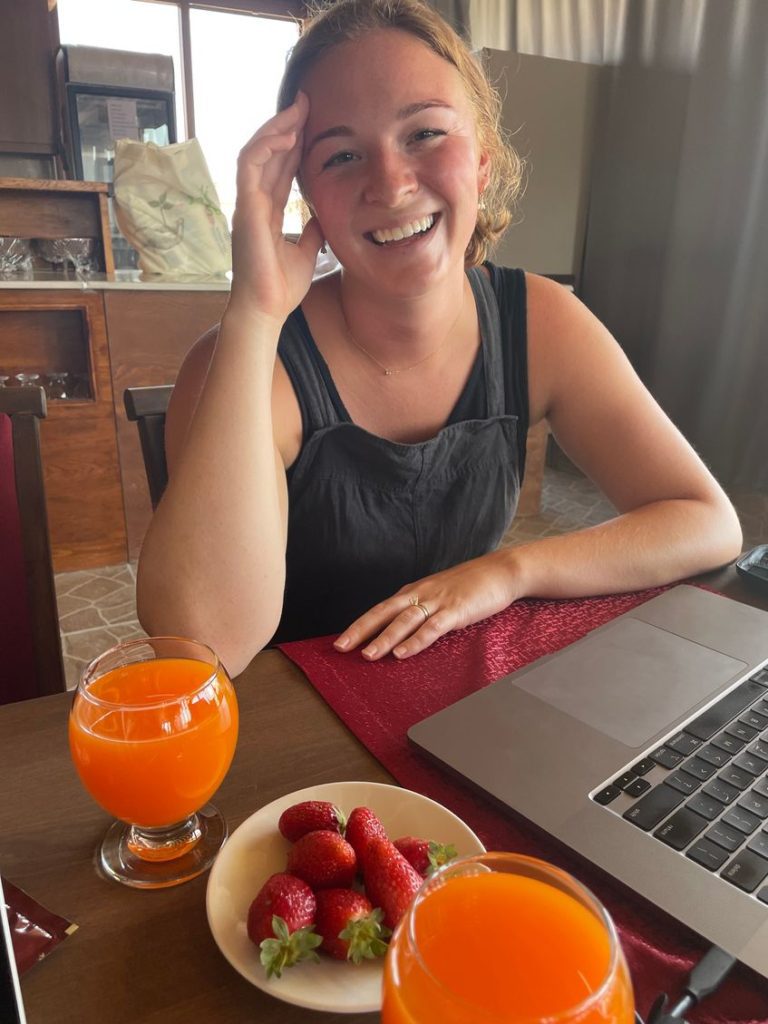
Resources To Use For Long Term Travel Planning
Google Drive is my best friend and second brain when it comes to travel planning. I create tons of spreadsheets, dump my chaotic thoughts into Keep, track bookings with Google Calendar, and share all of it with Colton so we can be on the same page.
For flights , I always use Google Flights or Skyscanner to find the best deals. They make it easy to search, and you can even track flight prices on your phone using their apps to keep an eye on the routes you’re interested in.
To book hotels all over the world, use Booking.com . There is no better website that does it all. In Asia, you can also check Agoda , but Booking.com is how we booked all of our accommodations in Thailand. It’s so easy to book a hotel right in the app the day of and have all the information you need right there. For unique accommodations, use Airbnb .
For travel planning , Wanderlog is my favorite website to keep my thoughts organized. You can plan a very in depth trip, or use it to brainstorm ideas and keep them organized. It’s free to use, and there is also an app you can download to your phone.
For transportation planning , use Omio , Rome2Ri o, or Google Maps . You can find available itineraries, transportation options, and prices. Plus, Omio and Rome2Rio will show you what types of transportation are available to you from point A to point B, how much it would likely cost, and what provider to book with.
Of course, blogs, YouTube, and TikTok are also fantastic resources for planning and learning about travel!
If you’re planning a 6 month travel itinerary, or longer maybe, drop any thoughts or questions you have in the comments!

About Nikki Gibson
Nikki is a traveler, photographer, wife, and blogger. After she and her husband left their jobs and took a 6 month sabbatical trip to Europe and Asia, Nikki is writing about their travel experiences and sharing travel guides, tips, and tidbits.
Reader Interactions
February 12, 2024 at 4:44 am
Hi Nikki, My husband and I are planning to travel to Europe for 6-9 months in around 2 years. We are already planning and talking about what we want to see and do and which countries. We are torn between actually renting a base flat somewhere (Netherlands or Italy) and then do trips for a day to 3 days to different places. Or another plan is to have a base for 2 months in three different countries and do our day trips as planned. What are your thoughts on this sort of planning? We will be (60 and 61 at the time we plan to leave) This way we can also immerse ourselves in a few countries for longer periods. I would love your thoughts on these ideas.
February 13, 2024 at 8:01 pm
Hi! Sounds like an amazing trip you’re planning! I like the idea of having bases as you go that you can travel out from. I think it makes this style of travel much more sustainable. I would think that having ‘regional’ bases would be a good way to do it! That way you aren’t spending a bunch of time backtracking if you are getting further and further away from your one base. Rather, you can go in sections. Sounds amazing! You are also welcome to email me if you’d like to chat about it more at [email protected]
Leave a Reply Cancel reply
Your email address will not be published. Required fields are marked *
Save my name, email, and website in this browser for the next time I comment.
This site uses Akismet to reduce spam. Learn how your comment data is processed .
Featured Post:

Travel Credit Cards: The Secret To Affordable Flights All Over The World
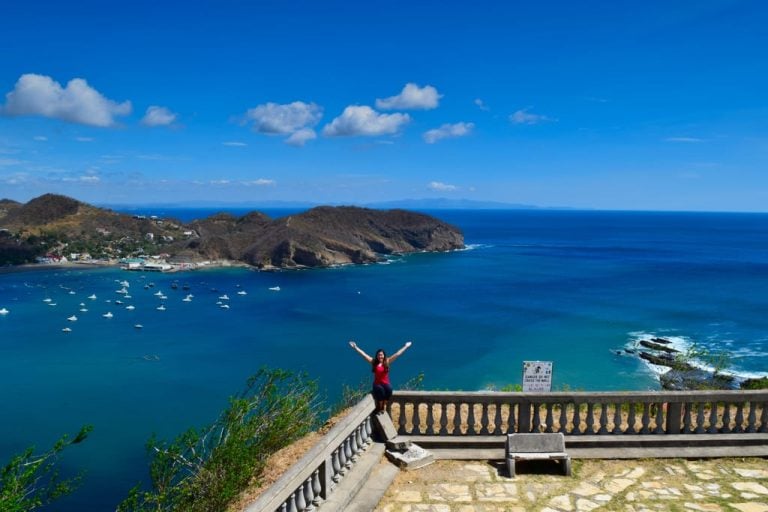
How Our 6 Month Round The World Trip Changed Our Lives (+ Tips!)
Considering a 6 month round the world trip soon? We’ve been there!
I originally published this blog post in early 2016, on the cusp of starting what we then believed to be a 6 month RTW adventure that would see us backpacking parts of Europe, Southeast Asia, and South America.
Fast forward 7 years, and it turns out that 6 months of backpacking the world turned into a full-time travel lifestyle that has spanned more than 50 countries and counting, entirely reshaping our lives along the way.
Our travels have truly been beyond our wildest dreams.
The decision to go backpacking for 6 months eventually led to us camping in the Sahara , learning to scuba dive in Thailand , climbing a volcano in Guatemala , traveling overland from Mexico City to Bocas del Toro, Panama, visiting most European countries, road-tripping on several continents, and spending a month or more basing ourselves in cities as diverse as Rome , Istanbul , and Cape Town .
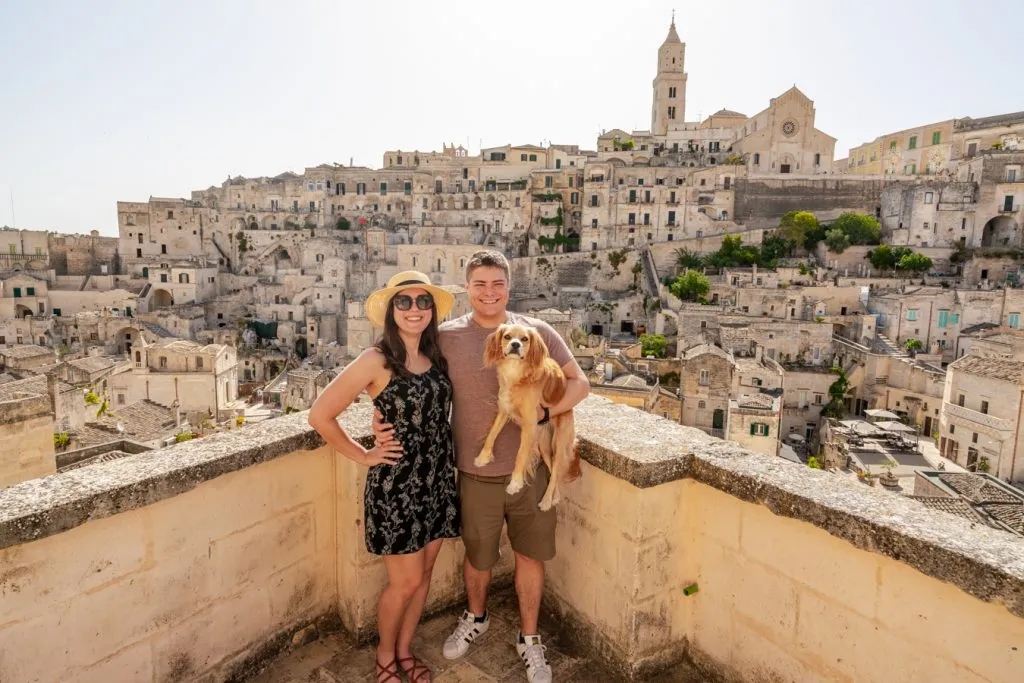
Some links in this post may be affiliate links. If you make a purchase through one of these links, we may earn a small commission at no extra cost to you. Please see our disclosure policy for more detail.
Eventually, we spent a year living in Lisbon, Portugal, and racked up enough long trips to Italy that we can say we’ve spent a year each there, too.
Oh, and we added our dog Ranger to our pack, and who also travels with us now!
For posterity (and, okay, primarily for my own nostalgia), I’ve saved our original post announcing our intention to go backpacking here, complete with all of the excitement, nerves, and anticipation that bleeds through it.
Toward the end of this post, though, I’ll share a little more about where we are now–as well as a few important things we would have done differently when planning a RTW trip if we knew in 2016 what we know now.
Table of Contents
Our Original 6 Month RTW Trip Announcement
What actually happened on our 6 month round the world trip, what we would have done differently, planning a trip.
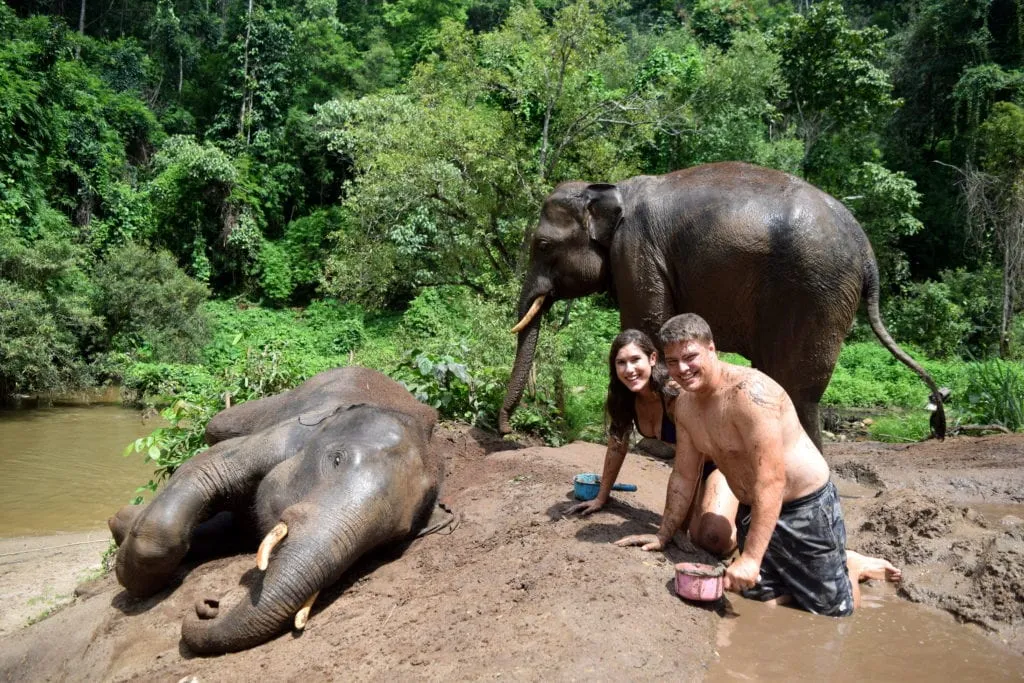
I have written and deleted and rewritten the opening paragraph of this post at least a dozen times.
It appears that the words just aren’t going to come out right on this subject, but I am so ready to have them out there that I’m just going to have to settle for adequate ones.
Jeremy and I are leaving in May for a 6 month round the world trip.
In the internet world, this is not a big deal.
In our world, it is an enormous upheaval of our entire lives and everything that we thought they would be at this point, and it is an epic adventure.
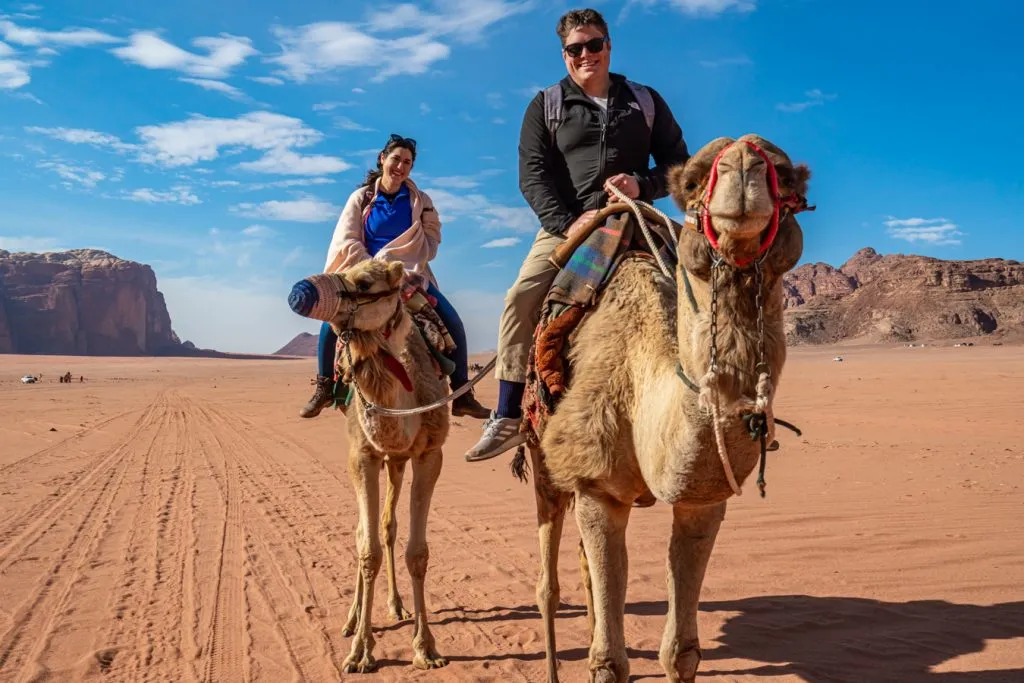
In mid-2015, we found ourselves growing more and more discontent: with our jobs, with the beautiful house we had bought less than a year before, with our city, with the entire 8-to-5, double-income, double-commute, spend-the-weekend-recovering-from-the-work-week-while-also-squeezing-in-all-your-chores life.
We had already discussed and decided that we would work toward early financial independence from biweekly paychecks (I know, this trip is not exactly moving that goal forward, but hey–we’re not perfect).
Still, though: that was a long, long way away.
Several (for now theoretical) kids away. A lot of gray hairs away. And way, way too many congested commutes away.
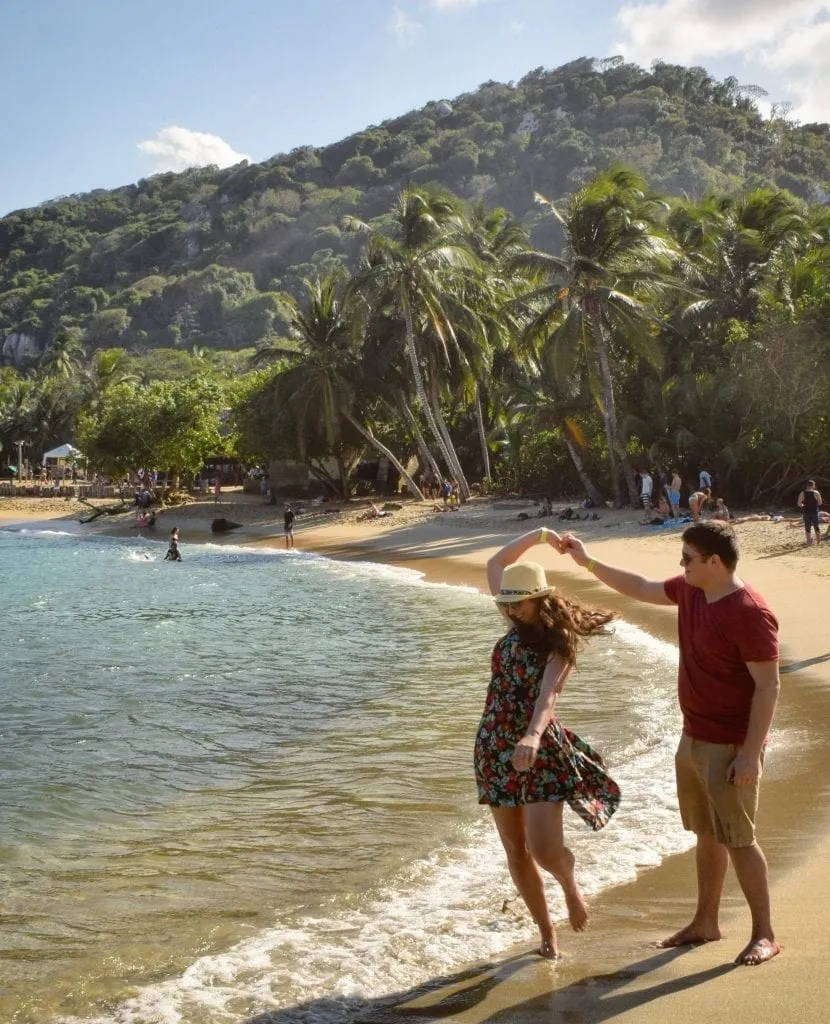
We needed out. We needed gone. We needed a whole new lifestyle.
We needed (and yes, this is hopefully the corniest line I’ll ever type), an escape clause from the contract we had apparently signed after college graduation with suburban, corporate America.
From there, we started to discuss seriously: if we were going to redesign our lives, what would they look like?
Kids were a major theme for the future, but we knew that wasn’t a path we were in a hurry for.
Downsizing was a big one: what in the world were we thinking, buying a 2600 square foot house on a tiny lot that made us feel like we were drowning in space inside and claustrophobic outside?
Seriously, that decision now feels utterly insane.
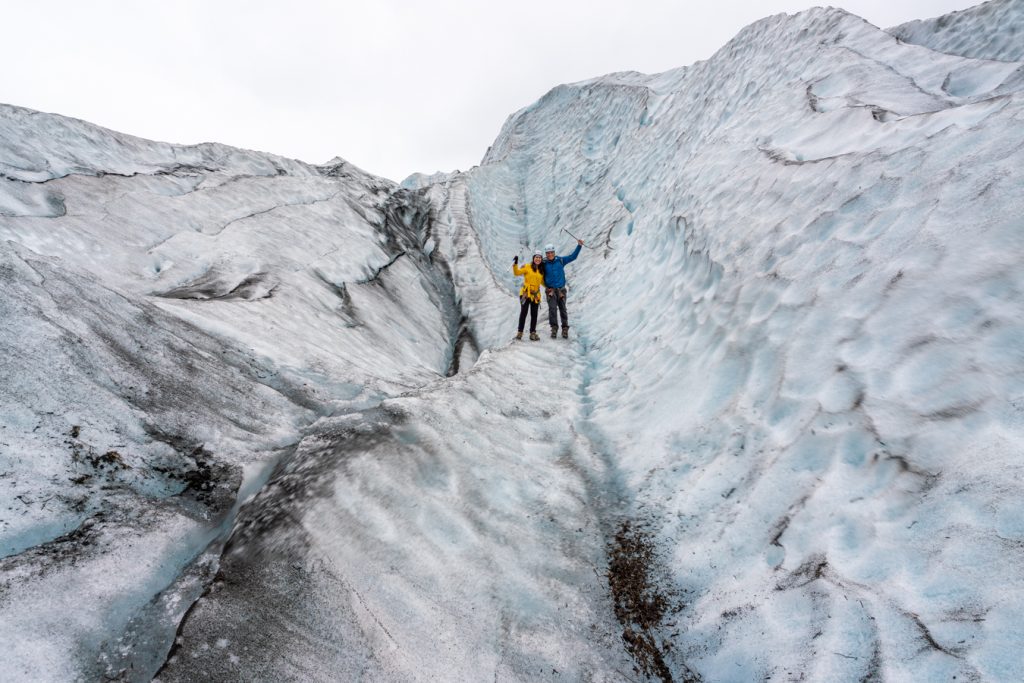
Moving away from San Antonio was also a repeated idea–when we moved there right after Jeremy graduated college, we agreed to give it two years.
We love the food (breakfast tacos, TexMex, and kolaches are all pieces of heaven), but the city feel and heavy traffic was not for us.
2023 Update: turns out we absolutely adore cities, the bigger and more complex the better (spoiler: we very happily moved to New York City of all places). We just don’t like commuting in cities or living in car-dependent neighborhoods!
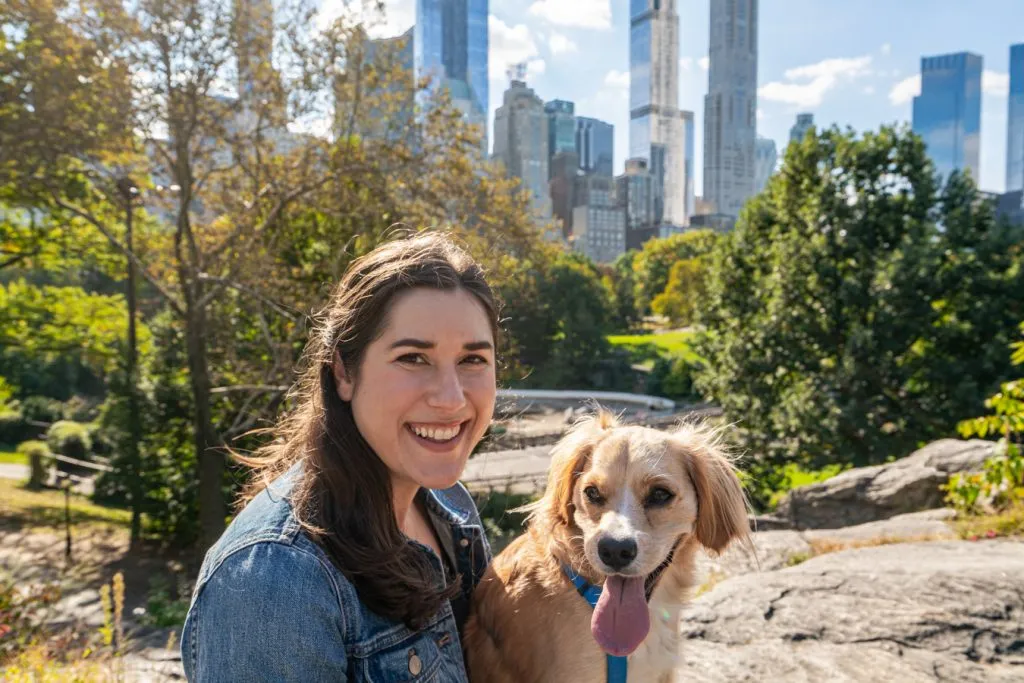
On top of that, of course, was our big, seemingly unattainable dream: travel.
Long term travel , the kind with a one-way plane ticket and plenty of time to wander as we please.
The type of travel that came with a loose itinerary, and the ability to make plans and decisions along the way.
Adding all this up, we cobbled together the vague idea of a plan: since we knew we wanted to leave San Antonio , we would sell our house.
Assuming that went well, we would take advantage of this transition period and leave on a round the world trip for 6 months.
After wrapping that up, we would return home and decide on our next chapter.
Moving back to our hometown is on the shortlist, but frankly, we’re a little gun-shy about making hardline predictions about our future at the moment.
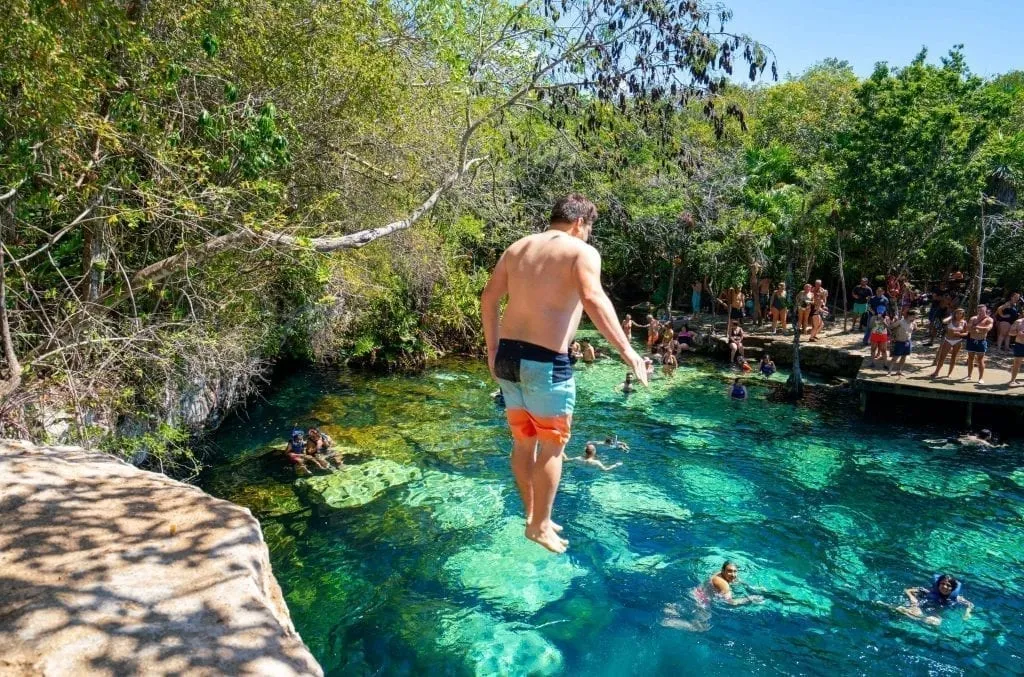
After all of the discussing and what-iffing, the doing… well, the doing went exceptionally fast. Our house was under contract less than 2 months after putting it on the market.
Our first few destinations ( Spain , Italy , Morocco ) are outlined, with plane tickets purchased and some accommodation arranged.
I have triple and quadruple-checked our budget, and we are squeezing every last penny we can into it while also holding our breaths and hoping the money lasts as long as we hope that it does.
Now, we prepare, prepare, prepare–and wait (oh, okay, and go on an awesome 2 week road trip to Savannah , Charleston , and Atlantic Beach, North Carolina ).
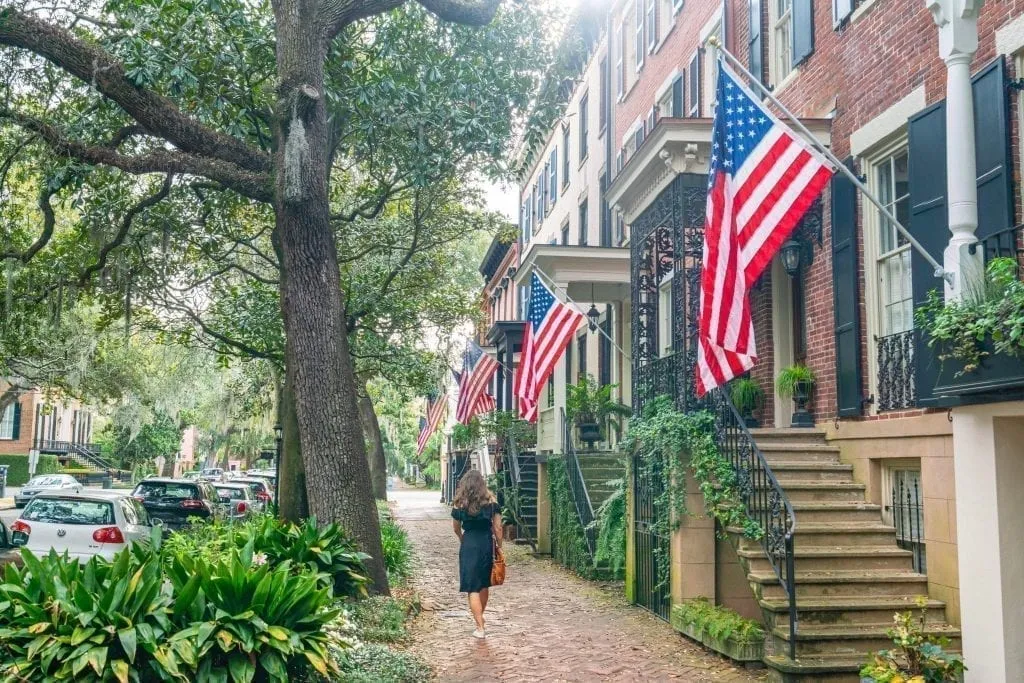
It took less than a month for our carefully-organized (read: obsessively overplanned) 6 month backpacking itinerary to veer wildly off course.
Years later, I can still remember the decision like it was yesterday.
Rather than double-back from the blue city of Chefchaouen, Morocco to Fez, where a pre-paid Ryanair flight was ready to whisk us off to… Milan ? Venice ? (I honestly can’t remember which), we decided to extend our stay in Chefchaouen once.
And then twice.
After almost 2 weeks in Morocco and nearly a month of traveling at a breakneck pace, we were already exhausted.
The prospect of the long, hot, bumpy bus ride back was just too unappealing for words.

Instead, we stuck around Chefchaouen for a while, and then headed to Tangier and hopped a ferry back to Spain, where we promptly fell in love with both the town of Tarifa and the joy of traveling spontaneously.
And, sure, yes, we lost one of our debit cards in Tarifa, only took about 10 photos of our entire week-long stay there, and one of my clearest memories of our stay is rejoicing upon finding an Old El Paso taco kit in the grocery store (our homesickness for TexMex never went away).
Importantly, though, the electrifying feeling of freedom and opportunity also sunk in during our time in southern Spain.
Here’s what our 6 month RTW trip ended up looking like:
6 Month Around the World Trip Itinerary
Spain ( Madrid , Toledo , Tarifa), Italy ( Bolzano , Lucca , Florence , Volterra , Pisa, Monterosso al Mare ), Morocco ( Marrakech , Erg Chebbi, Tinghir, Air Benhaddou, Fez, Chefchaouen).

Spain (Tarifa, Seville ), Italy ( Milan , Trieste), Slovenia ( Piran , Mojstrana, Triglav National Park, Bled, Lake Bohinj, Ljubljana), Croatia ( Split )
Croatia (Split, Hvar , Dubrovnik ), Bosnia and Herzegovina ( Mostar , Sarajevo ), Thailand ( Bangkok , Koh Tao )
Thailand (Bangkok, Koh Tao, Chiang Mai ), Laos (Luang Prabang, Vang Vieng, Vientiane ), Cambodia (Phnom Penh, Koh Rong )

Cambodia (Koh Rong, Siem Reap )… and then the USA.
Yep, after all that careful planning, we ended up not only making it to South America in our first six months of travel (that actually wouldn’t end up happening until early 2018, when we spent a month in Colombia ), but we also took a break before six months was even up.
As it turns out, planning that far into the future wasn’t our strong suit–and still isn’t.
We ended up spending a couple of months at home with family, and then a few days after Thanksgiving, boarding a flight to Mexico City that would end up turning into our six-month adventure of backpacking overland from Mexico City to Bocas del Toro, Panama –which just about brought us to the one-year mark of full-time travel.
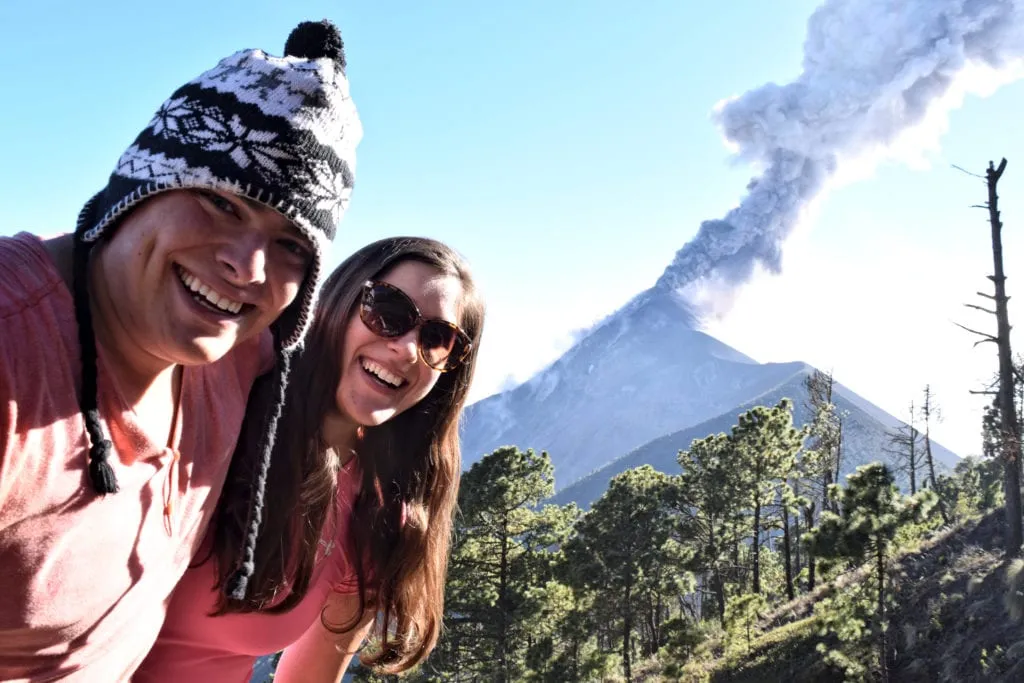
After Our First Year of Full-Time Travel…
How we pulled off the next six years and counting is mostly a story for another day (hint: travel blogging is a big part of it, and is now our sole income source).
But, we ended up staying fully nomadic until mid-2020 when the global crisis finally caused us to (temporarily) hang up our bags.
At that point, we headed back to the Lone Star State and spent a year rebuilding our business while based in Austin (2020-2021), and then moved to Lisbon, Portugal for a bit over a year (2021-2022).
As of 2023, we are happily based in NYC (for now?) and continue to travel far and wide in our pursuit of living our personal versions of a deeply fulfilling life.
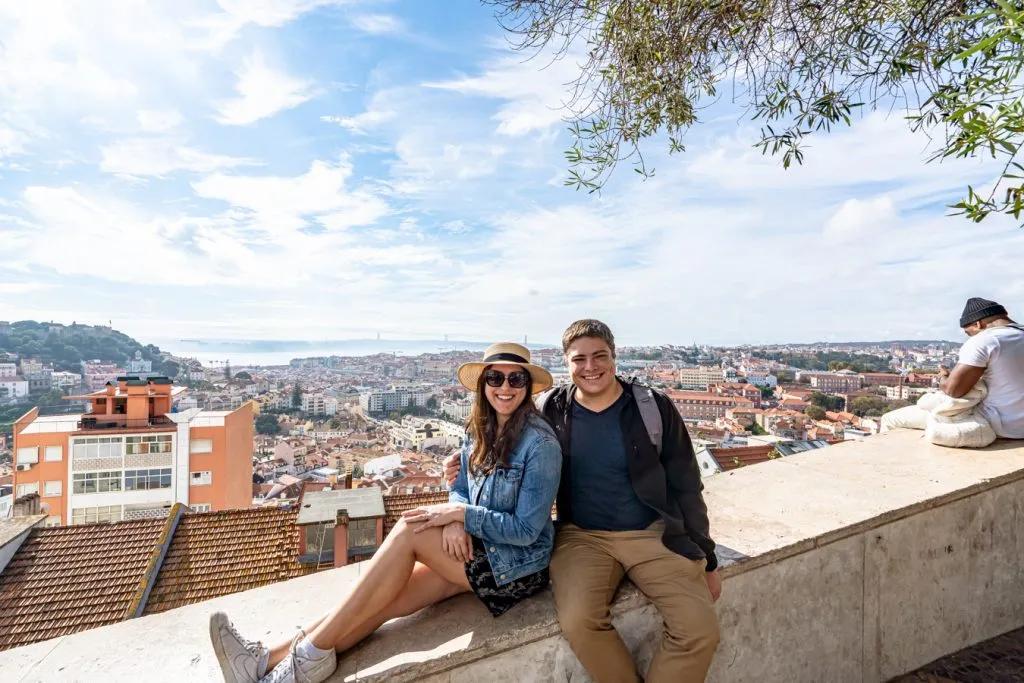
Overall, we are beyond thrilled with how our decision to go backpacking for 6 months turned out, even and possibly especially because we never could have predicted it!
That being said, we were still fairly novice travelers when we kicked off our RTW trip, and we certainly made plenty of mistakes along the way ( getting scammed in Marrakech is one memorable one).
Looking back, here’s what I would tell our ambitious, mid-twenties selves before they got started traveling the world.
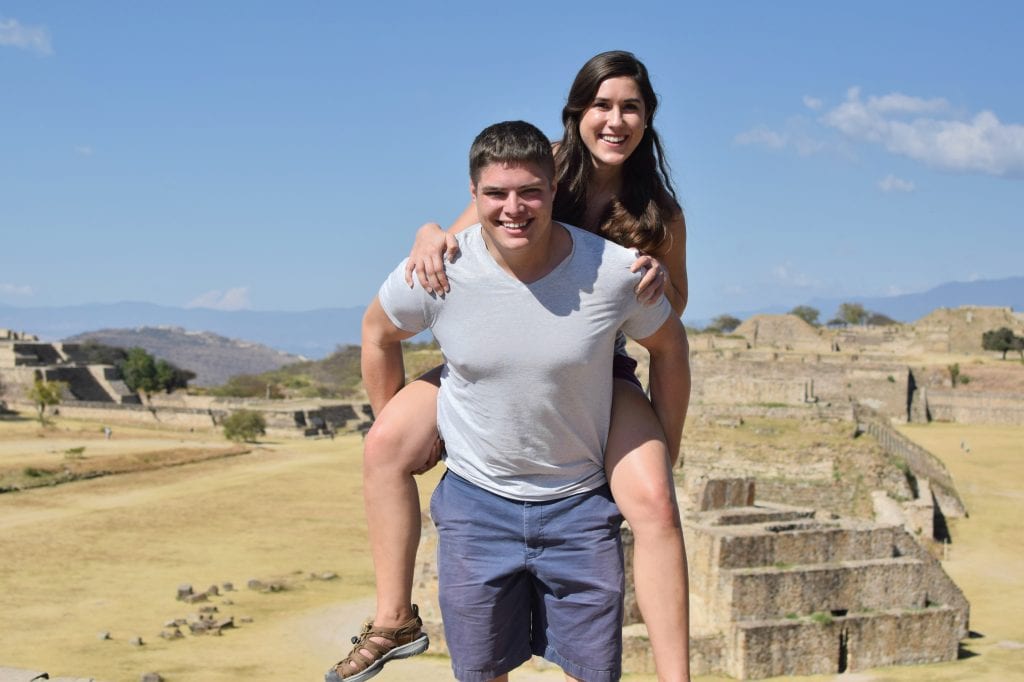
Don’t plan too far in advance.
It took less than a month for our carefully-planned 6 month travel itinerary to fly out the window.
Today, we wouldn’t recommend putting money down on anything more than a couple of weeks in advance, unless it’s a bucket list experience that you’re planning your trip around, like a festival.
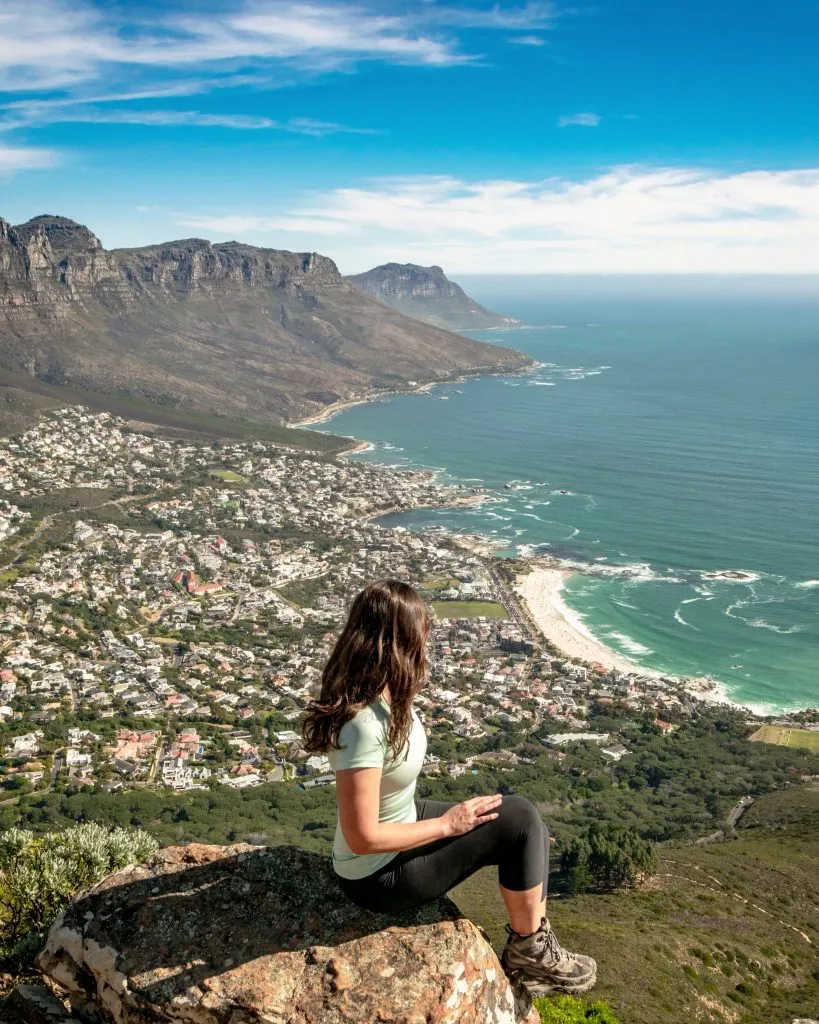
Be open to changing your itinerary.
Did we end up not getting around to a lot of things we planned to do on our RTW trip?
Most definitely–for example, we still haven’t been to Malaysia, Ecuador, or Vietnam!
Instead, we ended up with a lot of unforgettable experiences that never even occurred to us before we started traveling, such as scuba diving in Mozambique and chasing waterfalls in Chiapas .
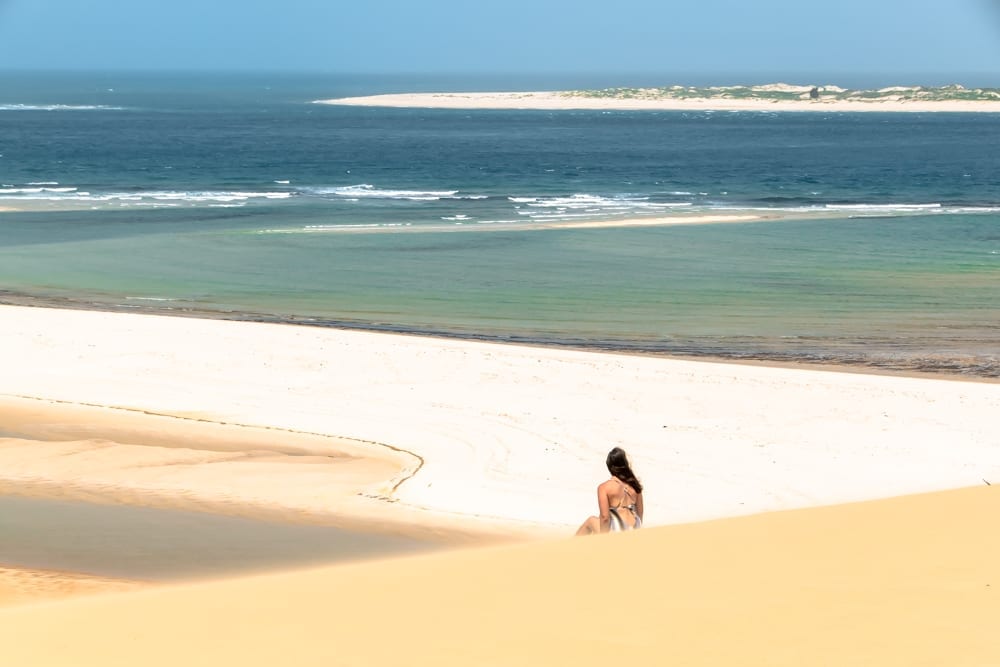
Get rid of more than you think you should.
When we initially sold our house and got rid of most of our belongings, we absolutely did not get rid of enough.
Objectively, we didn’t keep a ton, but going through the boxes years later, it’s laughable what we thought we needed.
At this point, we’ve actually gotten rid of (almost) everything and furnished places from scratch 3 times (not including our pre-travel lives), and each time the “to keep” pile gets smaller.
If you’re planning an open-ended trip, especially if you’re paying for storage, keep only what is nostalgic or entirely practical.
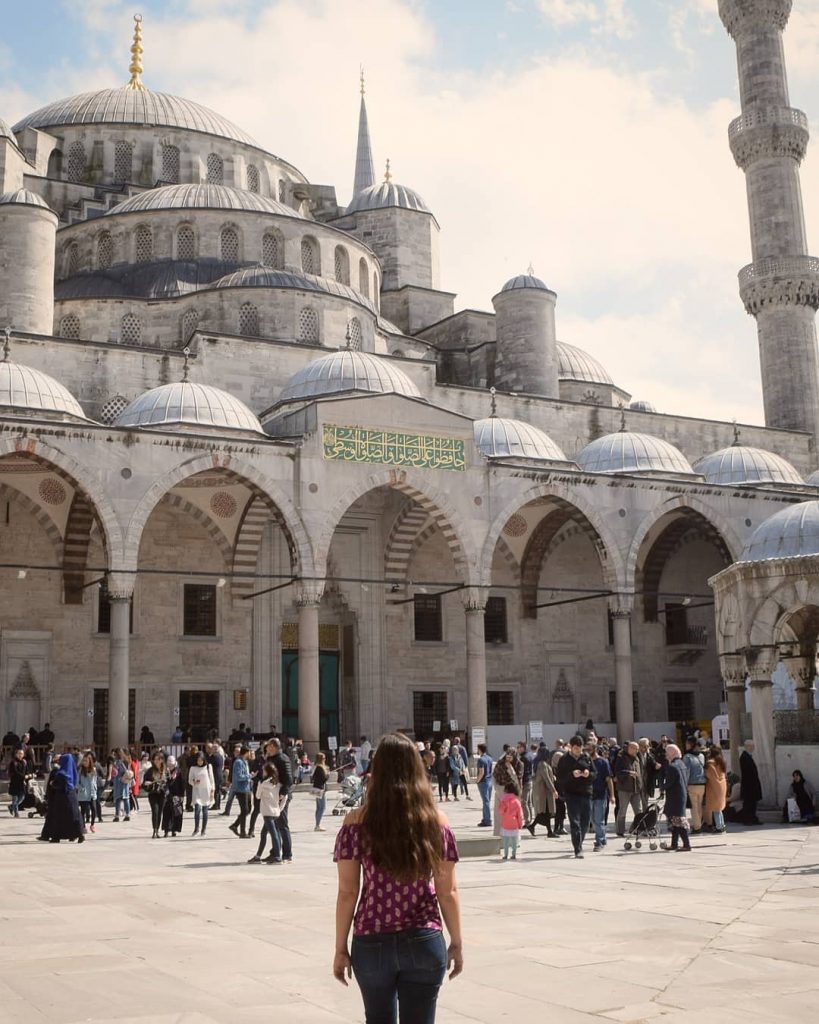
Take more photos than you think.
During the last 7 years, photography has gone from something we use to remember our trips by to a component of our business, and as such we have an absurd amount of photos… but often not the ones we would like.
Take photos of scenery, yes, but make sure to put yourself in some of them, too.
Even if you don’t like how you look at the time, the years have a way of softening edges and turning a photo you were critical of yourself in into a priceless snapshot of your happiness at the time.
I also wish we had more photos of temporal things like bustling markets, restaurant meals, and dogs and people we met along the way.
Those photos don’t seem as valuable at the time, but they tend to grow in sentimental value with the years in a way that standard scenery photos don’t.
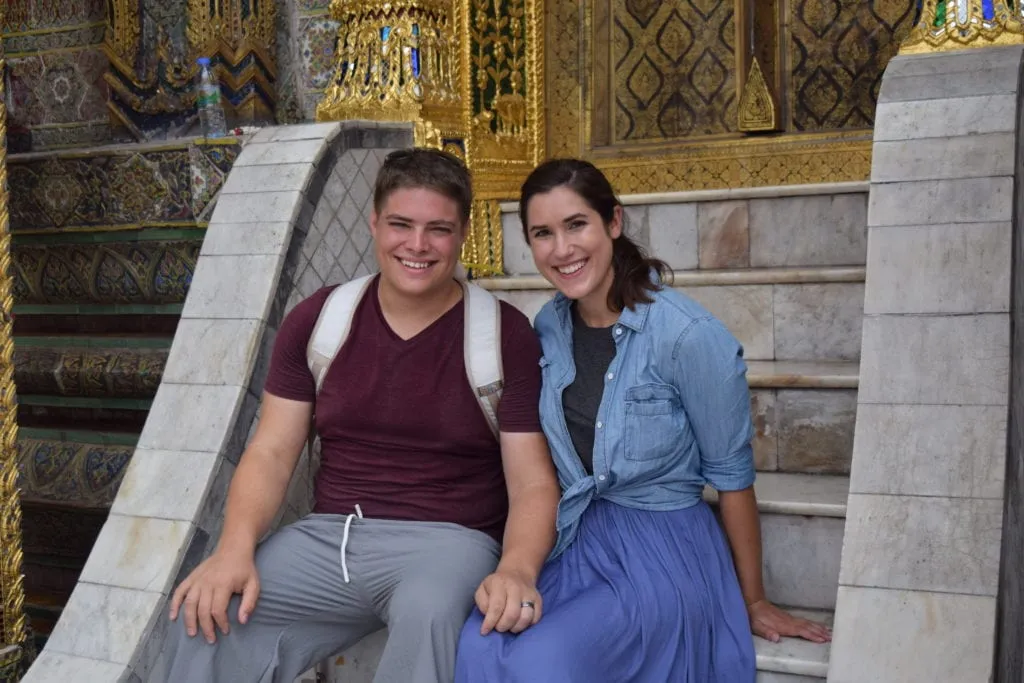
Buy a few souvenirs.
Because of the very nature of backpacking the world for six months, we bought shockingly few souvenirs during our first year abroad.
While we still consider ourselves minimalists and don’t necessarily recommend buying things in every destination, I wish we had a few more physical items to remember our adventures by.
We have exactly two surviving souvenirs from our first year: a carved elephant from Thailand and a vase from Nicaragua.
Were they impractical to carry? Yes. But we deeply cherish them both.
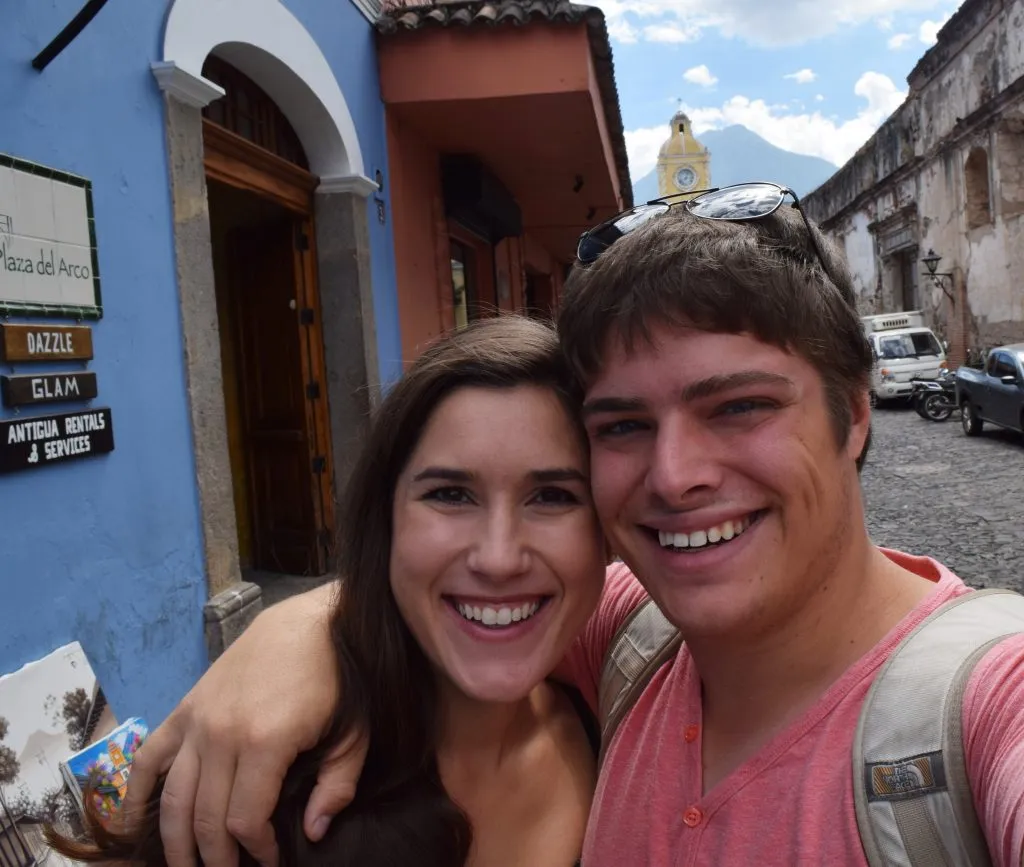
Say yes more than no.
Just a couple of months into our 6 month round the world trip, we visited Krka National Park in Croatia.
At the time, you could swim in the waterfalls there–but we were tired from a long day of travels and didn’t like the idea of riding the bus back to Split damp, so we passed.
Fast forward several years, and you can no longer swim in the falls.
I wish we would have said yes.
Most travelers who stick with it long enough have an anecdote or two like that–and the bottom line is, with the exception of incredibly dangerous things, people regret saying no a lot longer than they regret saying yes.

Pack less than you think.
Oh, how we agonized over our packing list!
From clothes to travel gear, we spent weeks checking and double-checking what we needed, trying to anticipate what we would want or wear, and making sure we wouldn’t run out of anything.
Honestly, we should’ve spent about 10% of the energy on it than we did.
It simply does not matter nearly as much as many travelers, us included, think it does before they set off.
The exceptions?
Prescription medication, and high-quality essentials that might be a pain or expensive to source abroad (like your backpack, camera, or hiking boots).
When it comes to things like t-shirts, drugstore shampoo, or flip-flops, though, you’ll find them for sale just about everywhere relevant.

Keep a journal.
I absolutely adore it and desperately wish I had kept a travel journal of some kind during that first 6 month round the world trip.
At the time, I thought blogging would be more than enough writing, but sharing RTW travel advice, or even stories, is simply not the same as notes you keep only for yourself.

Subscribe to our newsletter to follow along with our travels and to receive tips and new content via email!
We won’t send you spam. Unsubscribe at any time.
About Kate Storm

In May 2016, I left my suburban life in the USA and became a full-time traveler. Since then, I have visited 50+ countries on 5 continents and lived in Portugal, developing a special love of traveling in Europe (especially Italy) along the way. Today, along with my husband Jeremy and dog Ranger, I’m working toward my eventual goal of splitting my life between Europe and the USA.
8 thoughts on “How Our 6 Month Round The World Trip Changed Our Lives (+ Tips!)”
Best wishes for an awesome trip! I’ve done my traveling slowly, too, but in chunks – unlike you, I wasn’t smart enough to realize how badly I needed to see the world before I had three kids! Lucky for them, they got dragged around on a bunch of those trips, and now they have the itch themselves. Not sure if your RTW trip will take you places I have or haven’t been, but I look forward to seeing where you go.
Thank you! We are so excited–less than a week to go until departure now!
I think it’s awesome that your kids have had a chance to travel extensively too–we sure hope to do the same, but they certainly throw a huge wrench into things like 6 month adventures.
Happy travels!
So excited to find your blog!! I’ve always dreamed of traveling & so regret not doing what you guys did– taking months, even years, to see the world before kife, work, chires, marriage, kids made it seem so daubting & impractical. I had the bug early & at least was able to spend 3 months livong in Oaxaca Mexico before grad school started. Anyway—NOW way latter, separated, in my early 50’s and still raising my 14 year old son, I’m trying to make a plan–if it’s possible, for he & I to do some traveling. I am permanently disabled from my career so recieve a modest but stable check. Every month. Our plan of moving accross country in a couple years could be the time to put what little we keep in storage & go. He may finish school early at 16 or finish doing alternative on- line school. What are some of your best ideas to save money traveli g through Europe? Wether we do months at a time or 3 or 4 week trios then return….any udeas would be greatly appreciated!!!
Thank you so much, Ann! So glad you have found our site inspiring.
For our best Europe travel tips, including on budgeting, I recommend looking here: https://www.ourescapeclause.com/europe-travel-tips/
If you search “budget” or “trip cost” in our search bar, you’ll also find write-ups on budgeting in several destinations in Europe, including Slovenia, Croatia, Ireland, and Italy.
Hope you and your son have a chance to hit the road soon!
Do you have a blog post about your dos and donts for packing for a trip like this?!
I actually don’t! It’s on my list of things to write eventually, but my biggest advice is not to stress too much about it and to budget a bit for some clothes/accessories along the way (I still have very fond memories of my elephant romper from Thailand!)
If you search “Central America Packing List” on our website, I wrote that list during our nomadic backpacking days and it’s pretty close to what we carried for the first couple of years. We also have some general Europe packing lists that cover the bases on some of our favorite travel gear that comes with us everywhere (our current favorite anti-theft daybag, etc.)
Love your blog! My husband and I are planning to tour the world soon! Would love to connect with you on this! Thanks
That’s so exciting! We’re always happy to answer a few questions for travelers as they plan. 🙂 Good luck with your adventures!!
Leave a Comment Cancel reply
How to Pack for Long-Term Travel Around the World
Last updated on January 4, 2024 by Shannon
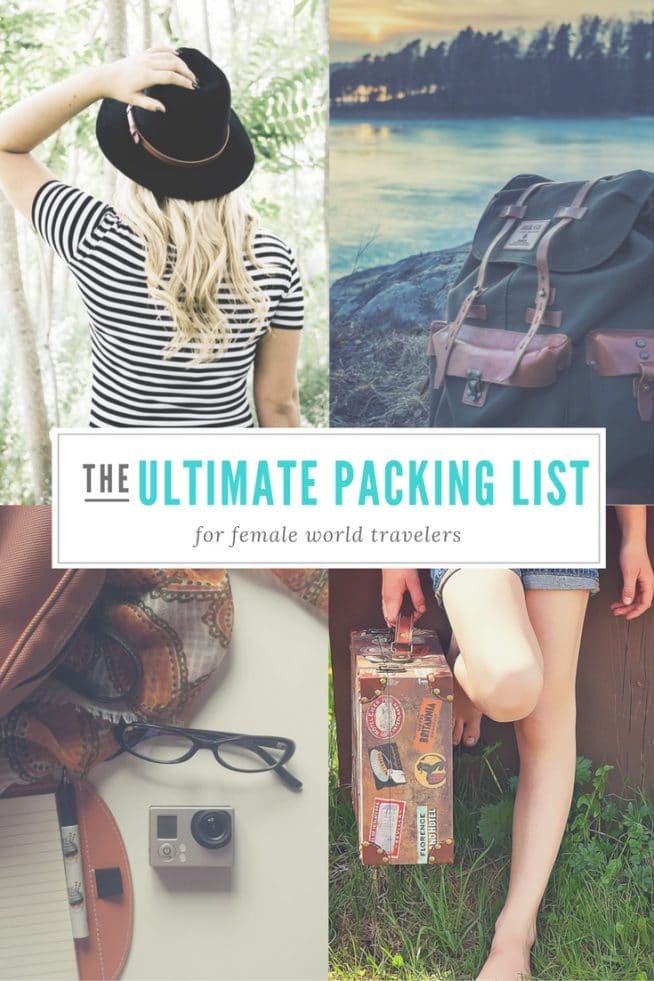
Traveling around the world for a year (or even six months) is a different beast than a one-week or short-term vacation. While the packing lists share many similarities, long-term round the world travelers often need to pack a few different things that you wouldn’t for a regular trip. Unlike packing single destination or a single climate, your entire wardrobe and gear has to different climes and locations, while still fitting in your backpack..
When I left on my first yearlong round the world trip , I had a lot of anxiety about what to pack. This post shares not only my one-year long-term travel packing list and the updates I added along the way, but also my current recommended packing list after 15+ years traveling around the world as a digital nomad (because a lot has changed since 2008!).
What’s more—I don’t just tell you what to pack—but exactly why and how I’ve found each item on this packing list useful, so you can assess if it is also worth the weight in your pack during your own world travels, whether you’re heading out for a week, a month, or a long-term trip like mine.
Skip straight to the gear and shop my entire packing list on Amazon .
Table of Contents
Long-Term World Travel Packing List
Picture this: It’s 2008, and I’m desperately combing through the sparse online travelogues. I pause at every selfie—not called a selfie back then—and carefully log in my notebook what clothes the women are wearing in their photos.
My list includes notes like “most women carrying one hoodie and two long-sleeved shirts!” and “five t-shirts and a couple tanks = enough”. I initiated my visual stalking sessions in a desperate bid to discover how many tops and bottoms women packed for their round-the-world trips , along with which brands seemed to hold up throughout their year on the road.
When I left in 2008, I posted my original packing list ( below ) so that another woman would never again go through that painstaking process. The internet is a different place now—there’s a lot of packing advice out there. But yet, every single week a heck of a lot of people still make it to this page for inspiration when sussing out their own long-term travel packing list.
So, consider this my updated, 2023 packing list for female travelers. It’s a full guide to effective packing for long-term trips (a month or more) and freely shares the lessons I’ve learned after 15+ years of travel and living abroad .
This male packing list is also well done, with great recommendations if you’re of the other persuasion. Sections below cover clothes, shoes, electronics, toiletries and more. I offer suggested brands and products, but keep in mind, I had only a few expensive pieces when I started; after 15+ years on the road, some of these were investment pieces that may or may not be worth it for your trip.
Note: As an Amazon Associate I earn a small commission from qualifying purchases—this does not affect my recommendations obviously, as this is a list of my current gear and recommendations of items that I paid for myself.
TL;DR: Long-Term Travel Packing List
- 8 tops (4 t-shirts, 1-2 long-sleeved shirts, 1-2 tank tops, and 1 UPF shirt )
- 4 bottoms (2 travel pants /jeans, 1-2 skirts , 1 dress, 1-2 shorts/capri )
- Cold weather layers: 1 pair leggings, 1 thermal , 1 hoodie
- 1 thin rain jacket
- 4-8 underwear
- 2-3 bras + sports bras
- 1 pair thin sleep shorts
- 1 pair hiking boots or sturdy walking shoe
- 1 pair Chacos or sports sandals
- 1 pair stylish sandals (flip-flops for hostels)
- 1 pair ballet flats (super optional)
Packing Essentials
- 1 set leak-proof containers
- prescriptions (scanned and stored online; printed for pain meds)
- 1 luggage lock(s) (optional combination lock needed for hostels)
- 1 quick-dry travel towel
- 1 menstrual cup
- 1 medical kit
- 1 spork (optional)
- 1 reusable water bottle and SteriPen or LifeStraw
- safety essentials : door stop, safety whistle carabiners, pencil wrapped with duct tape
Electronics
- 1 laptop/netbook/iPad
- 1 smartphone with quality camera
- 1 backup hard drive for photos
- 1 portable charger
- 1 mirrorless camera or point-and-shoot
- 2 travel adaptors (1 multi-USB adaptor; 1 set of small ones)
- 1 water purification device
- 1 pack of cards
Best Clothes for Long-term Travel
Travel-friendly tops.
There’s a good amount of variability here depending on your style preferences and where you’ll spend the bulk of your time on the road. If you’re only dipping into cold places, then opt for one fewer long-sleeved shirt because you can always use your thermal as a base-layer and then put a t-shirt over top.
You must travel with a high-quality UV protective shirt . Most people on round-the-world trips do a lot more outdoors activities than they would in everyday life. You’re sightseeing , snorkeling , trekking , kayaking, etc.
A quality UPF 50+ shirt is a must-pack. I had one on my round-the-world trip, and it’s always with me now, too—over the years I invested in a long-sleeved one for cooler hikes as well.
For the other shirts in your bag, simple cotton ones from your closet will likely suffice. Make one a bit nicer so that you can wear it out for a nice dinner. I also carry two thin tank tops ; I sleep in these, or wear them in non-conservative, hot climates. I tend to pack a range of colors for tops, though all in the same shade families so that key items layer well.
Vary your ratio of t-shirts and tank tops to long-sleeved shirts if you’re planning to visit many cold-weather places. You’ll definitely skip packing a sweater, which is why it’s so important to have a quality thermal and hoodie .
Lightweight/Versatile Dresses
Dresses and skirts an be a lifesaver since they allow you to stay cool in the heat. I tend to favor traveling with two below-the-knee skirts these days, but when I pack my travel dress , it’s pretty similar to this Columbia dress .
I’ve tried on prAna dresses over the years, which are well-made and raved about by other travelers. I’ve never found one that really hit my fashion sense, and I tend to stick with Columbia brand items because they fit my body type well (tall and slender), but I note that here in case you see one of their dresses that you love better.
I recommend getting a travel dress with inch-thick sleeves at the very least. This is more versatile in slightly conservative areas, and if you get a dress that covers more of your shoulder, it provides better sun protection too, which is important if you wear it out sightseeing!
Should it be a travel-specific dress? No! And, yes! If you’re packing for a month, stick with a dress from your closet—if you’re traveling with the dress long-term, however, travel dresses hold up better to many, many washes and are a just a better item to put on your packing list.
Pants & Bottoms
The skirts and dresses that I recommended comprise half of my “bottoms,” and that’s always a good ratio since I am most often in warm climates. I just wear my leggings under skirts in cooler climes.
In addition, I carry my fancy lightweight travel pants . I had a pair of Columbia pants when I first left and I loved them dearly, but they ripped when I took a particularly gnarly fall on my bicycle in Mexico. So, I replaced them with the closest I could find, which is a black pair of Columbia hiking pants . These pants run small—truly very small, like maybe go up two sizes if you have large hips/butt.
I might buy these prAna Halle ones though when I wear out my current high-tech pants because they are more true to size but still look good. To that end—go with black, that’s the entire point of these slim but functional pants over cargo styles from the North Face (which I also own and use on hiking trips, but just can’t fathom packing on a long-term trip because they’re so touristy).
The prAna pants are more stylish than many pants in this travel category. Besides that, I carry a pair of lightweight skinny jeans. I also carry whatever pair of black or grey leggings that I find in my drawer when packing. I don’t wear leggings as pants, but I do wear them under everything, including my jeans if it gets cold enough.
Leggings are a good idea on any packing list for long-term world travelers since they make all of your outfits a bit more versatile in warm/cold weather. I find that shorts are not very handy in conservative cultures, which you will undoubtedly visit on a long-term trip. Plus they tend to be very short or very ugly.
If you love shorts and are traveling to countries where you can wear them, consider packing just one skirt as a trade-off. Also consider packing a pair of thin capris instead of shorts, on many of my world trips I packed capris, and they were convenient—now I just prefer skirts for personal and style reasons.
I nearly always pack bottoms in tones of grey and black, and occasionally a colorful skirt; that way everything matches my tops.
Travel Skirts

Women will need a calf-length skirt at the very least to allow you to visit the temples and churches of this world. On my round the world trip, I had an ankle-length skirt that came in very handy during my four-months in India and Nepal .
Since then, in the rest of Asia and in Europe, it’s most handy to find a skirt that hits just below the knee. I own a SmartWool Merino wool skirt , which is terrific—it’s durable and travel friendly and it’s a great brand . . . but it’s a tinsy bit too short on my tall frame to work in temples. If you’re hiking and want a skirt for active travels, look here.
I pack active skirts when I head to Central America or Europe, where it’s a lot less conservative! Even then, however, I always pack at least one of these cheap Stretch is Comfort skirts that have held up remarkably well—I own that skirt in four colors, that’s how much I love it—the skirts have the perfect cost to function to style ratio. Sure, they will show sweat on a rough day, but they are cheap, functional and just the right length for conservative cultures.
Underwear & Bras
Not gonna lie, I pack eight pairs of underwear when I travel long-term—half thongs and half full-butted underwear. I do this ratio completely because of personal preference (but also because thongs are tiny, take up little space, and I don’t totally hate them).
The fancy travel underwear from ExOfficio have many doting fans among the traveler set—I own three pairs and only pack them if my long-term travels include a fair bit of trekking/hiking—I bought them to hike the Camino for five weeks and did not regret it.
That said, I’ve been fine with regular underwear that I pick up at a store when I pass through the states. Hardcore backpackers pack two pairs of underwear and wear one while washing the other pair. That is not me and will never be me, so I refuse to feel guilty for my eight pairs.
When traveling, you need enough underwear that you are not laundering clothes every day. I also pack two bras —dark and light—and one sports bra . And I carry a pair of small sleep shorts . I usually just wear one of my tank-tops to bed. In cold weather, I sleep in my leggings and wear my thermal to bed instead.
Jackets & Outer-Things
When I first left to travel, I was cash-strapped and I bought a $20 zip-up hoodie from Target and carried that around the world. It looked gnarly at the end of my year of world travel—all pilly and faded. I was actually sheepish about how shabby I looked at the end of my trip, which ended in the UK and Ireland.
My pilly jacket made it very clear that I was a budget backpacker.
Now, I’ve invested in better gear that looks nice and holds up well. You can’t do much better than an Icebreaker zip hoodie , which is made from Merino wool. It’s among my favorite travel brands because the clothes are durable and always fit well, too.
Now, I also carry this lightweight cardigan for a tad bit of protection warm climates or cool evenings (this is a perfectly nice, much cheaper cardigan for budget packers).
I wear my hoodie on planes and travel days and in cold climates. And generally, I wear the cardigan all over for sightseeing and day-to-day travel—it’s super thin so it’s not too warm in hot climates to work as a shield from the sun.
On my long-term trip, I carried this North Face fleece pullover , but now I invested in a very nice thermal under-layer (I had a cheap cotton one before) and it mitigated the need for a fleece. (With thermals, thumb holes are everything !)
Many travelers also pack a lightweight rain jacket , which is ideal during rainy and monsoon seasons, and it also acts as a thin windbreaker. Splurge for a thin one, as you they can take up a lot of space otherwise.
TL;DR: Clothes to Pack
Best socks, shoes, and sandals.
Mix and match the shoe recommendations to fit the trip you have planned. You should probably limit yourself to three shoes that, in combination, allow you to trek, do water activities, and look nice.
If you go over three shoes, then your packing list gets bloated and you won’t fit everything into a small, carry-able size bag.
Pack Boots or Walking Shoes?

Finding the right travel shoe is one of the two most important packing decisions you will make ( finding the right backpack being the other).
On my first long-term trip (and for a few years after), I carried these New Balance hiking boots and they were so fantastic that I replaced them with the exact same pair of shoes when I returned. These versatile shoes worked well because they were sturdy enough to function as hiking boots for my trek in the Himalayas, but they’re also light enough to double as general sneakers for everyday sightseeing. They are the most comfortable and cushioned hiking shoe I have ever found.
Now, however, I travel with a pair of Skechers GoWalks and I love them. These Skechers are an ultra lightweight shoe and serve me well in my slower travels now, but—and it’s a big but for a round-the-world trip—they would not have held up to a year on the road, and I would have needed to buy a pair of sturdy hiking boots for the treks I did in the Himalayas .
If I were doing it all over again, I would definitely bring my New Balances if I planned to do any big hikes (Machu Picchu, Nepal, etc). If I weren’t doing something like that, I would find a Merrell store and try on these Siren Edge Hikers so I had a better hiking boot that was a bit more versatile as a walking shoe.
Along with my walking shoes , I now have a pair of green Chuck Taylors, which I deeply love but definitely did not bring on my RTW trip—they offer no arch support and are impractical for long-term travel. Ditch them from your packing list if you’re considering it.
Adjust your shoe choices to your planned trip and activities. And consider buying shoe inserts no matter which shoe you choose as the ones that come with shoes are lame. I have high arches and buy a Superfeet insert for all of my travel shoes (the green is their classic, but use their website to determine which color best fits your foot situation. Note that if you use insoles you often need to go up half a shoe size).
Pack Quality Socks
Get ready for a fangirl rave about my love for SmartWool socks . You should not scrimp on good footwear since it’s such an important part of long-term travel, where blisters and ill-fitting shoes can really ruin a trip.
Socks are also important and can play an important part in avoiding stinky feet syndrome.
These SmartWool socks are magical. Pack at least one pair to wear during treks and outdoorsy activities. They will keep your feet dry and cushioned. If you’re planning an active trip—or if you value comfort—pack at least two pairs. Then just throw in two pairs of thin cotton ankle socks . Four pairs of socks should work for most people, especially if you have comfortable sandals you’ll be using to explore and sightsee, too. If you’re on a hiking-heavy trip, pack a pair of tall SmartWool socks .
Best Travel Sandals
On my long-term travels, I needed something versatile and durable, and there is no better travel sandal than Chacos . You’ll meet many long-term travelers wearing these because they offer good arch support and you can wear them in a wide range of circumstances, from trekking through waterfalls to sightseeing in hot climes. (And they look way better than Tevas.)
Alongside my Chacos I packed a pair of flip-flops to do the trick in hostel showers and casual situations. Like with my pants suggestion—avoid color here, just go with black.
Now that my travels rarely include hostels, I replaced my flip-flops with this comfortable gladiator sandal , which is hella stylish and yet surprisingly travel-friendly. For years, I recommended the Crocs Sexi-Flip sandal , which remains the best travel sandal out there, but they are hard to find, and the “upgraded Serena” sandal is just not the same.
I replaced my Sexi-Flip Crocs four times over the years, and am devastated that they discontinued it. The Haviana gladiators I now recommend are still quite comfortable, but they don’t transition as well to night-time chic.
One problem with just traveling with sandals and boots is that you have nothing to wear in nice situations. Carrying a versatile travel sandal is especially needed if you don’t plan to carry ballet flats. I want to like ballet flats, but on a long-term trip I’ve never found a way to keep them from smelling really bad after a short bit. Truly, I’ve tried them all and I’ve tried everything from inserts to spray deodorant—no dice.
For that reason, I don’t pack flats any more; I sometimes buy a cheap pair if I’m in a spot for a while, but I mostly rely on my gladiator sandals. It’s up to every individual woman how she decides to navigate the need for a dressier shoe (also note that most clubs in Western countries will not allow flip-flops)—this travel sandal is amazing and would work for nice occasions, but it’s best for trips under six months since it won’t hold up to near daily use for a year.
Yes, You Need a Sarong
A sarong has untold uses and every female traveler should pack one . My sarong can act as a travel towel. It’s a beach coverup. It’s an emergency bedsheet, sun protection for my face, a stylish accessory, and more.
Pick a sarong in a fun color and pattern. And while your sarong surely works as a scarf, I carry a scarf as well because I am always cold, plus it’s fun to have a few extra things to make an outfit more stylish. Consider this pickpocket-proof travel scarf as it’s mega-convenient with a hidden pocket.
TL;DR: What Travel to Shoes Pack
Best toiletries and travel accessories.
Buy a high quality liquids containers. When I first left, I had great ones from the Container Store—I still own those, but I eventually supplemented them with these squeeze tubes and love them. Whatever you buy, buy a good brand as it sucks to have them leak all over.
I am not much fussed over my toiletries, so I fill these tubes with whatever is in the bathroom when I’m packing. I’ve dyed my hair a lot in the past, so I actually dump into a tube the highly concentrated conditioner that comes with dye kits because it lasts a long time.
Other than that, it’s personal preference what you put inside; they sell a lot of major brands all over the world (Pantene, Dove, etc). Some travelers swear by non-liquid shampoo bars , but I’ve never gone that route—they’re a bit pricey and I personally prefer to splurge in other areas. If you need to save on liquids though for carry-on travel, these ethical shampoo bars are a good deal .
On the road, note that face lotions in many countries contain whitening elements, so I always pack an extra face cream and an extra quality sunscreen to last a good while. You won’t have this issue in Europe, but it’s rampant in Asia, especially.
Pack your deet repellent in its own ziplock bag.
And for dental hygiene, toothbrushes and toothpaste are a cinch to replace on the road; I use a SteriPod to avoid toothbrush funk.
As for toiletry cases, I used this small zip one for many years and it worked well. For Christmas I received this hanging one from MEC (a Canadian outdoors company) and it’s magnificent. It’s a cinch to hang from door handles or towel bars to keep everything handy, especially in bathrooms without countertops. The closest you can buy on U.S. Amazon is this Sea to Summit Hanging Bag —a good option from a go-to company for travel gear.
Go for a small-to-medium sized toiletry bag, because you may want to take it directly into showers with you. And opt for one that hangs—you’ll be so glad it does in tiny hotel bathrooms and shared hostels. You can store things like hair brushes, the deet, and other things in a small packing cube . (Here’s why I thoroughly love packing cubes .)
Prescriptions, Contacts, & Glasses
If you have prescriptions , either carry a year’s supply or research where you can top-up on the road. Carry paper copies of your prescription, and scan them and email them to yourself too. It’s dead-simple to get an eye exam and new contacts in Europe, but its trickier if you don’t speak the local language.
Also, some prescription pain meds are controlled substances in countries with harsh drug policies, so if you have any irregular prescriptions, research that ahead of time. I carried a year’s worth of contacts with me (I wore two-week throwaways) and I was able to replenish contact solution on the road.
I also carried a pair of glasses and a hardshell case. Since I am seriously blind without my glasses, I scanned and emailed myself both of these prescriptions in case I was robbed or in case something else happened—I’ve taken multiple eye exams in a foreign language; it’s not fun. I also made sure my contact supply and glasses were never stored in the same bag on travel days.
Menstrual Cup
Menstrual cups like the Diva Cup are the single best way to handle your period on the road, and this post explains what and why . I highly recommend you go this route. Truly.
Read the post. Consider the options. You’ll thank me. (True story. Long-term travelers email their thanks for this tip alone on a monthly basis).
Luggage Lock
Just yes, you need one. It won’t stop someone intent to steal, but it stops quick theft. I carried two around the world, this one for luggage and this one for my hostel lockers.
I used a Pacsafe to secure my bag during my initial years of longterm travel—its a well made item that does its job well. That said, the company has more sophisticated options , such as slashproof bags and backpacks.
Medical Kit
Start traveling with a good base for your medical kit . Once you have the base, remove the things that seem overkill (I have never carried or needed an ice pack) and then customize it to meet your needs and add a few things that are often lacking.
These oral rehydration salts have saved my life , twice. I carry many now. Also, no matter your stance on antibiotics, you should carry them. I always add a full bottle antihistamines for my hay fever, too.
Carry the basic painkillers: ibuprofen, acetaminophen, aspirin. An antibiotic like Ciprofloxacin or Azithromycin (or both). Loperamide for diarrhea. Malaria medicine, if needed. Band-aids, gauze, triple antibiotic ointment.
From there, top up your kit when you are on the road—antibiotics are over the counter in many developing countries and they all carry ORS, antihistamines, etc (and for cheaper in most cases!).
Door Stop and Safety Whistle
Solo female friends swear by both these items for giving them more peace of mind on the road. The door stop is a basic precaution in hotel rooms where the door might not latch correctly. You’ll need a doorstopper like this one , which has a very thin front edge since most hotel rooms have minimal gaps since they are fireproof doors.
Water Bottle
I drink from a stainless steel Nalgene because I prefer not to drink from plastic; if you’re not fussed, you could go with a durable collapsible bottle . Either way, having your own water bottle saves money and is convenient and prevents overuse of plastic in countries with few effective recycling programs.
Many guest houses will have refill stations. And if you bring a SteriPen or LifeStraw then you’ll need one of these too ( here’s why and how I use a SteriPen ).
Sun protection is no joke. This sun hat does the trick.
Misc Bits & Bobs.
I carry this handy travel spork and I love it. If you’re a budget backpacker, then having a set of utensils comes in handy—it’s less necessary for mid-range and higher travelers.
I also carry a tiny ziplock with things like bobby pins , safety pins , a tiny sewing kit , extra hair ties , matches , and a pencil with duct tape wrapped around it . I explain that more here with ideas for travel hacks for those travel MacGyver moments. You must pack duct tape on a pencil!
I also carry two carabiner clips and I love them dearly for their handiness . I use regular carabiners (with the screw lock) for a range of things. To attach my wallet to my purse, making it pick-pocket proof. To attach my purse strap or backpack to my chair when eating somewhere so it’s not easily swipeable. To attach shopping bags, water bottles or things to my bags on travel days.
I’ve even used it to attach my camera strap to my backpack when sightseeing to prevent a motorbike from driving by and snatching it. So cheap, so many uses.
TL;DR: Packing Toiletries & Long-Term Travel Essentials
Best electronics.
After a couple years on the road, the weird positions of working from the road caught up with me. In addition to the gear listed here, I have a complete ergonomic travel system with a laptop stand and friendly tech that prevents further carpal tunnel and RSI injuries. If you’re keen on that, I have listed out The Best Ergonomic and Portable Travel Gear .
Adapters & Charging
If you’re traveling with a good amount of technology and if you’re in a couple, then you should consider packing this handy Belkin powerstrip . Many times hotels will have just one outlet, so this is the best way to ensure your camera, phone, and gear is all charged in the morning.
I always carry a bigger multi adapter (and these have gotten very cool now, where it has a USB-C charging spot for my Mac, as well as three quick-charging USB ports!). Then, a few stray smaller ones usually float around my bag since I have a lot of electronics to charge—although now that the bigger adapters have so many USB ports I can more easily get away with just one universal travel adapter .
I carry a laptop since I work from the road ( more on that here ) and after 15+ years of travel, it’s never been stolen (knock on wood for me, will ya). I have a MacBook Air now (used to have a Dell PC).
In the past, I have used my PacSafe in sketchy areas, though I usually carry my computer out sightseeing if I am truly concerned. There is also the option of packing a cheap netbook too if you’re not working on the road. And really, a tablet could do the trick in that case too.
Read Should I Bring my Laptop for an in depth discussion as other travelers weigh in on the options.
I carry a Panasonic Micro Four-Thirds if I’m on a trip where I want really great photos. The micro four thirds (mirrorless) cameras are the ultimate travel cameras and my review of my Panasonic shares why .
Even more, NatGeo magazine named it a top travel camera. These cameras are fantastic. Basically, it’s almost to the level of a DSLR (with detachable lenses and everything) but at least half the size and weight of traditional DSLR and far nicer photos than a point and shoot. Nothing wrong with a point and shoot though!
If you’re not into high end photography and just need something that works, upgrade your smartphone to the latest model and use it for photos—the iPhones now take truly great photos in sunlight and low light.
iPhone/Smartphone
I adore my unlocked iPhone ; if you unlock your smartphone you can buy cheap SIM cards (about $2) and plans for well less than $15 a month to use while you travel. This helps when meeting up with other travelers and calling guesthouses to book ahead.
Also, the cameras and social sharing features are fantastic and mean you don’t always have to carry your bigger camera when your little one takes high-resolution photos. My techie friends put together a great list of how to buy SIM cards in various countries around the world.
Backup Hard Drive
Depending on your travel situation, you should likely bring a portable backup hard drive like this Western Digital Passport (what I carry), or the LaCie Rugged drive , which would handle rough travel. Also consider online data backup programs. I wrote a detailed post on How a Long-Term Traveler Can Back Up Heaps of Data .
Water Purification
Consider a way to sterilize your water . I have seen the LifeStraw in action, and it looks like a great all-in-one option; if this had existed when I left I would have probably carried this instead of a SteriPen, maybe.
The SteriPen is a great device, it uses UV light to sterilize unsafe water in about a minute. I used this extensively throughout India, also Laos, Uganda, and other really undeveloped countries where filtered, clean water is harder to find. I reviewed it after my trip and although you might not need it often, if you are going to very underdeveloped countries, I advise having it as a safety measure.
I also carry a Klean Kanteen water-bottle to save money and the environment (fewer plastic bottles!).
Rechargeable Battery Pack
I carry a small backup battery supply that gives me two extra charges on my cell phone and a charge on my Kindle. This will save you if you use your smartphone for navigation sightseeing or entertainment on long bus rides. I carry one like this Anker battery pack .
Kindle/Tablet
I’ve of two minds on this. I carry my Kindle Paperwhite everywhere and I deeply love it. I will not leave for travel without my Kindle . I traveled with an iPad mini too, in the past—it was all overkill since I travel with a laptop. The only strong value I found in the iPad was that my electronic guidebook was far easier to navigate on the tablet than the Kindle.
Usually, however, I carry a paper guidebook, so I am leaving the tablet with my nephews next time I pass through home. If you have a laptop and a smartphone, then there is very little value in carrying a tablet.
If you’re a reader, however, than a Kindle is invaluable. Same goes if you are a solo traveler, it’s nice to have a trove of books to pass the time. Double points if you renew your library membership before you leave; you can check out electronic books for free while you travel.
Something Silly
I carried a deck of cards during my entire RTW trip, and in the years since, I also pack a portable cribbage board when I travel with my nieces and nephews, or Bananagrams if I will be near friends who also like board games and cards.
Travel is about time spent bonding with others, and these silly items will give you a reason to encourage new friends to put down their smartphones and hang out.
TL;DR: Essential Electronics on Long Trips
How to interpret packing list advice.
Above I offered up my current recommended packing list items, as well as the rationale for or against packing each item I recommend. For a bit more help on actually deciding what is worth carrying on your back for a long trip, let’s take a look at how to interpret this information on my packing list, as well as any others you’ve bookmarked.
Know Thyself
Every person has their own style, and that should play a role in what you ultimately pack for long-term travel. If something doesn’t make sense, but yet a lot of people recommend it, consider if you can pick it up once you’re on the road. Also look at all of this in terms of what you also like in your current life.
Let’s talk about three things that other travelers have mentioned to me over the years as misguided advice.
First, leggings. I packed leggings and I love them. Even now that the leggings trend has waned, I pack a pair and use them constantly. But one blogger followed up and said my advice was rubbish and she never once pulled them from her pack.
Where’s the disconnect?
She and I wear different clothes, and we likely experience cold differently. My leggings act as my sleepwear in cold weather or hotels with A/C. I don’t think twice about using them under my pants for extra warmth (like the buses in Myanmar, which are so unbelievably frigid that I cried a time or two and had to hug my niece for hours to keep her warm).
I also packed an above-the-knee short dress that worked well in Australia and Europe, but I used my leggings to make it culturally appropriate in the 6+ months I spent in Asia. The woman who emailed didn’t find that need, or she had packed something else to work in that situation.
Instead of purchasing every recommendation on my packing list, go with the spirit. Maybe you’re a tights person instead! :)

The same could be said about jeans. I took other people’s advice about not packing them for my longterm trip, and then I bought myself a pair a couple of months into my year around the world.
Now, in the subsequent 15+ years I’ve continued traveling, I’ve never left home without my well-worn jeans. I like jeans and I favor them in regular life. For me, I value the trade-off and carrying them is worth the extra weight and drying time (they are hard to dry in monsoon season).
If you’re happy in trekking clothes or quick-dry, or perhaps you favor khakis, then take my jeans recommendation in the spirit of, “Bring bottoms that you like to wear.”
Pack What You’ll Wear
Packing lists seem to go one of two ways, either fashionable, or what I can only describe as “safari-light.” For a round the world trip, or longterm travel, you’ll likely need something that crosses between the two.
While I love those pretty packing lists for Europe that I’ve seen online, you’re going to also needed clothes of a quality and style that can last for the length of your trip and also ones that will work in a range of circumstances.
If you’re fashion-conscious, read through this list with an eye toward clothes that fulfill a role that your current wardrobe does not. Do you have clothes to hike a mountain in a conservative-yet-tropical place? While a tank-top suffices in some places, it won’t cover enough skin in others.
It’s because of that range of situations that you need to think about long-term travel as a mix of dual and often competing needs. Stylish but functional and long-lasting.
Suitable for warm-weather, but layerable so you stay warm in cold weather!
You may have never worn a rashguard/sunshirt in your life, but you should seriously think about one if you’re planning outdoorsy activities. I’m not claiming they’re fashionable, but on a long trip, they may just avoid an unwanted third-degree sunburn.
Since your daily life doesn’t likely need much flexibility, pack items with an eye toward not only what you like to wear, but what will serve your trip in the hundreds of new experiences in which you will find yourself.
Consider the Climate
Most packing list advice for long-term travel attempts to cover a huge range of climates and countries. That’s inherently trickier than packing for a two-week trip to one climate. Even though my own world travels included several continents and climates, it’s still different than your trip—and possible different in very important ways.
Let’s consider my advice to pack jeans if you’re keen on them. I love jeans and faithfully carry a pair, but in 2017, I backpacked through Vietnam with my trusty jeans . . . and they stank to high heaven.
In the past, I had always traveled outside of rainy and monsoon seasons. Sure I hit rain sometimes, but in the past, it was a few days of rain and eventually enough dry air to thoroughly dry my jeans.
This time, after three weeks with just a few hours of sporadic sunshine and nearly 100% humidity, my jeans reeked of sour clothes dampness. I shoved them in a ziplock for weeks until I could get to a new climate.
What this means is that you need to temper any packing list with adjustments for your trip. If you are backpacking Asia during rainy season, then consider swapping some cotton shirts for quick-dry fabric.
And my travels have also chased summer around the world. Although I spotted snow on my trek in the Himalayas, that was brief and my layers sufficed (I also bought a cheap jacket in Kathmandu for the hike and ditched it a few weeks later).
If you’re visiting ski destinations or snowy climes, you’ll need to either pack a heartier base layer or plan on buying/renting a heavy jacket once you arrive. You’ll also want an extra pair of wool socks.
Tiny tweaks like what I mention above are impossible to account for if you follow someone else’s packing list in full. Instead, take the packing list advice and compare it to the trip you’re planning around the world.
How I Picked My Backpack
The red backpack was my main pack and it’s a 52L Eagle Creek Meridian. Eagle Creek doesn’t make that pack anymore, but this Tour Travel Pack is nearly identical, and I own this updated version in teal .
At the time, I feared I may need something bigger, but this backpack was free from my bestie in LA, and free won out. Now that my RTW is over, 52L was the perfect size. I used this bag for five years, and only stopped to downsize and to switch to a 40L rolling bag.
52L was big enough to carry clothes for two people, although I wasn’t that disciplined to carry so little, at first. But on my world travels through Southeast Asia with my niece, we shared this backpack and each carried a daypack—that size sufficed us both for seven months.
The updated version that I own is 55L, and I use it for travels with my toddler son.
The lay-flat design and women’s fit is what sells me on using Eagle Creek backpacks—it makes a massive difference. Even now that I own this Osprey pack (which I bought to walk the Camino ), I maintain that EC has the best build design, and certainly the most comfortable for a woman’s frame.
The blue bag ( North Face Surge ) held my laptop and all of my electronics gear on travel days, and it acted as my daypack when out sightseeing. I used (and fell in love forever with) using a packing cube system to organize everything in my bag. These packing cubes saved my life on travel days when I was rushed to repack and bolt out the door.
I am a forever evangelist for packing cubes .
This bag setup was my system for six years. Eventually, in 2014 I changed to THE most amazing rolling suitcase from Timbuk2 , and I used Timbuk2’s Showdown backpack since it was a bit more low-profile and small than my trusty North Face. This setup with the two Timbuk2 bags is what I used from 2014 to 2019.
I still deeply love my rolling suitcase and will never return to full-time backpack use, but I’ve switched up my laptop bag over the years—I also have a Timbuk2 messenger bag and a Herschel backpack— this Herschel backpack is my current laptop bag, and either it or my North Face is my sole luggage when I travel around Europe because both fit under the seat in front of me and hold a week of clothes if you’re super minimalist.
(NOTE: I paid for all of these bags by the way, so it’s all my honest opinion on what works).
I travel more slowly now, so it doesn’t make sense to have the same packing system that I used on my yearlong trip. But, even to this day I swear by packing cubes. When I left the U.S. for the first time, my backpack was packed to its seams, but much of my stuff did not make it beyond Australia, the first country I visited.
I have an in-depth guide on how to pick a backpack . The size and fit of a pack is so important—it’s imperative that you take the time to pick a good one that will serve your trip well. And if you are convinced that I overpacked (I did that first year!), then this Guide to Carry On Travel might be up your alley; Erin shares great advice and it’s a good jumpstart on your research.
My Original RTW Packing List (2008)
Because I believe in the preservation of information, this is the packing list I took on my year-long round the world trip. I also maintained the dispatches from the road which cover exactly what I had to replace, send home, etc. This is the packing list I published in November 2008 when I left on my longterm trip.
The packing list above is a curated packing list that includes all the things I’ve learned over the years. :)
CLOTHES/SHOES
1 pair of lightweight tech-travel pants 1 pair of jeans 2 skirts 1 pair of sleep/athletic shorts 1 travel dress 3 tank-tops (1 dressy tank) 1 sun shirt/rashguard for outdoor activity 3 shirts/t-shirts 1 long-sleeved thermal 1 long-sleeved cotton shirt 1 fleece pullover 1 zip-up hoodie
4 pairs of socks ( love my two SmartWool socks ; plus 2 cotton) 8 pairs of underwear 2 bras 1 sports bra 1 scarf 2 pairs of leggings 1 hat 2 pairs of capris 1 pair of Chacos sports sandals 1 pair of New Balance hiking boots ( I deeply love these as hiking shoes) 1 pair of flip flops (for shower shoes in nasty hostels)
MISCELLANEOUS
PacSafe Mesh net Microfiber travel towel Sleep sheet Sunscreen Deet insect repellent 1 extra copy of my passport 1 mini sewing kit 2 carabiner clips 1 headlamp flashlight 1 mini set of eating utensils 1 pocket knife 1 travel adapter (and a couple tiny adapter tips) 1 travel medical kit: Advil/Tylenol/Aleve, antibiotic, malaria medicine, band-aids, gauze triple antibiotic ointment, cough/zinc drops Random bits: bobby pins, safety pins, sharpie, pen, duct tape (wrapped around a pencil), small scissors, etc.
Toiletry case Refillable travel size containers of: shampoo, conditioner, sunscreen for face, face wash, travel size toothpaste, floss, deodorant Toothbrush Razors Diva Cup Contacts (full trip month supply) Contact solution and 1 eye glasses case Hair ties
1 small bottle of foundation 1 compact eyeshadow duo 1 mascara 1 blush
These are things I carried in my daypack and my travel purse !
ELECTRONICS
My Laptop: (I had a Dell but now use a MacBook Pro) Western Digital hard drive (2+ TB is a mere $100 so it’s worth bringing one to back up photos!). MP3 Player (now I travel with an unlocked iPhone) Camera: Canon PowerShot (I upgraded in year two to a Panasonic Lumix Mirrorless ) Headphones for Skyping/music Kindle (as of 2012 I carry one of these now)
Journal Book: Started with “Water for Elephants” by Sara Gruen Neoprene laptop cover (it’s my computer’s raincoat!) SteriPen Pens Deck of cards My money belt (around my waist version; I used mostly for trains in India and Eastern Europe)
For insights on how I fared with the above packing list, here were my updates from the road circa 2009.
Dispatches From the Road
01/07/09 : RTW Update from Australia
- My beloved headlamp—which was so helpful at the hostels here—was lost/stolen on my outback safari to Uluru. Plan to replace as soon as possible.
- I left my nice sun hat on a bus along with my Nalgene water bottle.
02/02/09 : Update from Cambodia
- I shipped home a package of souvenirs by sea—hope it gets there!
- My jean skirt is now unnecessary; I shipped that home too.
- One pair of capris was stained beyond wear (trust me), so I left those behind in Phnom Penh.
- I bought a pair of farmer-style pants in Laos.
- Contact solution has been incredibly hard to find. Wearing glasses for now.
02/25/09 : Update from India
- Helen brought me a new headlamp to replace the flashlight I have been stuck using.
- She also brought a new Nalgene water bottle and a SteriPen— amazing, truly.
- Bought an Indian kurta and haven’t regretted it for a moment. GREAT for trains and blending in as much as possible.
- Picked up a new scarf. Lighter than the warm one that came in handy in Oz and Laos—much better for India.
- Left my purple cotton shirt behind in Jaipur, it was nubby as hell!
04/25/09 : Update from Nepal
- Did some major shopping here! And I shipped home a package of souvenirs.
- I bought a knock-off North Face rain jacket for the Poon Hill trek—works like a champ.
- Bought a safari-style hat for the trek and beyond.
- Replaced my sleep-sheet, my cheap one was too short!!
- I love my new silk harem pants. Great to sleep in and pack up tiny.
05/20/09 : RTW Update from Italy
- I sent another package home with souvenirs from Nepal; though super touristy, Thamel has incredible bargains and neat items if you dig around.
- Threw another worn out shirt away and replaced with a couple new ones from H&M. New sundress too—gave the other one away as it didn’t fit me right anymore.
- My Chacos smell disgusting and are not responding to cleaning, but they still work fabulously besides the stinky-feet syndrome. Will try vinegar soon.
06/25/09 : Update from Slovenia
- Just bought a Western Digital external hard drive to backup photos and my computer is falling apart and sadly destined to die soon.
Other Packing Lists Around the Web
If you’re still deep diving into the world of long-term packing, here are some other great research spots. If you appreciate the resources on A Little Adrift, please come back here when buying any of the suggestions from Amazon . I only linked to products that I actually use and recommend, and if you buy any of my recommendations through my link, then it costs you nothing extra, but I get a tiny commission. That commission helps keep this website running. :)
- Solo female : Devon shares an amazingly detailed breakdown of her packing list and this one is well done with interactive tabs and detailed lists .
- Solo male : Matt has a great packing list , as does Gerard from GQ Trippin .
- Family : With 2 Kids in Tow shared a family packing list for two toddler age children .
- WWOOFing : Beers & Beans have a great list and description for packing if you plan to work on organic farms .
If there is ever anything that I can do to help, please do reach out on Facebook , Twitter , or Instagram and let’s talk about how we can make your travel dream a reality.
If you’ve found this useful, pin it!

The World on my Necklace
A Travel Blog by Katie Chavez
Our 6 Month Travel Itinerary: Oceania and Asia
This post may contain affiliate links. If you make a purchase through an affiliate link, I will earn a commission at no extra cost to you. Thanks for your support.
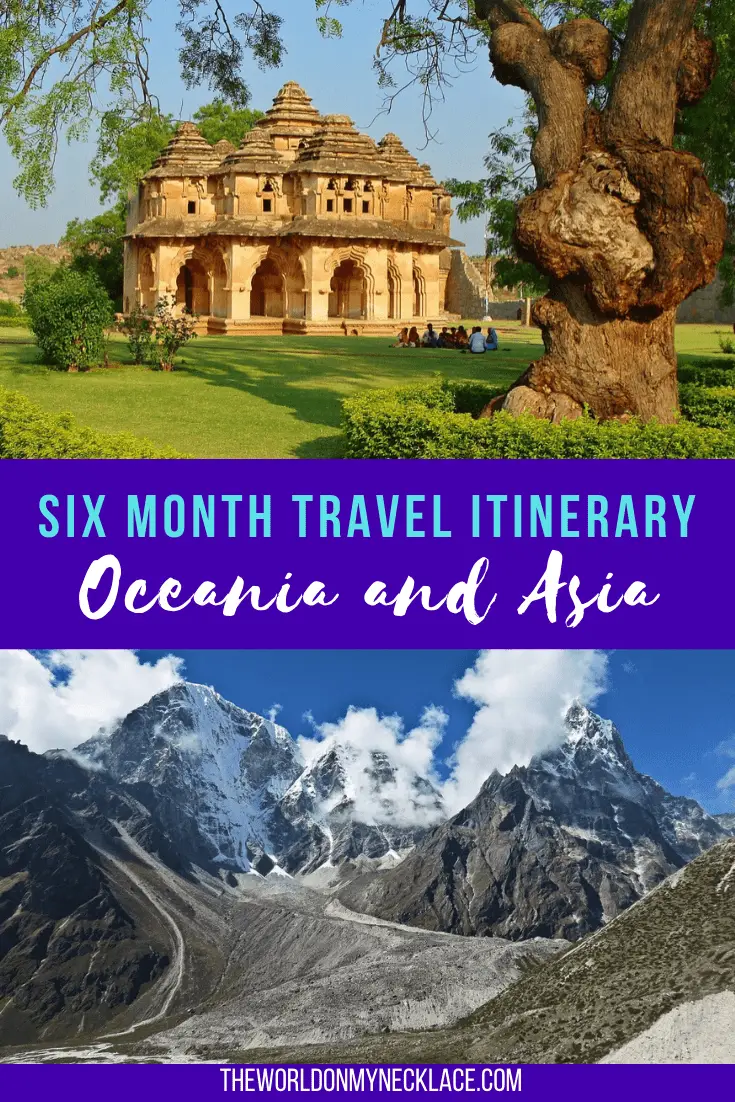
I originally published this 6 month travel itinerary in November 2019 at the beginning of what was going to be a 6-month trip. Unfortunately the last part – Nepal – was derailed by the pandemic (we finally visited in early 2023) but the rest of the trip was incredible and I wanted to republish this post to inspire anyone else that is interested in doing a similar itinerary. Enjoy!
I can’t believe I am already over a week into my big international trip! I have been thinking about it a lot the last few months, and realized that I hadn’t really told you guys what our plans were, other than a casual mention here and there.
Although I am pretty much always traveling – I am in year five of living nomadically – we tend to travel most of the year within the US.
Toby works about eight to nine months of the year building festivals and events around the country, and since July last year until April this year, I was going through the process of getting my green card, which meant that we weren’t able to do our winter international trip last year.
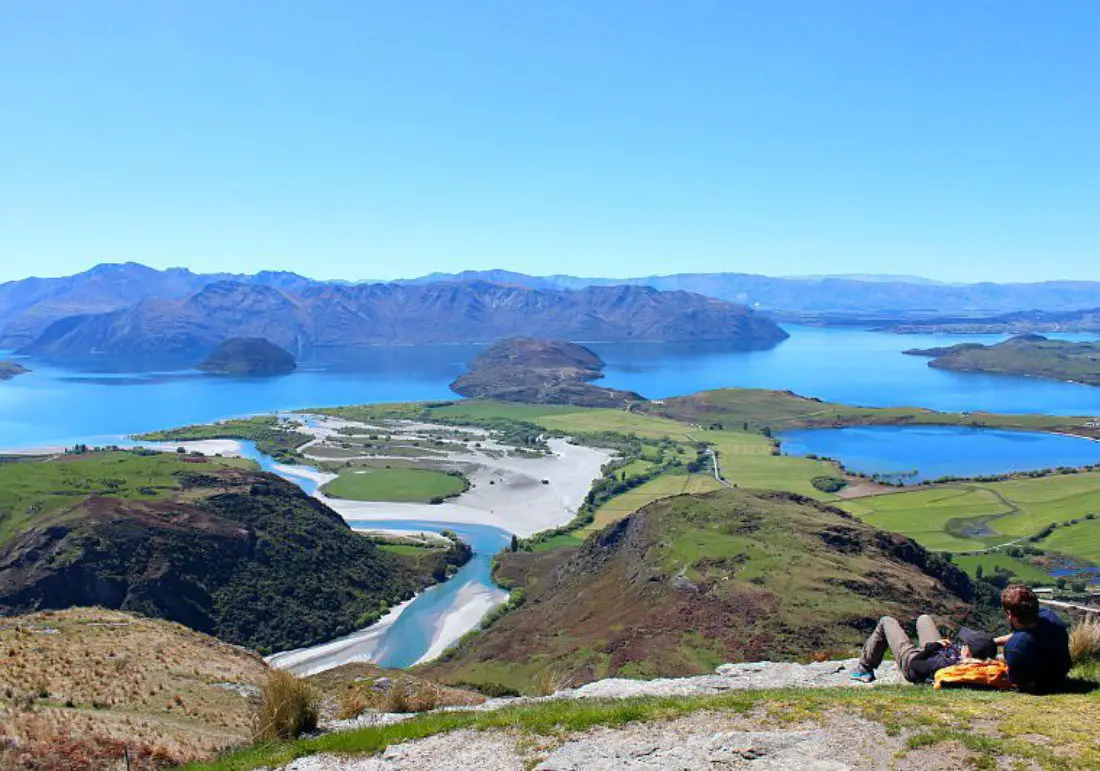
That’s why we are traveling for six months this winter, rather than our regular two-three months.
Now that Toby’s jobs are all over for the year and I have my green card, we are finally ready to do an epic international trip again, and we have been looking forward to this one for a long time!
So without further ado, here is our 6-month travel itinerary:
6 Month Travel Itinerary
End of october: hawaii.
I left the US to start the trip on the 29th October, and spent two nights in Waikiki to break up the otherwise long flight to Sydney.
I only had one day there so spent it relaxing at the beach, enjoying fish and chips and a lava flow cocktail overlooking Waikiki Beach, and eating Leonard’s famous malasadas – it was great to be back, if only for a short while.
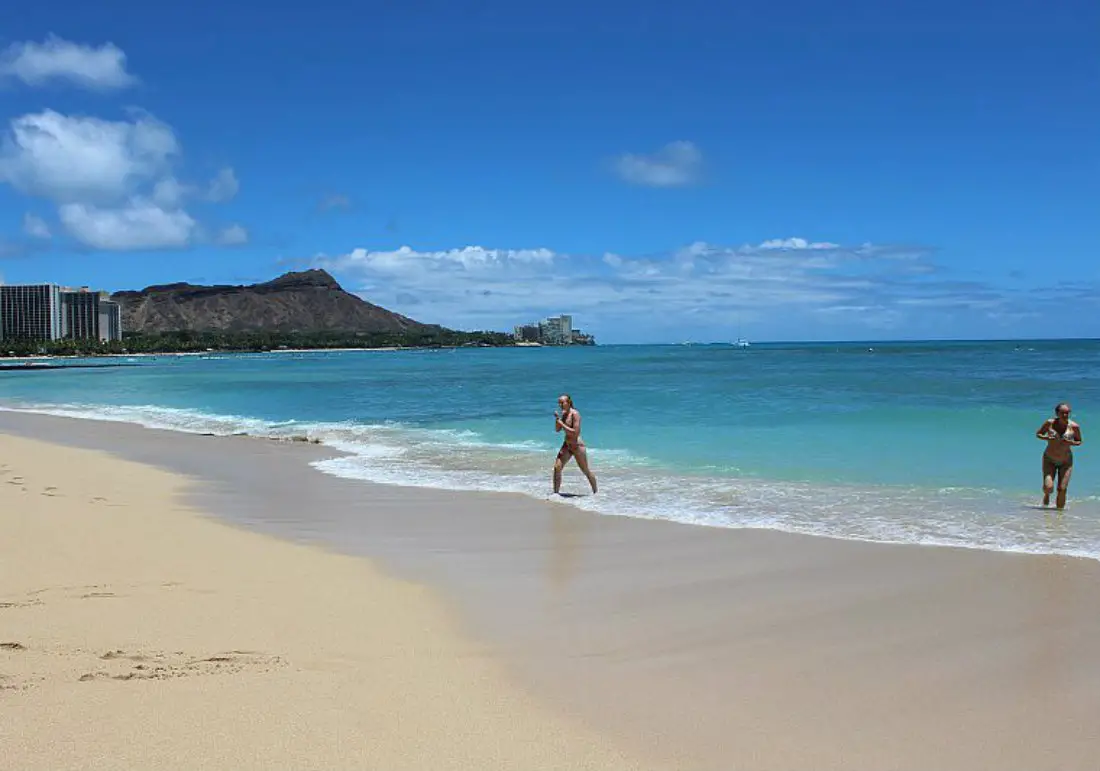
November – December: Australia and New Zealand
On the 1st November I landed in Sydney where I spent six nights visiting friends, returning to my favorite haunts from when I lived there, and beach-hopping and hiking. I love visiting Sydney in spring because the jacaranda trees are blooming all over the city and it is so pretty.
From Sydney, I flew home to New Zealand – my first time back in 16 months – which is where I am now.
Toby was meant to be joining me here but we found out his visa was going to take months longer than we originally thought, so we changed our plans around, and I will be spending four weeks here before joining Toby in Asia, visiting friends and family in Auckland , Tauranga, Hamilton, Matakana , and Rotorua.
Me and my bestie Kurt are also planning to do a little road trip through Taranaki, spending two days hiking the Pouakai Circuit in Egmont National Park, then visiting a friend in Tokoroa, and visiting the stunning Blue Spring in Putaruru.
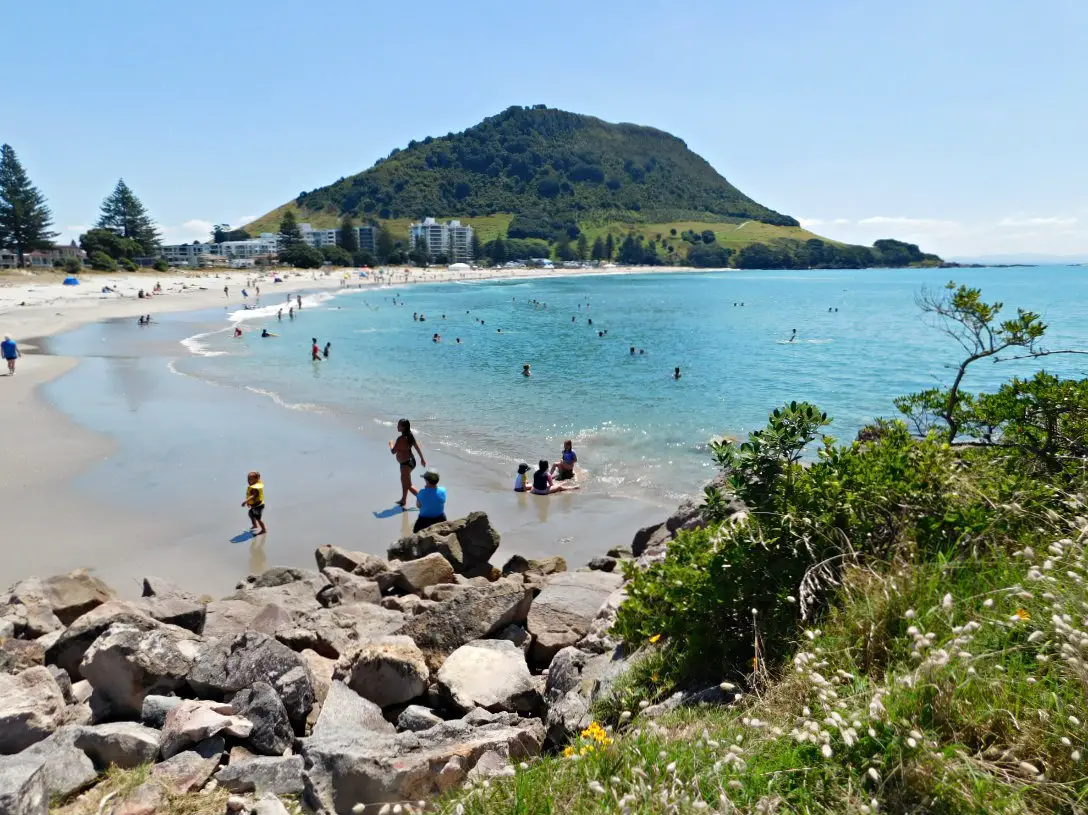
December – January: Thailand and Laos
We were originally meant to be spending this time traveling around the South Island of New Zealand, but I am excited to return to Thailand to visit one of my last countries in Southeast Asia – Laos.
We start our time in Bangkok at the beginning of December for a week, where I have to get more work done on my teeth. Hopefully, we will also have time to explore more of Bangkok – there are so many things to do in Bangkok !
From there we want to visit Koh Kood, Koh Mak, and Koh Chang, meant to be home to the most beautiful beaches in Thailand, then after a possible return to Bangkok to have stitches cut out, we will fly up to Luang Prabang in Laos, working our way south to Cambodia.
I can’t wait!
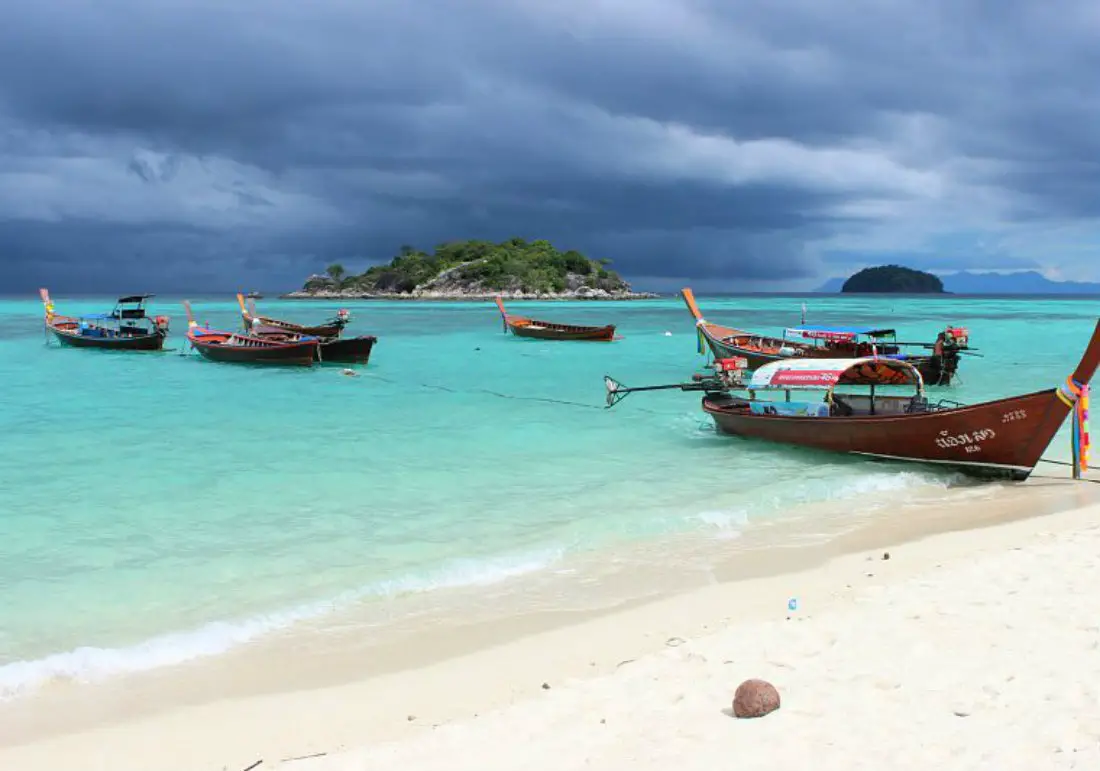
January – February: India
India has been on my travel radar for a very long time, and we are finally going there for a month from mid-January!
The plan is to be super tourists and visit Rajasthan , Delhi, Varanasi, and Agra for our first visit, but as we have a whole month I am hoping we can get a bit off the beaten path in this region.
In Rajasthan, we want to take trains between Jaipur, Udaipur, Bundi, Jaisalmer, Jodphur , Pushkar, the Great Thar Desert, and Ranthambore National Park. If you have any other places we have to visit in Rajasthan – please let me know!
My Dad is going to join us for the whole month, and my brother-in-law is planning to meet up with us at some point too.

February – March: Sri Lanka
Sri Lanka is another country that I have been wanting to visit for a long time and we are finally making it there! I want to travel all over the country, visiting historic sites, beautiful beaches, tea plantations, and mountain villages.
I am yet to start my real travel planning for Sri Lanka but know a few key places I want to visit including Kandy, Ella, Galle and Sigiriya.

March: India
As you can get two one month visas for India pretty easily these days, we thought we would return to celebrate Holi after our time in Sri Lanka for around ten days to two weeks.
I have heard that the Holi celebrations around Goa are pretty great so we will probably explore some of the more chilled beaches there, then head east to Hampi, an ancient village and UNESCO World Heritage site that is full of temples.

March – April: Nepal
Our month to six weeks in Nepal will be all about hiking – well mostly. I want to do at least two weeks of the Annapurna Circuit, if not the full three weeks, which will take us between mountain villages and stunning scenery in the Himalayas.
I am also interested in doing the Poon Hill hike while we are there, but that will depend on how we are feeling after the Circuit!
Along with hiking the Circuit, I am also looking forward to experiencing chaotic Kathmandu and chilled Pokhara.

May: Hong Kong and Macau
We should be finishing up in Nepal around the end of April or beginning of May and looking to fly back to the US. From what I have seen, a lot of the flights from Kathmandu into the US are through Hong Kong , so depending on the state of affairs there in May, I want to add a one-week stopover there.
While in Hong Kong, I would also like to spend a day or more in Macau but we will see.

So that’s it, our travel plans for the next six months! To say I am excited is an understatement – it already feels good to be back out on the road.
If you are planning your own extended trip, make sure you get travel and health insurance. Safety Wing is my go-to and they are cheap and easy to claim with – it also auto-renews every month unless you turn it off so you don’t have to think about it.
Check out my Travel Itineraries and Bucket Lists for further inspiration:
- My Travel Bucket List for 2019
- My Travel Bucket List for 2018
- My Travel Goals for 2017
- My 2015 Travel Plans Revealed
- Update and my Travel Plans for 2014
- Summer in Alaska Itinerary
- The Ultimate Big Island 7 Day Itinerary
6 Comments on Our 6 Month Travel Itinerary: Oceania and Asia
This trip sounds amazing! I’d love to spend six months in this part of the world. Can’t wait to hear about all of your adventures!
Thanks – I am so excited!
Wow, I really envy you your Nepal plans, it looks so beautiful there! I hope you would have an amazing time there (and everywhere else). 🙂
Thanks Lucie – so excited about Nepal!
Happy and safe travels! Glad to see you’re back on the road this winter. I’ve been a lot more circumscribed this year due to moving costs and changing availability of work and things, so I’ll live a little vicariously through you!
Hey Lisa – great to hear from you! Are you still in the UK? Yes I’m excited to be doing a big International trip again 🙂
Leave a Reply Cancel reply
Your email address will not be published. Required fields are marked *
This site uses Akismet to reduce spam. Learn how your comment data is processed .

Jetsetting Fools
Travel Far. Discover More. Spend Less.
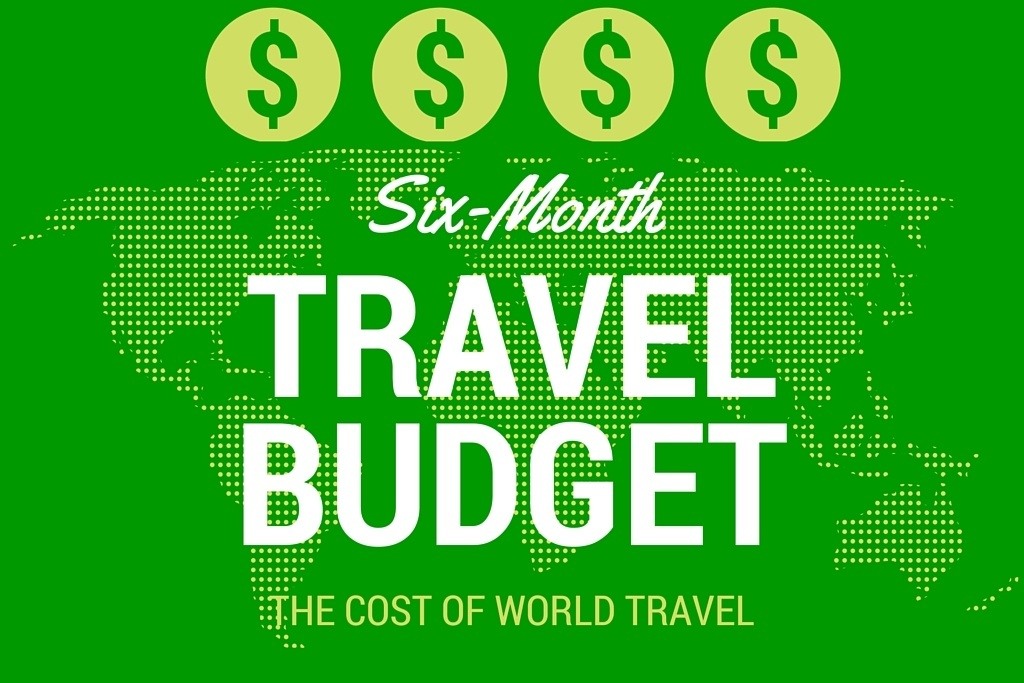
Six-Month Travel Budget: The Cost Of World Travel
Welcome to JetSetting Fools, here you will find our best travel tips for destinations worldwide. Some of the links on this site are Affiliate Links and if you use them to make a purchase, we may earn a commission. For more information, read our Disclosure Policy .
Our full-time travels for the past six months have taken us to Australia, the Balkans (with a detour to Rome) and the Netherlands – and we are drastically under budget from a year ago, with an average spending of just $53 per day! We took what we learned from budgeting for our year-long, round the world (RTW) trip and have made a few adjustments that are clearly reflected in our six-month travel budget review.
First, we’ve slowed our speed of travel substantially with longer stays – clocking our longest stay during our travels at 10 weeks in one place. Second, we’ve added Housesitting into the mix. While housesitting in Melbourne, Australia and Nijmegen, Netherlands , we completely eliminated our housing cost (in exchange for taking care of pets!).
During our RTW trip, we targeted spending $100 on average for daily living expenses – and came in under, spending an average of only $89 per day! We still use that figure as a general measurement for our spending, but are mostly concerned with overall averages. We also keep track of other expenses – flights, insurance, technology and other admin fees – but exclude those from our daily limits and tally them as in a separate report.
Six-Month Travel Budget for Daily Expenses
Tracking our dollars has become a habit – a good habit, we believe – that allows us to more clearly see where we spend our money.
Lodging – $3,158.50 Total | $17.25 Daily Average

Housesitting is an entirely different way of traveling. In exchange for looking after someone’s home and (usually) caring for their pets, we get a free place to stay. No money is exchanged, as it’s mutually beneficial for both parties. The traveler stays in a home free of charge and the home/pet owners get a caregiver without cost. Since the unique situation lends itself to immersing into the community, we like to look for longer stays to really make it worth it.
While housesitting has accounted for 17 weeks of our travels for the past six months, we still had 75 nights in which we paid for accommodations. If we average the cost of paid accommodations only over those 75 nights, it comes out to $42/night, which is almost exactly what we averaged on our RTW trip.
The exchange of pet sitting for free accommodations has allowed us a bit more freedom in where we decide to travel and the types of lodging we secure. Staying near the center of Rome ($68/night) to meet up with family and in a modern B&B in Nijmegen ($86/night) were easily averaged out over the past six months with the housesitting piece in place.
We spent 52 nights in the Balkans – and averaged $31/night in accommodations. We used Airbnb exclusively for our stays in the region, which included Croatia ( Zagreb , Rovinj , Zadar , Split ) and Bosnia-Herzegovina ( Sarajevo ).
We bookended our Melbourne housesitting experience with a week-long stay in Seaford, Australia ($52.50/night) and a five days in Hobart, Tasmania ($58.25/night).
Food – $2,996.25 Total | $16.37 Daily Average

If there has been one consistency in all of our world travels, it is our ability to be frugal with food . In the past six months, however, it has dipped slightly from our standard $20 per day to $16.37. We attribute the drop to staying in one place for a longer time. We can buy in bulk.
Eating out – especially in countries like Australia and the Netherlands – can be expensive, so most of our meals in those places were home cooked. We (and by ‘we’ I mean Sarah) made a diligent effort to find and use recipes that allowed us to sample the local cuisine. Pumpkin soup in Melbourne and stamppot in Nijmegen were two of our favorites.
In the Balkans, however, food is significantly less expensive. We were able to eat out at nice, sit-down restaurants for about $30 total – including wine. Take-away options of local specialties (like burek, cevapi and kebabs) were about $3 each.
We found affordable places to eat amazing food in Rome as well. A heaping portion of the pasta of the day cost about $6.50 and a decent portion of pizza-by-the-slice cost about $3. But, the big winner in Rome is gelato, where two scoops cost less than $2!
Drinks – $1,847.75 Total | $10.24 Daily Average

For us, having a few drinks is a social event. It’s more about interaction than intoxication. We tend to be fans of local craft brew over mass-produced beers, which ups our price in most regions. A pint of local beer in Australia can cost as much as $12 – but we still managed to create mini-pub crawls! In the Netherlands , it is significantly less, but not exactly cheap. In the Balkans, craft beer is more difficult to find, but when we do, it’s not much more than any other beer on tap and costs about $3.
Transportation – $1,026.50 Total | $5.60 Daily Average

Our transportation category includes everything that isn’t a flight. We never rent cars, generally steer away from taxis and actually prefer walking or biking whenever it is feasible. Tickets for mass transit – buses and trains – are mostly what make up the costs for our transportation. Although, occasionally, we use airport shuttles when early flights or lack of alternate transportation requires it.
In Melbourne, we stayed in a suburb, but well-connected trains swiftly ushered us into the city and surrounding areas for about $2.50 a ride. We thought we wouldn’t be able to visit Hobart without a car , but found it to be quite easy (and affordable!) with the local bus system.
In the Balkans, we used long-haul buses to get from Zagreb to Rovinj, Rovinj to Zadar, Zadar to Split and from Podgorica to Sarajevo. These weren’t necessarily expensive, but weren’t dirt cheap either and cost anywhere between $15 to $30 per ticket.
Mass transit in the Netherlands is brilliant. A single transportation card is used for buses and trains throughout the entire country – and when using the card rather than paying cash, it activates discounted rates. The bus from where we stayed in the village of Beek-Ubbergen to the city of Nijmegen was $2 per ride and the train to Amsterdam was about $20.
Entertainment – $279 Total | $1.52 Daily Average
Our entertainment costs are at an all-time low, but that isn’t all that surprising to us. Not only are we excelling at seeking out affordable alternatives to pricy tours, we are inherently easily entertained (which bodes well for us!). In Melbourne , we took advantage of many of the city’s free offerings and cut out the expensive tours. Entertainment is also affordable in Croatia, where dipping our toes in the Adriatic Sea and watching sunsets didn’t cost a kuna. Our day Touring Istria , which was a highlight of our time there, was provided by the tourist board, but we did pay entrance fees to Krka National Park ($14 each).
We were in Rome to meet up with family, and we were glad to find that Sightseeing in Rome was much more affordable than expected ($13.25 Forum/Coliseum combo pass and $22 for entry to the Vatican Museum and Sistine Chapel – both of which were full-day activities). The extent of our entertainment budget in Sarajevo was spent on an afternoon exploring the Abandoned Olympic Bobsled Track . During our two-month stay in the Netherlands, we were committed to updating our blog, which didn’t leave much time for entertainment. When we did tear ourselves away from our devices, we explored the beautiful nature surrounding the village, with our dog– a cost-free activity.
Miscellaneous – $431 Total | $2.35 Daily Average
Our miscellaneous fees are random fees that don’t fit into any other category. For example: Pay-for-Toilets, postage and clothing items. But, honestly, the biggest cost in this category was the $225 we spent for Wi-Fi in Australia. (It should have gone into our Technology column, but got pushed into this category by mistake.)
Total Six-Month Travel Budget for Daily Expenses– $9,766 Total | $53 Daily Average
With the combination of free accommodations through housesitting and our decreased spending on entertainment, our overall daily average for daily expenses has plummeted. Now that we have completed our main administrative objectives, we anticipate venturing out a little more. Our future travels are taking us to Iceland for a short trip and then on to Costa Rica for a five month housesitting gig – and we are excited to explore both places!
Expanded Six-Month Travel Budget

Intentionally excluded from our daily expenses in our six-month travel budget are the following categories: Flights, Insurance, Money Exchange Fees and Technology.
Flights – $1,374 Total | $62.50 Average per Flight per Person
We have taken 11 flights in the last six months (including an epic travel day of 4 flights lasting 40 hours): Ohio to Los Angeles – Los Angeles to Melbourne – Melbourne to Hobart – Hobart to Melbourne – Melbourne to Kuala Lumpur – Kuala Lumpur to Frankfurt – Frankfurt to Zagreb – Split to Rome – Rome to Podgorica – Sarajevo to Munich – Munich to Amsterdam.
Insurance – $3,252
In the last six months, we switched from basic insurance to upgraded (read as: costly) coverage and then back to basic travel insurance. We paid for our current travel insurance for one year in advance, covering us through November (which means this cost will be zero in our next six-month report, yet we will be covered!).
Money Exchange Fees – $167.50
Paying international transaction fees to my own bank annoys me. We have two credit cards that don’t charge international fees, but cash is still king in many parts of the world. At markets and even at some supermarkets, foreign credit cards are not accepted, so having cash is a must!
Technology – $540
Programs, help desk memberships, updates and upkeep all get lumped into this category. So far, we’ve managed to keep our costs relatively low.
Grand Total Of Our Six-Month Travel Budget: $15,100!

Share This Story!
- Click to share on Pinterest (Opens in new window)
- Click to share on Facebook (Opens in new window)
- Click to share on Twitter (Opens in new window)
- Click to share on LinkedIn (Opens in new window)
7 thoughts on “ Six-Month Travel Budget: The Cost Of World Travel ”
Comments are closed.
Love and Road

6 months traveling around the world – Costs and Secrets
Some of our links are affiliated, we will earn a commission when you buy a service or product. This will have no extra cost for you. For further info please refer to our Privacy Policy

Time flies when we are having fun! This quote has never been so true! We are celebrating 6 months of traveling around the world. Our Love and Road Travel Project turned into a life-changing experience. 183 days of happiness, fears, smiles and tears.
Half of a year is gone and after the celebration (October 24th) we decided to put some numbers together and make our first traveling around the world spreadsheet. Prepare to be amazed by some figures, scared about some details, and laugh at our misadventures.
It´s time to reveal our secrets! Keep reading because at the end we share our costs of traveling and how it was cheap to see the world for 6 months then live in Brasil.
Traveling the world kick-off
On April 24th we left Brazil for an open plan long-term trip. Just one-way ticket, savings, some secrets to budget backpacking , and lots of dreams. The idea to start a travel blog was born a couple of months before and that´s how Love and Road began.
Love and Road 6 months journey
Continents – Africa , Asia and Europe
Countries – Croatia , France , Italy , Monaco , Morocco , Portugal , Spain and Turkey
(during this trip just 8 countries, but in total, we already visited 29 countries since 2006)
Cities – 57
Different Languages – 7 (Arabic and Croatian are damn difficult)
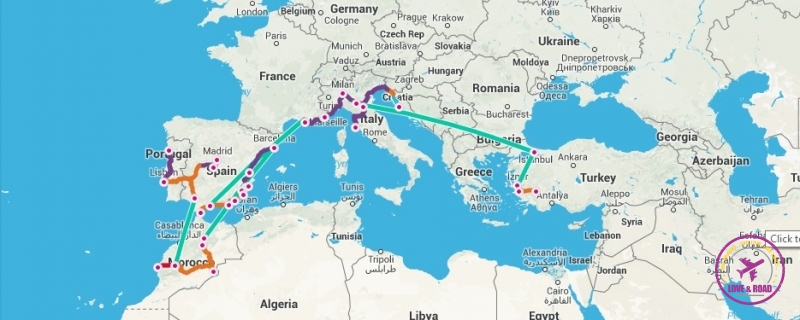
How we traveled during these 6 months?
To cross all the 8 countries we traveled by different modals.
By Boat – 2 times
By Bus – 14 times
By Car – 2 times
By Flight – 6 times (we use Skyscanner to check the best fares)
Hitchhiking – 8 times
By Train – 6 times ( EURAIL Pass is awesome!!! BOOK HERE!!! )
Where did we stay during these 6 months around the world?
We are big fans of Comfy + Clean + Well Located & Cheap Accommodation. Following these features we stayed in:
Campervan -1 time
Car – 1 time
Flat/Studio – 2 times
Friend’s house – 3 times
Hostels – 2 times
Hotel – 4 times ( Booking.com and Agoda are our choices for searching and booking hotels)
House sitting – 2 times
Shared House/Apt – 13 times
Tent – 2 times ( Moroccan Desert and SONUS Festival )
What did we buy during this period?
Apart from accommodation, transportation and food, there were some essentials (and non-essentials) that we must buy, and here are they:
New clothes:
Rob – 1 T-Shirts + 2 pair of jeans + underwear + socks + 1 jumper
Nat – 2 tops + 1 pair of flat sandals + 1 skirt + 1 pair of jeans + 1 legging
Electronics:
1 Notebook Asus F200M
Toiletries:
As usual, we had to buy soap, shampoo, body lotion, toothbrush, and all the stuff we need to be clean and beautiful. Talking about beauty, I will make a confession: we bought anti-aging for the first time!! We are not getting any younger so we invested in a Day & Night Clinique Face Care ! I loved it and Rob… He doesn’t want to talk about it!
1 small Backpack
2 Dry Fast Kingcham Towels
We are traveling around the world with a big backpack and a small front bag. That´s what fashion calls a minimalist style! So everything we bought was to replace some old items. What did we do with our used stuff? We donated. We made some bags and give them to homeless people in Istanbul.
Getting sick! More painkillers, please!
Rob says that is the weather, but I keep annoying him that he´s getting old and weak. Botton line, we got sick and hurt ourselves a couple of times in these 6 months traveling around the world. Nothing major, but bad enough to make us homesick and meh.
Sickness Scores:
Rob – 5 (2 times flu, cold sore crises, diarrhea, and a twisted ankle)
Nat – 6 (I win!!! Back pain, mosquito bites allergy , urinary infection, keen injury, flu, and diarrhea)
All the problems were sorted out with medicines we bought at the local pharmacy. We do have travel insurance but didn’t need to use it. To avoid getting sick we are trying to eat healthily, drink lots of water and do some exercise.
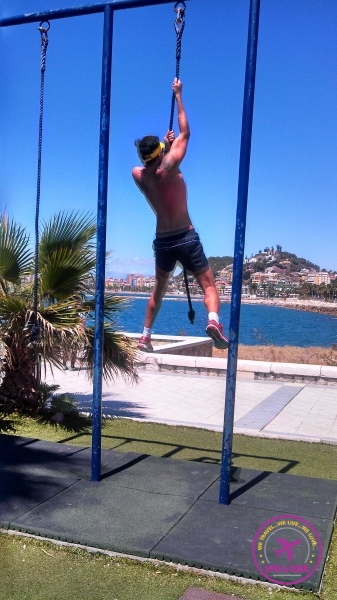
Talking about travel insurance, here is a guide about long-term travel insurance . We listed the companies we use and recommend, plus what you need to know before buying insurance and using it.
What did we LOVE during this worldwide trip?
Food – Italian (we both agree that Italians are masters in cooking and eating)
City – Barcelona and Izmir . We couldn’t decide between these two sunny cities.
Beach – For me is Cala San Pedro, Rob chose Playa dos Muertos, both are located at the Cabo de Gata Park , Spain.
Best Party – Hard to pick just one party, but definitely was the week we spent in Barcelona. The summer parties were better than the Sonus Festival we attended in Croatia.
To see all the pictures about these places check our Instagram !
Beautiful Strangers and the amazing people we met!
We met awesome people in these 6 months of traveling around the world. Old friends, former work colleagues, new friends, and a bunch of nice strangers crossed our way. Each one made a special contribution to our story. The moments we spent together are recorded in our hearts and souls.
Thank you guys! You are amazing! After meeting all these new people we can say:
Most handsome Men – Turkish, especially from Istanbul. (Believe me, girls, they are stylish and good-looking)
Most beautiful Women – French (Rob wanted to include the Russians and Polish, but they are out of this trip.lol)
Friendly People – Italians
People that talk to themselves – Porto, Portugal
Party Animal People – Spanish (I love them!!)
Worst moment of long-term traveling
For us, the worst moment was when we got the news that my cat had passed out. That was our first loss while traveling, the first moment we talked about going back home.
Best moment of our 6 months traveling
So far the highlight of our trip is the Moroccan Desert. Such a unique experience, a dream that came true!
It´s not a regret, but we would organize our Moroccan Tour in a different way. Would spend more money to get a private tour around the countryside and desert.
Also, I regret we didn’t start the Love and Road blog before traveling. It´s hard to manage time between travel, work and study.
We are Proud of
We are proud and happy of catching up with old friends. During these 6 months of traveling around the world, some of the meetings were meant to happen others were by destiny.
It was awesome to see you guys: Dariia Makarova (4 times we ran into each other), Hudson, Paulinho, Belem & Haiko, Captain Dario, Paolo, Senem, Saoro and Mehmet.
You can live a simple life because at the end of the day you will miss the people you love not the things you bought.
Relationship vs Traveling
Not easy to live together 24 hours, seven days per week… I think we didn’t kill each other because Rob is super patient and I am great fun! 😉
Work Hard, Play Hard
The Love and Road blog is part of our life project, however, we didn’t imagine that it would be so time-consuming and tiring. We are doing it with love and I´m really enjoying it, but it´s hard work. Actually, blogging is a full-time job and if you want to know more, our friends Nick & Dariece put together great tips on how to start a travel blog, click here to read it .
We know there are lots of details that we have to improve on the website, however for four months (the blog was launched in July) I think it´s going pretty well!
What do you think? Leave your opinion in the comments! 😉
How much does it cost to travel for 6 months?
With a tight budget and expensive tastes, we are courageously traveling around the world. Not easy but totally possible. After checking our spreadsheet and here are our expenses figures:

Accommodation – USD 3.902,00
Attractions – USD 1.201,49
Eating out – USD 3.329,57
Groceries – USD 1.856,21
Party – USD 1.231,46
Pharmacy – USD 390,87
Purchases – USD 651,13
Souvenirs\Post – USD 122,75
Transport – USD 2.901,00
WC – USD 13,55
Average per person / per day: USD 53,95 (that´s less than we used to spend per person per day in our daily life in Brazil).
If read until here you might want to have a look at our travel budget for 1 year and 2 years traveling the world. Right?
1 Year around the world – Travel budget and saving tips
2 Years around the world – costs, tips and how we live a nomad life
In the beginning, I thought it would be boring to write this article, but actually was an amazing way to remember our story. Six months traveling around the world doesn’t sound like too much, but if you start thinking about moments, feelings, memories it becomes an eternity.
Crazy Lovely Life. At this same time last year, I was at our home in Brazil, maybe working or organizing the house, dreaming about travels. Today I’m writing this post inside a night bus, leaving Pamukkale and heading to Cappadocia in Turkey.
Rob is already sleeping beside me, outside pouring rain and darkness. No big plans for the future just some booked destinations, and I never been so happy. I’m so grateful for these 6 months of traveling around the world, and hope our journey won’t finish soon!
Lots of LOVE from the ROAD!

42 thoughts on “6 months traveling around the world – Costs and Secrets”
This is a well written article and very informative. So seldom do travelers include actual costs and in such detail. I know I didn’t/don’t even keep such accurate records, but probably should. Thanks for sharing!
Thanks Dale!!
The idea is to show how it is possible to travel the world without being rich, and have tons of fun! As we have a tight budget we have to keep everything under control. We take notes of our daily costs so we can organize our money.
Keep following us because we´ll be posting how much we spent in each country we visited. So far we already talked about Portugal, and there are plenty of new information to come! https://loveandroad.com/how-much-does-it-cost-to-travel-in-portugal/
All the best and safe travels!!
Olá! Esse é o primeiro post que leio do blog e adorei. A forma como é organizado, bem escrito e engraçado. Impecável. Parabéns. Planejo largar o emprego e fazer o mesmo, sozinho, em março do ano que vem. Vamos ver se consigo manter a coragem. hehe
Sucesso com o blog!
Espero que tenha dado certo!!
Fico super feliz em saber que curtiu o post e o blog!! 🙂 Se tiver algum dica ou dúvida para organizar sua viagem pode contar com a gente. E parabéns pela coragem!! Largar tudo é “Viver a Vida” é para poucos… Muitos usam a desculpa da falta de dinheiro, mas na verdade só é preciso ter sonhos e acreditar!!!
Tudo de melhor! E quando estiver na estrada manda notícias!
Great post! It’s fun to see other travelers post the details about their travels and budgets. Were your costs per person or as a couple? We lost some weight too, but not as much as you did – great alternative to a diet, hey?
Happy travels!
Hey Landon!
Glad that you liked the post! That is a 100% true… Not easy to keep all the records, but I think it’s worth! I´d say travelling is an amazing diet! Good for your body and soul! 😉
All the best! Nat
What a great way to recap your six months! And very interesting to see what it can take to get away and travel like that by looking at what it costs – on average – per day.
Great photos and I’m looking forward to reading more about your travels!
Hey Patricia!!!.
So glad you enjoyed reading the post… The truth is that you don`t need lots of money to travel, you just need to organize your priorities and save some cash… There are plenty of ways to travel on a budget and have tons of fun! Happy Holidays!
Ha, I think the hardest language for me was Greek – hopeless from the start! Great recap.
Tks!!! Greek is really hard too! Don’t remember a word in Greek 🙁 Safe travels!!!!
You guys are fab and inspiring! Intend to travel around the world for 6 months. Just trying to get all the right destinations and Stack up a little more cash. It is on my bucket list and I guess an adventure to remember for eternity!
Go for it Clavier!!!
Travelling is one of the most rewarding things you can do in life! We just celebrate one year on the road, and no regrets at all!! All the best to you and if you need any tip just let us know. 😀 Nat
Wonderful to read your story and experience while traveling. Your details of people you met, times you were sick, and costs tell your story in an intricate and meaningful way.
Tks Brooke! This is something really special, the people we met. I think we are very lucky for meeting such nice and welcoming people! cheers!
- Pingback: 7 Essential Tips Before Travelling - Love & Road
Heyyy,Heyyy !!! 🙂 Both of you are awesome! I am following your adventures as much as I can and thinking of you sometimes,hope all is ok…
When I see my name & Izmir on the article ,I really feel very very happy! Thanks for that!
Crossed my fingers to see you both again, somewhere, somehow…
Hi Mehmet, We are so happy for meeting you!!!! And tks so much for making our stay in Izmir sooooo good! For sure we will return to Izmir!!!! Hope to see you soon! Cheers!
Great writeup! Thanks for all the detail. Looks like an amazing time.
Hi Penny!! We are having a wonderful time indeed! Glad that you like the post! Thanks for stopping by! Cheers, Nat
- Pingback: Travelling The World – Blog-ku
What a cool article. I’m glad you did what you did. It feels great to travel and we have done the whole NZ like that in 6 months with absolutely next to nothing. We had so much fun like you did with no regrets. Keep up the great work.
Thanks Marc!!! NZ is on our list!! There is no better thing in life than travel and live the moment, enjoy every second and every place you visit!!! Thanks for stopping by! Cheers,
Awesome! and yes, Croatian is a difficult language:)
Hi Tanja!! Croatian is difficult, but now that we are in Asia, I have to say that Thai and all the Asian languages are damn hard to learn. hahahaha Cheers, Nat
Que delícia de post! Estou voltando a Portugal agora, ao final de fevereiro, e ficarei 3 meses pelo menos pela Europa! Já larguei meu trabalho antigo e,finalmente, iniciei uma nova jornada na minha vida: criei o trabalho que amo e virei nômade digital! Bora viver! Vou acompanhar o site de vcs. Parabéns ao casal! !
Que bom que gostou do post 🙂 E parabéns pela iniciativa! Bom ver mais e mais “almas livres” rodando o mundo. Pode fuçar o blog que vai achar matérias sobre a Europa, Ásia e África. Beijos e boas viagens!
Hey Nat Thanks for sharing…I’m going to leave my life behind for 6 months to travel yayyy. I don’t have a travelling companion. Are there any countries you think are unsafe for me as a single female? Thanks Lisa
Hi Lisa, It’s hard to list the countries that are unsafe, I have friends that have travelled alone in India, Marocco, Turkey and never had a problem, even though these countries are on the list of “not so safe for women travelling alone”. I would say, to go wherever you want to, just be careful. Read about the place and the costumes before travelling, dress respectfully and look after yourself. There are way more good people in the world than bad ones. Happy Travels, Nat
This is such a good way to make sure you are on track! Perhaps I’ll try to keep as good of a record as this… perhaps I will get lazy and forget haha!
That’s so true Courtenay, It’s hard to remember and take not of everything, but that’s the only way you can keep track of your expenses 😉 All the best, Nat
Gostei muito do site e da coragem de vocês de viajar pelo mundo. Fiz um pouquinho isto com meu marido, mas apenas por Marrocos numa autocaravana e gostaria de dar umas dicas para uma próxima viagem por lá. Para viajar bem por Marrocos não precisa de muito dinheiro. O Câmbio favorece o Dólar e até o Real, mas acho que a melhor maneira é ir de autocaravana. Viajar sem destino, comprar comida nos lugares públicos, fazer a sua comida. O turismo lá é muito forte em quase todo o país e o turista é muito bem tratado. Se fizer amizade com alguém lhe levam para casa e comem com eles. É um lugar mágico onde cada cidade tem seu jeito de viver e antes de tudo muito respeito a sua cultura. Acho que esta é a dica para viver bem em qualquer lugar. Em muitos locais é bom cobrir o cabelo, evitar roupas decotadas, estar sempre junto do marido. Os marroquinos acediam muito uma mulher sozinha. Curiosidade…. O único problema para um casal viver uma vida nômade assim são os filhos. Se isto não está nos seus planos ok. Caso pensem. Até os primeiros 5 anos eles podem estar todos os dias consigo. Depois precisam ir para uma escola formal. Conheci muitos casais nômades, que chegou o momento que o filho pediu aos pais para ter uma vida dita normal e isto era mesmo importante para seu desenvolvimento como pessoas. Passado a fase escolar, pé na estrada novamente. Boa sorte e que continuem com muitas histórias para contar.
OI Divane!! Obrigada pelas dicas, o Marrocos é realmente um país incrível! Imagino que viajar de caravana tenha sido um experiência maravilhosa! Pois é, filhos ainda não estão nos nossos planos, quem sabe no futuro. Por enquanto seguimos viagem, fazendo amigos e conhecendo novos lugares. Tudo de melhor para você, abraços Nat
Hi Rob or Nat
My partner and I (uk) are thinking of doing this but after her studies in forensic anthropology and archeaology so we’re looking at working our way around countries. I am 59 so would be 60 but have a military background dee is 51 so would be 52 worked all her life bringing up daughter and spent last 3 years doing degree.
How would be the best way to begin looking into this as I’ve seen Kenya Cyprus Falklands and quite a few others but dee has never been abroad due to not having a pp. As this will be a gap year were looking at student accommodation and working or researching are way around so as dee can pick up info for her masters.
Any ideas pls
Hello Keith,
Sounds like you guys have an exciting year ahead!
The key is to decide the for how long you want to be on the road and the itinerary. From there you can start checking the accommodation options. Pay attention on the Visa requirements, some countries have different policies for researchers/students.
I have been wanting to do this for a while now, busy with business and child raising but the closer they get to graduating high school the more I know I have to do this. Where should I start to do this research of where to go first? And is a woman by herself even recommended? Are you guys still doing this? Thanks
Hi Aura, Yes, we are still traveling 🙂 We recommend a few books on this page . and yes, there are a lot of solo female travelers out there. Cheers,
Hi there! I’m about to leave on a 6 month journey abroad, on my own. I leave the USA in 12 days. I just wanted to let you know that your post pumped up my excitement to get going!
So happy to hear that Anna! Happy travels!
Very helpful!! Thank you so much for including costs!
You are welcome!
Hi Anna, I want to stay my worldwide trip soon , How is your trip going with all these restrictions worldwid
Leave a Comment Cancel reply
Save my name, email, and website in this browser for the next time I comment.
- Search Please fill out this field.
- Manage Your Subscription
- Give a Gift Subscription
- Sweepstakes
- Travel Products
- Packing Lists
The Ultimate Long-trip Packing List
Here’s all the clothing, gear, and accessories you need for your next extended getaway.
:max_bytes(150000):strip_icc():format(webp)/SophieDodd-29f8105329084ddbafdf19974fa43b45.jpg)
Packing Checklist for a Long Trip
Clothing and shoes, accessories.
- Why Trust T+L
We independently evaluate all recommended products and services. If you click on links we provide, we may receive compensation. Learn more .
Travel & Leisure / David Hattan
I spent one year living out of a carry-on suitcase, and if it taught me anything, it’s that I don’t need much else. As a lifelong hoarder — the kind who keeps a stash of shells from beach walks and boxes of boarding pass stubs from every flight I’ve ever taken — it’s been immensely liberating to learn that everything I need to go from a beachy Maldives getaway to hiking Sicily’s Mount Etna and working the grape harvest in France can all fit in a carry-on suitcase.
Packing for an extended trip looks very different from packing for a business trip or weeklong vacation. You’ll need to consider the various destinations and climates you’ll encounter along the way, plus what essentials you won’t be able to get elsewhere (think: prescription medications or your go-to skincare products).
While it pays to be prepared, you typically can buy or borrow most things you’d need wherever you’re off to, so don’t stress over items you think won’t get much use. The goal is to travel as light as possible, making sure every item in your suitcase serves multiple functions and is generally neutral in color to maximize all mix-and-match outfit potential.
Here, I’ve rounded up the fruits of all my packing trials and errors, along with some tips and picks tested by Travel + Leisure editors for what to bring along on your next extended trip. The products that made this list are those that we have found, tested, and rated highly in the T+L lab and in real-world tests, in addition to other products we chose based on in-depth research. Beyond these pieces, remember to always include your general travel essentials, like a passport and any necessary visas or vaccination cards.
One of the easiest hacks for becoming a better packer is to make a list of everything you need and want for your trip — then to nix about half of your wants. You’ll be shocked by how little you’ll miss them when you’re chasing a new adventure every day, but you’ll be grateful to have your essentials on hand in unfamiliar places. The list also makes for a handy reference point for all future travels (it’s a good idea to edit it after a trip, when it’s fresh in your mind which pieces got the most use and which never came out of your suitcase), and it helps ensure you won’t forget anything when repacking.
Read on for everything you need to pack for an extended trip, and learn more about each recommendation below.
- Best Lightweight Jacket: Patagonia Nano Puff Jacket
- Best Travel Outfit: Reformation Rou Knit Dress
- Best Travel Pants: Everlane the Easy Pant
- Best Sneakers: On Cloud 5 Women's Running Shoe
- Best Travel Sandals: Sandalup Elastic Flat Sandals
- Best Comfy Boots: Blondo Danika Waterproof Bootie
- Best Steamer: Steamery Cirrus 3 Iron Steamer
- Best Camera: Sony ZV-1
- Best Wash Bag: Scrubba Portable Wash Bag
- Best Reusable Water Bottle: Thermoflask Double Stainless Steel Insulated Water Bottle With Two Lids
- Best Hotspot Router: GlocalMe G4 Pro 4G LTE Mobile Hotspot
- Best E-reader: Amazon All New Kindle (2022)
- Best Packing Cube Set: Gonex Compression Packing Cubes
- Best Toiletry Bag: Away Large Toiletry Bag
- Best Travel Tote: Longchamp Le Pliage Original
- Best Daily Sunscreen: Supergoop Unseen Sunscreen
When packing for a longer trip, focus on lightweight, versatile pieces. Once your list is written out, you’ll be able to see that some items may be superfluous and could be replaced by a piece that does double duty (think swapping short-sleeve and long-sleeve shirts for one shirt with sleeves you can roll up or taking an oversized scarf that also works as a shawl and a swimsuit cover-up that doubles as a picnic blanket instead of a single-use sweater). Shoes should be multi-functional as well, ideally able to take you from a day of sight-seeing to a night on the town. I always opt for neutral pieces that I can layer easily — ideally in quick-drying materials. To keep footwear to the essentials, I limit myself to one pair of sneakers, sandals that take me from day to night, and flip-flops that double as shower shoes.
Best Lightweight Jacket
Patagonia women's nano puff jacket.
Hyper-lightweight and easy to pack into its own pocket, Patagonia’s Nano Puff Jacket easily earned top marks when T+L editors tested 19 packable jackets for women . The minimalist puffer, which is made from recycled materials and comes in seven hues, weighs just 10 ounces, making it an absolutely essential layer for travelers. Despite its sleek profile, it’s packed with 60 grams of PrimaLoft Gold Insulation Eco, which will keep you warm in shoulder seasons or in cold airplane cabins. It’s also slim enough to layer over or under other items, making it a versatile addition to your year-round wardrobe. During testing, we loved how subtle the packing pocket is — it’s hidden beside the chest zipper — and we found it simple and straightforward to stuff the jacket inside the handy pocket. There’s even a loop on it to hook onto a carabiner or to hang it up.
This jacket would be even better if it also included a hood. Otherwise, it features a range of travel-friendly features that they found incredibly useful, from zippered pockets to keep your hands warm to elasticized cuffs and an adjustable hem that help keep wind and cold weather out.
Travel + Leisure / Sabrina Weiss
Best Travel Outfit
Reformation rou knit dress.
Reformation
This swishy Reformation dress is my go-to for every longhaul flight or train ride. It feels like wearing pajamas but looks incredibly pulled-together, making it easy to head straight from the airport to exploring my next destination. The material is ultra lightweight and cozy and has stood the test of time over the past few years, keeping me company in all sorts of climates as it’s summery on its own but layers well under a chunky sweater. Even if you’re not a dress person, this will change your mind.
Best Travel Pants
Everlane the easy pant.
Looking for a versatile pair of pants that can take you from the airport to a day of sightseeing and dinner with friends? The Easy Pant from Everlane has got you covered. Made from substantial and soft cotton twill with just a touch of elastane, these breathable straight-leg pants are made to move with you. While they’re not adjustable at the waist, we love the pull-on style, and the fact that there’s no drawstring allows you to easily dress these up or down for any occasion.
These were part of a T+L lab test for best travel pants, and we found them incredibly comfortable and easy to style. The pants never felt tight or constricting. Out of the 40 pairs of travel pants tested , these were our favorite lightweight pick. We also loved the many features, including four deep pockets, a soft elastic waistband, and the ease of cleaning. When we tossed these in the wash during testing, we were delighted to see there was no pilling on the pants whatsoever afterward.
Best Sneakers
On cloud 5 women's running shoe.
Made from recycled polyester that’s both antimicrobial and breathable, these sneakers from On are a game changer for travelers. Their lightweight construction makes them perfect for smushing into your suitcase and wandering around a new city, and the bungee-style laces are a dream for slipping these on-and-off at TSA. Out of 41 pairs of walking shoes tested by T+L , these were one of the favorites thanks to their CloudTec Zero-Gravity foam that infuses some pep in every step. One of our editors wore them through the airport on long-haul travel days and found that their feet were less inflamed and tired than usual at the end of the day. We were impressed by the amount of arch support and the molded heel design, which helps keep feet secure while still allowing plenty of flexibility.
While these are our favorite all-purpose sneakers, if you need dedicated running shoes, consider a pair of fashionable yet-functional black Nikes that you can wear for working out and walking around during the day.
Travel + Leisure / Ashleigh Morley
Best Travel Sandals
Sandalup elastic flat sandals.
Top-notch travel sandals shouldn’t take up much space in your suitcase and should be versatile enough to mix and match with most everything you’ve packed. The Sandalup Elastic Flat Sandals earned top pick in T+L testing for the most comfortable sandals out of 50 pairs. They require minimal space when you pack them together and are available in a bevy of vibrant hues to suit your personal style. While the sandals are relatively thin and lacking arch support, they’re still noticeably comfortable — we found them easy to walk in for hours at a time and never noticed our feet getting overheated or sweaty even in the Florida heat. Best of all, the elastic straps adjust immediately to your foot, so there’s no need to break them in. The lack of a buckle or tie to fuss over makes this a boon for travelers in need of a low-maintenance, polished, and budget-friendly sandal.
Best Comfy Boots
Blondo danika waterproof bootie.
We put these boots to the ultimate test as one T+L editor brought them along as the only pair of shoes for a week-long sightseeing trip in Eastern Canada. The risk paid off: our editor found them comfortable enough to wear right out of the box, and they felt broken-in immediately as they navigated the cobbled streets of Quebec City and Montreal. We found that they’re best paired with taller socks to prevent socks from slipping down, and we loved the convenience of their pull-on design, made even easier by the elastic gusset and handy pull tab on the back. Plus, they’re water-resistant! As far as rain boots go, these are some of the chicest we’ve seen — and we tested 28 pairs of comfy boots . We found them versatile enough to throw on with jeans and your favorite band T-shirt or with a dress for a more evening-appropriate look.
Beyond clothing and shoes, there’s some great travel gear that will serve you well on longer trips, from reusable water bottles to portable steamers. The key is to keep things lightweight. Decide what’s easier to bring versus buying on arrival. In most destinations, you’ll be able to purchase, rent, or borrow whatever you may need, but if you’re heading somewhere more remote, make sure to keep these essentials in your carry-on.
Best Steamer
Steamery cirrus 3 travel steamer.
Carrying a portable steamer has been a game changer in my travels. Living out of a suitcase means my clothes are semi-permanently wrinkled, and being able to steam them in seconds ensures I look more put together than I really am. Steamery’s Cirrus 3 Iron Steamer also reduces odors and kills bacteria, which helps me get by on fewer washes with certain items. While it’s not the cheapest option on the market, it certainly beats the cost of pressing your clothes at hotels over time, and it’s lightweight enough (1.7 pounds) to be a worthwhile addition to any carry-on.
Best Camera
Sony zv-1 digital camera.
A good camera is a traveler’s best friend, whatever the length of your trip. But the longer the journey, the happier you’ll be to have one that’s lightweight and easily packable — and one that is capable of capturing the highlights of your trip. Sony’s ZV-1 is designed for digital content creators and is ultra user-friendly, with top-tier video capability, 3x optical zoom, and a flip-out LCD screen that helps ensure you get the best selfies every time.
Best Wash Bag
Scrubba portable wash bag.
Why sit around a laundromat when you could be out exploring a new city? While you might luck out with a vacation rental that has a washing machine and dryer, knowing that you can clean your clothes wherever you are offers peace of mind when you’re trying to limit how much you pack. Scrubba’s portable wash bag takes up next-to-no space in my suitcase, weighs just 5.3 ounces, and is perfect for cleaning small-to-medium loads. The patented washboard-in-a-bag technology helps rub stains out of clothes in 1-2 minutes. The best part is that you can also use it as a laundry bag when it’s dry.
Best Reusable Water Bottle
Thermoflask double wall vacuum insulated stainless steel water bottle.
The Thermoflask Double Stainless Steel Insulated Water Bottle will keep you hydrated on the go, whether you’re sightseeing, working remotely , or on a longhaul flight. At just 1.1 pounds, the 18-ounce model is easy to tote around thanks to its comfortable grip and convenient carrying handle, and the vacuum-insulated, stainless steel coating keeps beverages cold for 24 hours or hot for 12 hours. This was our best overall pick out of the 26 reusable water bottles we tested — we found that this one was the most durable and convenient to use. We love that it comes with two different lid styles: the chug cap is perfect for travelers looking to sip on the go, plus it’s leakproof, so there’s no need to stress if you need to throw it in your bag, and there’s also a straw lid that delivers a steady flow if that’s your ideal sipping style.
Travel + Leisure / Conor Ralph
Best Hotspot Router
Glocalme g4 pro 4g lte mobile hotspot.
This mobile hotspot is a must for digital nomads and is helpful for anyone who needs stronger internet connectivity in more far-flung destinations. The GlocalMe G4 Pro 4G LTE Mobile Hotspot has a sleek, streamlined design and a proprietary Cloud SIM technology, which allows you to choose pay-as-you-go internet packages in 144 countries around the globe and connect up to 10 devices. The best part? The hotspot comes with one free gigabyte of international data, which you can use over the course of three months.
Best E-reader
Amazon kindle paperwhite.
As someone who spent years packing my personal item with books that I barely made a dent in, carrying an e-reader has helped to lighten my load and allows me more freedom of choice when it comes to picking out what I want to read, when I want to read it. Amazon’s 2023 edition is super compact — just 6.9 by 4.9 inches and 7.23 ounces — making it easy to slip into your purse. T+L editors love this model for its waterproof design and easy-to-read, 6.8-inch display.
Handy travel accessories like compression packing cubes and toiletry bags are great for staying organized on longer journeys, helping you to condense and keep track of your belongings at a glance. Packing a foldable, multipurpose tote not only serves you well on day trips, you can also slip it into another bag in case you do a little too much shopping on the go. These are some of my favorite accessories for longer trips.
Best Packing Cubes
Gonex compression packing cubes.
This set of four packing cubes is essential for travelers looking to save space in their suitcase and stay organized on a longer journey by compressing their clothing into individual cubes. T+L editors named Gonex’s Compression Packing Cubes the best overall packing cube out of 23 tested thanks to its sturdy zippers, water-repellent nylon exterior, and resistance to tearing when overstuffed. The packing cubes come in four sizes: extra-large (17.3 x 13 x 3.54 inches), large (14.5 x 10.6 x 3.54 inches), medium (11.8 x 8.9 x 3.54 inches), and small (9.8 x 7.5 x 3.54 inches) to pack anything you need.
Travel + Leisure / Vicky Wasik
Best Toiletry Bag
Away large toiletry bag.
Away’s Large Toiletry Bag holds more than it looks like it would and has ample organizational features to help you keep track of all your travel essentials, from haircare products and makeup to cotton swabs. T+L editors managed to pack in makeup brushes, foundation, a compact mirror, and several toiletries with room to spare during testing, in turn ultimately voting this the best overall toiletry bag of the year. There’s a sleek exterior zip pocket to allow you easy access to your must-haves, plus several interior compartments, including a zippered pouch; two mesh linings; and a clear, cosmetic-style bag. The bag’s water-resistant nylon exterior is smooth to the touch, while the wipeable material that coats the inside helps to prevent dreaded spills.
Travel + Leisure / Tamara Staples
Longchamp Large Le Pliage Tote
There’s no better foldable bag to keep in your luggage than an iconic Longchamp Le Pliage. I’ve tried everything from tote bags to squishable duffel bags and always come back to this classic for its durability, chic design, near-weightlessness (10 ounces for the large; 7.7 ounces for the medium ), and its two handy internal storage pockets. The bag sits at the bottom of my suitcase in case I overdo it on souvenirs and need extra space, or if I need a place to store a few days worth of clothes but don’t feel like lugging my luggage around on a weekend trip. I’m not alone in my obsession — T+L surveyed its team members, and six different people claimed it as their favorite lightweight travel tote thanks to the bag’s portability, sleek style, and built-to-last design.
Best Daily Sunscreen
Supergoop unseen sunscreen spf 40.
A good go-to sunscreen is crucial for everyday skin protection, especially when you’re changing climates and might be traveling in destinations where the sun is stronger than you’re used to. Supergoop’s cult-favorite Unseen Sunscreen is velvety smooth and absorbs instantly, without leaving any sticky residue. It’s scentless, chemical-free, and boasts broad-spectrum SPF 40 to help protect your face from sun damage. It earned a spot as the best unscented sunscreen out of 24 face sunscreens tested by T+L for its lightweight and pleasant consistency, as well as its lack of white cast.
Travel + Leisure / Jhett Thompson
Frequently Asked Questions
While the amount of clothing you bring will depend on whether you’re carrying on or checking a bag, a good rule of thumb is to pack one week’s worth of clothing and plan to do laundry. A baseline checklist might include four tops, three bottoms, three pairs of shoes (make sure to have a variety for different activities like sneakers, sandals, and hiking boots), a week’s worth of underwear and socks, plus a hat. From there, adjust to your own needs — maybe swapping a top and bottom for a dress, or adding in one or two workout outfits. Your packing list will also depend on where you’re traveling to and what activities you plan on doing there.
On shorter trips, when you’re less likely to be experiencing major climate swings, you can ditch some of your layers at home. For longer travel, layering is the most crucial thing to keep in mind while packing so that you can jet from place to place without worrying if you have weather-appropriate clothing. Lightweight jackets, scarves, rollable T-shirts, and loose-fitting pants are great pieces that can carry you through all sorts of scenarios on a trip that lasts longer than two weeks.
Why Trust Travel + Leisure
Sophie Dodd is a T+L contributor with extensive commerce writing experience. As a freelance travel writer, she takes several extended trips throughout the year, and is well-versed in what it takes to pack for a variety of different adventures. Sophie relied on her personal experience as well as testing insights from our editors, who tried out dozens of products in the T+L lab and during their own travels in order to narrow down the best clothing, gear, and accessories worth packing for a long trip.
Love a great deal? Sign up for our T+L Recommends newsletter and we'll send you our favorite travel products each week.
Planning a 6 month Europe trip – What to know
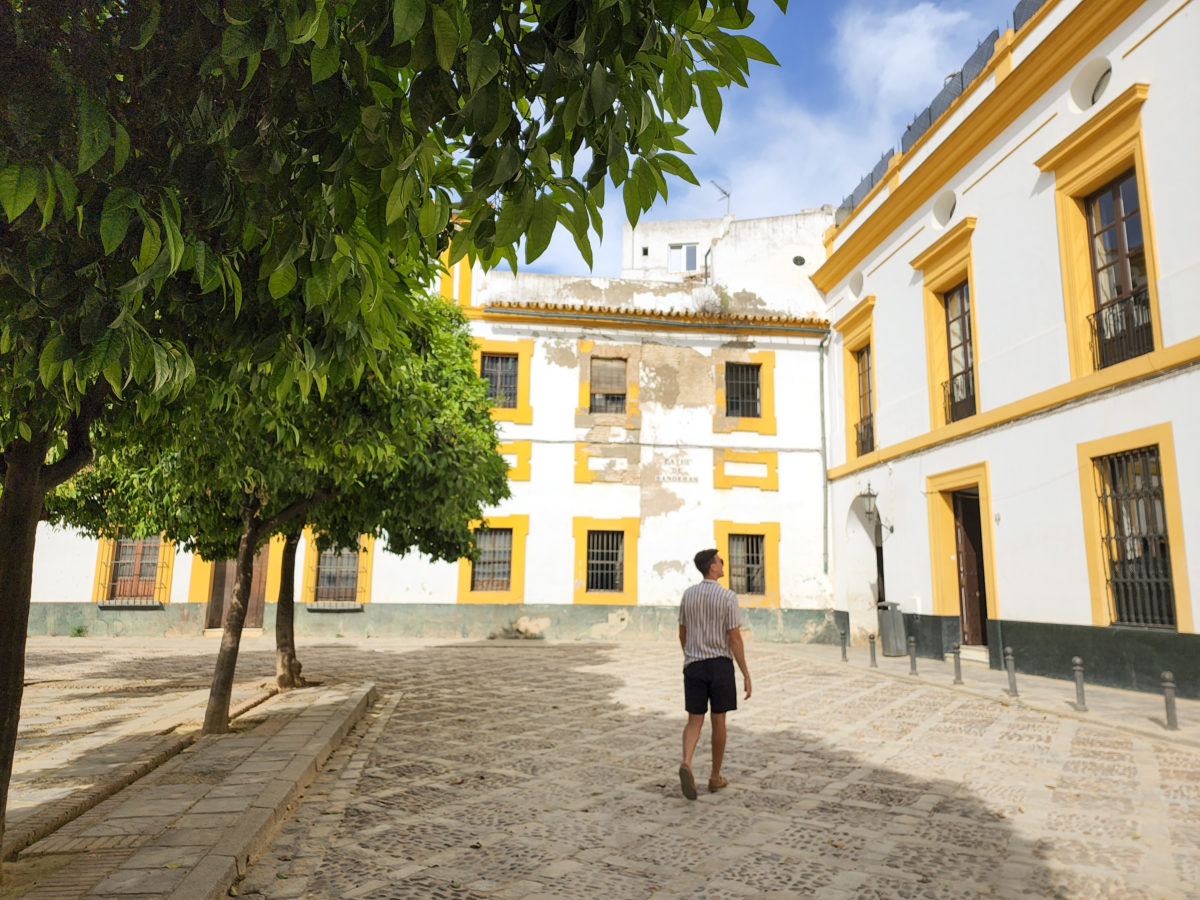
Travelling for 6 months is an exciting step away from ‘normal life’. We completed this bucket list style trip in 2022 and it is something we will never forget and don’t regret! If you are thinking about an extended trip, we urge you to take the plunge, it will definitely be ‘lifechanging’ (cliché, we know). Starting to plan such a big trip can be exciting, but also daunting. We planned in small parts over the course of 1-2 years, and have a few tips that may assist you. See the list below of our recommendations for planning an extended trip. We have also put together a complete guide to Europe travel here!

What to know when planning a 6 month Europe trip
Start planning early:.
If you are planning a long Europe trip (or any destination), planning is needed, even if you want to be spontaneous when you are over there. It will take you longer than you think! There are so many things you don’t think about, and planning in advance makes things a whole lot easier. Additionally, planning in advance gets you excited about the holiday, and this anticipation is one of the things we love about holidays!


Book your flights early:
Similar to above, booking your main flight to/from your destination early can pay massive dividends. We booked out return flights to Europe over 6 months before we left, costing us about 50% of what the flight would have cost if we booked it last minute ($1500 per person return from Australia compared to over $3000). If you are booking early make sure there is an option for flexible date change or cancellation.
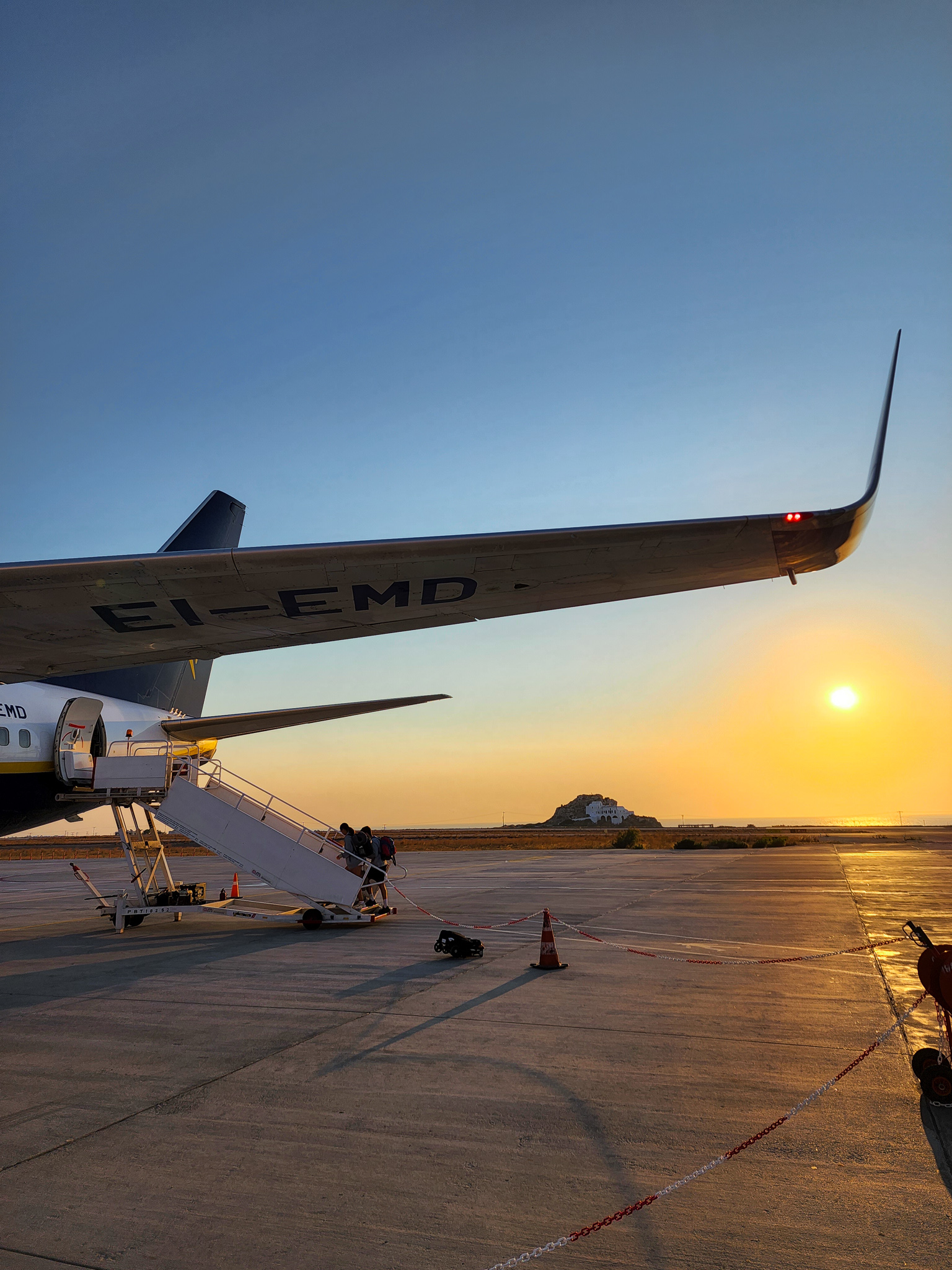
lots of research!
This is the fun bit! Start doing your research. Talk to friends who have travelled! Watch a travel documentary (we loved food based travel shows like ‘Somebody Feeds Phil’ when we were planning). Hit up Youtube, there’s heaps of great content out there! Read a travel blog (I’ve heard there’s a decent one called 2 Cups of Travel). But seriously, travel blogs are amazing for planning itineraries, or when looking at new countries you don’t know much about. Instagram is also a great place to get some travel inspiration. Watch some travel reels or check out some photos and ‘Save’ them for later. Tess also loved using our Europe Lonely Planet book! We started this ‘research’ at least 2 years out, and this was one of the most exciting parts of the trip.
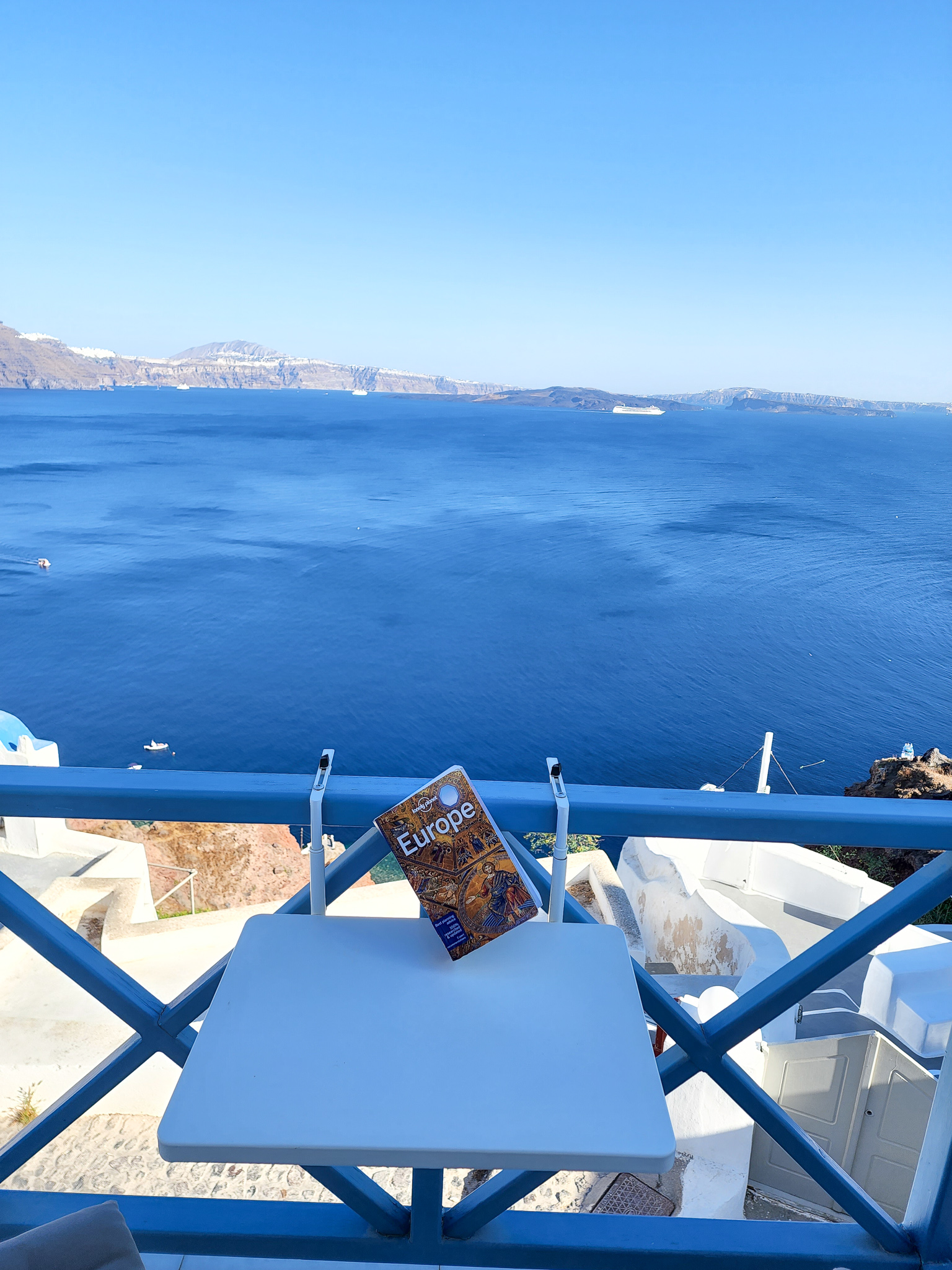
We also found that our research allowed us to ‘find’ some unique locations like Lake Ohrid, Gjirokaster, Kas, Lake Bled, Polignano a Mare and more! These were some of our favourite places from our travels!
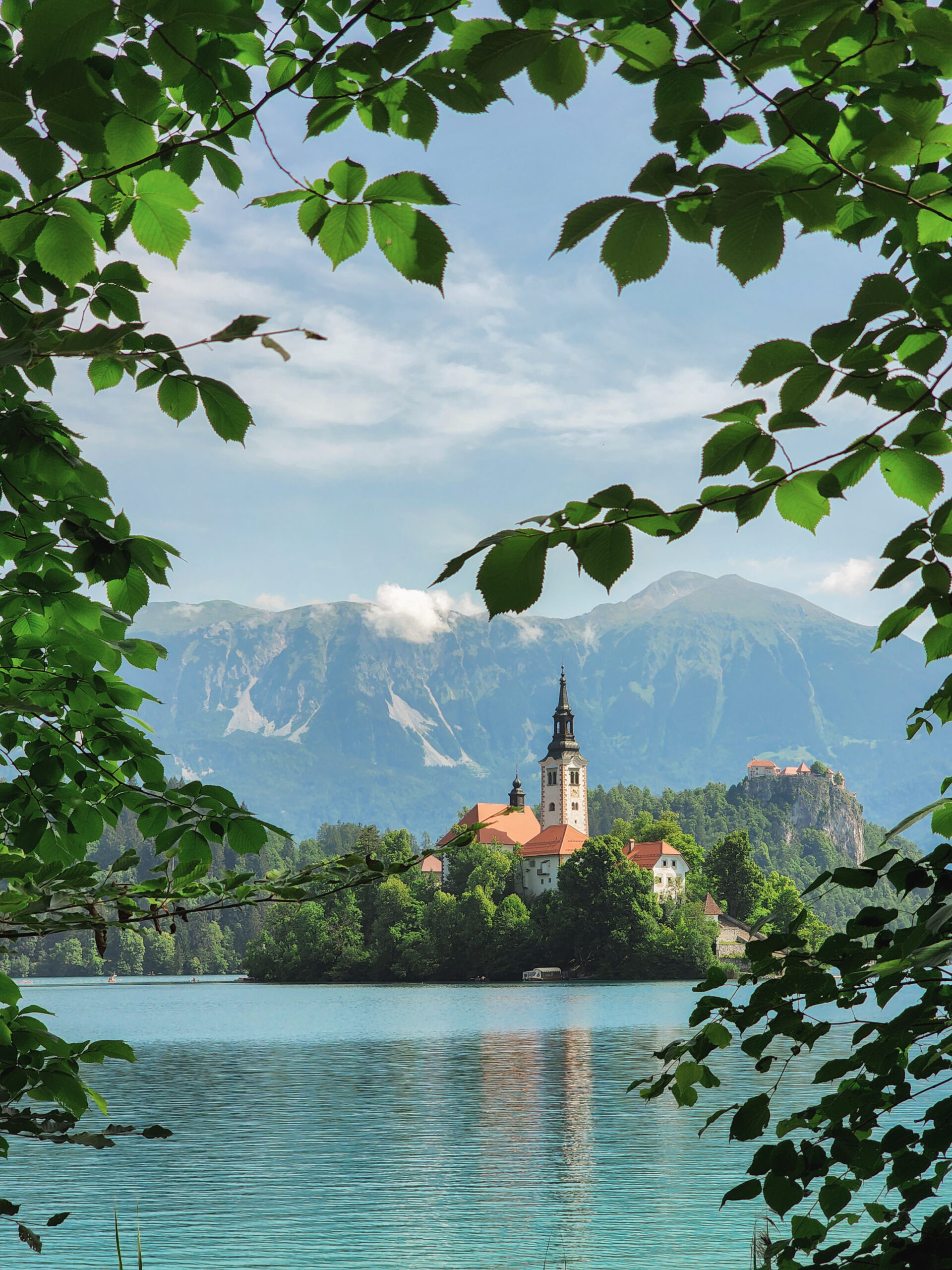
Visas & passports:
This is the boring but essential part of travelling. Your passport needs to have at least 6 months until expiring from the date you return! This is important, as if you have under 6 months you might not be allowed to continue/start your trip. Visas will vary depending on your country. Many countries like Australia have access to Schengen Visa’s, which is an ‘automatic’ visa that you get for many of the European countries. We have provided a few links below to help you learn more about it, but suggest you look into the Visa’s in more detail. The only country we had to apply for a separate visa for was Turkey, which can be done online up to a few days beforehand.
- Schengen Info: https://www.schengenvisainfo.com/
- Smart Traveller (AUS Info): https://www.smartraveller.gov.au/before-you-go/the-basics/schengen
- Demystifying the Schengen Zone (Europe Travel Info): https://europetravelinfo.com/schengen-zone-europe-rules-tips-links/
Bugeting – Save the $$:
Yep, travelling isn’t cheap. You will likely already know this, but saving is key. There are also many hidden costs that can come with travelling like fines, mistakes, last minute changes, medical expenses and much more. If possible, it is worth trying to save a little in an ‘Emergency Fund’ for these hiccups that may occur. You will also find that things can cost a lot more than you think. An example of this is how expensive we found the trains when travelling through UK and Europe. We also urge you to consider your daily budget, including things like accommodation, transport, spending money and more.
Need data? WIFI or travel sim card:
In the modern age, internet access is crucial for all parts of life, including travel. Popular apps like Google Maps, and access to all of your itinerary documents (e.g. boarding passes), happens with internet access. Whilst WIFI access is available in many locations overseas, if you rely solely on this, you will have times without internet. You can often pick up a local SIM card at airports or in cities which gives you calls and data for that country or region.
We used a travel E-Sim (through Airalo), a feature on modern phones where you can gain access to internet data without purchasing a physical SIM card. We found this a good process, particularly as we were regularly changing countries, and some of the local physical SIM cards didn’t cover all of the regions we visited.
Travel Insurance is a must!
You never think you need cover until you do! Baggage will regularly be lost (especially in peak season). Medical emergencies and accidents happen. Missed flights, delays and more aren’t unusual. Perhaps you will have to change your plans due to an emergency! Once you have booked your initial flights and have a set “plan”, we urge you to book travel insurance. Check if your credit card offers travel insurance when you purchase international flights (ours did), otherwise there are many companies out there providing policies to cover you. Important note: if you have a pre-existing medical condition, include this in your claim, and be sure to read the fine print of the policy to ensure you are covered.
We have included a link below to Safety Wing , a travel insurance company that we use. We find it is very reasonably priced, and geared travelers like us, especially those doing extended periods of travel. In particularly, Ky loves it as they have policies that cover gear like camera and drones when on the road.
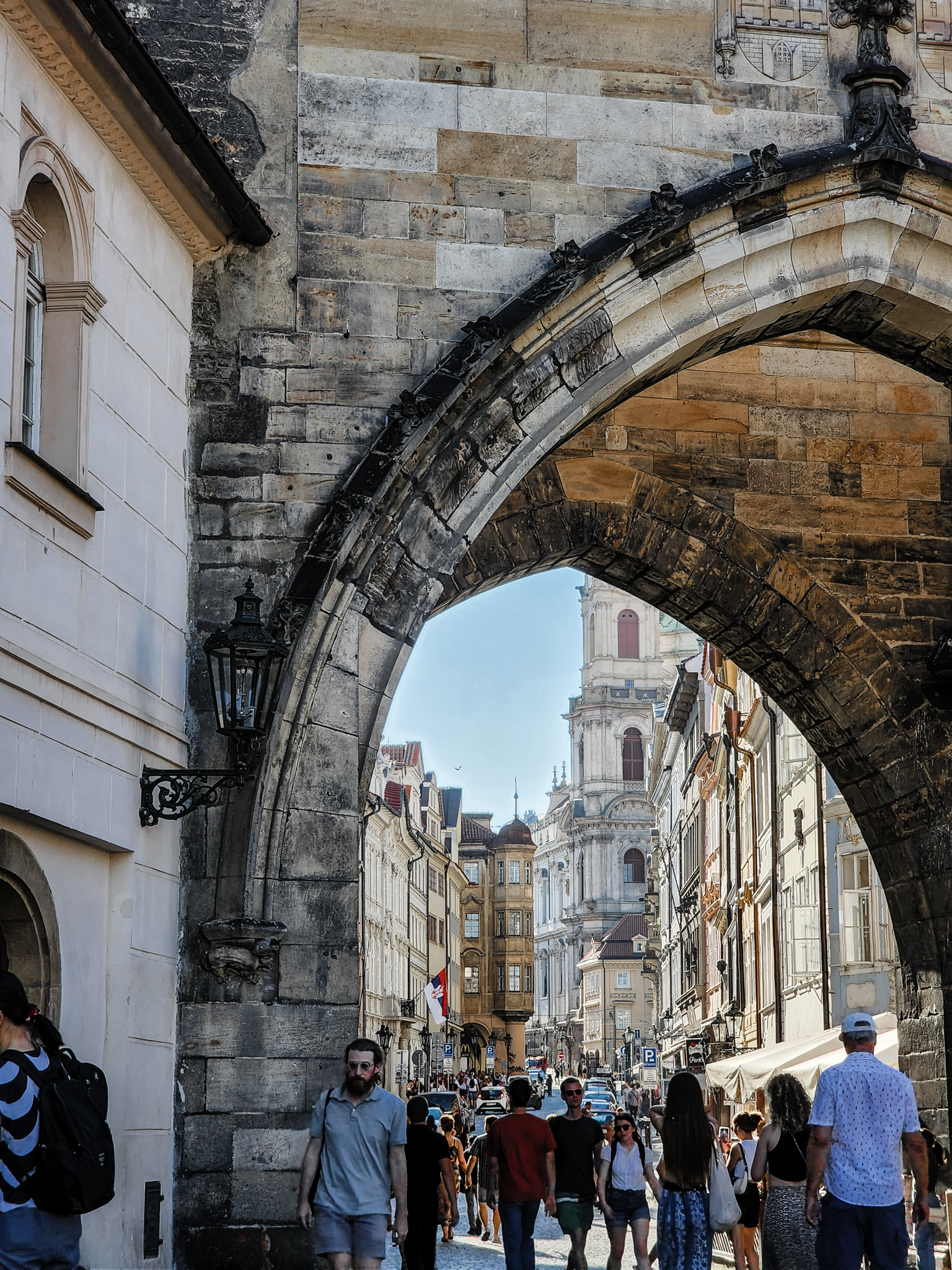
Organize your travel bank and credit cards:
This is a really important point to save you $$. We organized a travel credit card (28 Degrees Mastercard) which allowed us to have no overseas transaction fees. However, we didn’t initially think to organize a travel friendly bank card. By the time we realized it was too late, and over the course of our trip, it probably cost us $100s in ATM and transaction fees. We used our credit card for all purchases where possible, however many countries in Europe are still ‘cash heavy’, thus withdrawing money was needed. Banks such as ING, HSBC, Citibank, and Chase all offer great travel card options. Check with your bank, or look into these options. Try to go for a card with no transaction fees and no or low withdrawal fees. Some cards also let you have more favourable currency exchange rates. Plan this early and you will save the $$.
Download some of the key travel apps:
There are so many great travel applications out there that make the process of planning and travelling so much easier. We have compiled a list of some of our favourites which can be found here! These help with everything from making reels to learning new languages.
Make travel easier with these helpful travel apps!
Buy some packing cubes!
There’s lots of different travel items that can save you time and effort (a blog for another day). However, the one we think you absolutely MUST HAVE when travelling are packing cubes . Tess found these when we were planning our trip and they have saved us both many times. They make living out of a suitcase a lot easier and make the repacking of bags much faster. Buy them online (e.g. through Amazon ) or through popular discount chains like Target/Big W etc. Don’t think about it, just do it! We used a similar set to the ones listed below ( see here ). Check out some of our other top picks of what to buy for your travels here!
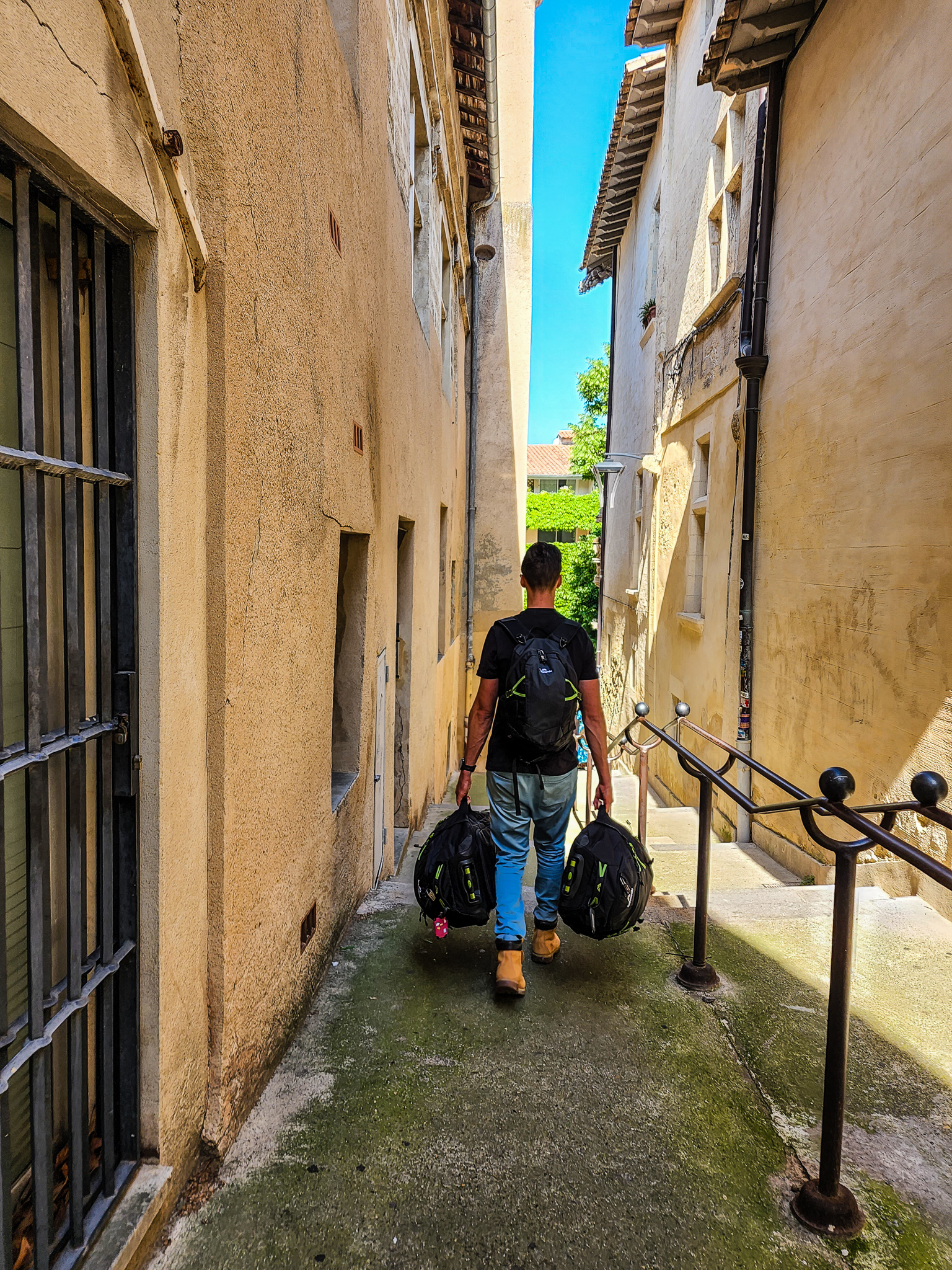
Think about how you want to document & remember your travels:
Your dream ‘bucket list’ trip will be here before you realize, and also gone before you can even properly comprehend it. Therefore, we think it is a great idea to consider planning before you leave how you will best document and remember your trip. During many previous holidays we hadn’t found many good ways to document our travels. However, before leaving in 2022, we decided to start this blog, our social medial channel ( see here ), and also put together highlight video (e.g. see below). This allowed us a platform and method of recording our highlights and moments as we went, giving us an incredible catalogue of highlights to look back on. Additionally, we purchased extra equipment, like our drone, and our GDome , to allow us to capture some of the incredible moments we experienced.
While our methods may not be how you would look to remember your travels, we urge you to consider this before you leave. Perhaps it will be a journal? Or maybe photobooks when you return? Polaroid photos? A summary video of your highlights on return? Let us know if the comments below how you have documented and remembered your travels!
Enjoying our posts & advice? Subscribe to our blog!
Jump your email into the list below. We won’t spam you! It’ll just keep you updated whenever we post another travel-related adventure, memory or tid-bid!
WANT TO SEE MORE food recommendations & TRAVEL MEMORIES?
Our Europe travel guide for 2023 & 2024
What you should buy before your next trip!
Take a look at some of the best hidden gems from our travels !
Find out a little bit more about the people behind 2 Cups of Travel!
Check out further highlights from our time in the Europe! Take a look!
Please note: this post contains affiliate links. This means that if you purchase or book anything using these links, we get a small percentage of the sale, at no extra expense to you . This helps us to run the site.
Tags: blog , Europe , itinerary , planning , travel
Comments (16):
May 5, 2023 at 9:02 am
Hi there! Do you use Twitter? I’d like to follow you if that would be ok. I’m absolutely enjoying your blog and look forward to new updates.
May 5, 2023 at 9:10 am
Thank you! We don’t use twitter, but the best way to stay up to day is subscribe to the blog, or follow our Instagram channel ( https://instagram.com/2cupsoftravel ).
May 13, 2023 at 10:02 pm
How did you get around the 90/180 days in the Schengen area? If you travelled for 6 months.
May 14, 2023 at 6:59 pm
Hi Brodie, great questions. Did it in a few ways: 1. Non-schengen countries – think most of the balkans, morocco, UK, croatia (isn’t schengen anymore), turkey etc 2. Visa waiver exemptions – need to check through your country/embassy pages to determine if you have visa waiver options. We used one for the netherlands.
Kerry Watkins
September 13, 2023 at 3:34 pm
Thanks for a marvelous posting! I definitely enjoyed reading it, you will be a great author. I will ensure that I bookmark your blog and may come back later on. I want to encourage you to ultimately continue your great job, have a nice evening!
November 29, 2023 at 12:56 pm
whoah this blog is wonderful i really like studying your articles. Stay up the good work! You understand, lots of persons are searching around for this information, you can aid them greatly.
December 21, 2023 at 8:48 am
I couldn’t resist commenting. Perfectly written!
December 28, 2023 at 1:50 pm
My spouse andd I absolutely love your blkog and find almost all of your post’s to be just what I’m looking for. can you offer guest writers to write content in your case? I wouldn’t mind writing a post or elaborating on a few of the subjects you write about here. Again, awesome website!
2CupsofTravel
January 1, 2024 at 8:28 pm
Thanks for the lovely feedback! We don’t usually offer guest posts but have partner websites which may – see out contact page to email us and discuss further!
December 28, 2023 at 7:43 pm
Thanks for finally writing about planning a 6 month Europe trip. Loved it!
January 19, 2024 at 9:05 am
Great article. Keep posting such kind of information on your blog. I’m really impressed by your site. Hey there, You’ve performed a fantastic job. I’ll definitely digg it and in my opinion suggest to my friends. I’m confident they’ll be benefited from this web site.
Ertha Jacoby
January 30, 2024 at 2:01 am
Thanks very nice blog!
February 8, 2024 at 4:23 pm
Much appreciated! Thanks for taking the time to give feedback 🙂
March 31, 2024 at 9:35 am
Thanks to my father who informed me about this website, this webpage is really remarkable.
April 3, 2024 at 11:42 am
Thanks for your kind words! Glad you got something from our guides!
Leave a Reply Cancel reply
Your email address will not be published. Required fields are marked *
Related posts:
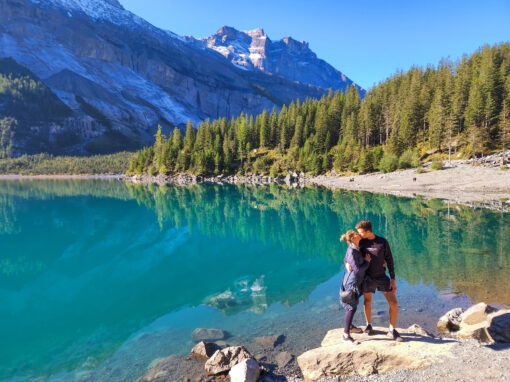
Travelling for 6 months? Here’s 5 things to consider before you go!
This little guide looks to give insight into a few of the things you might need to consider if you

Our 2024 guide to Europe! Tips, hidden gems, guides & more!
Europe.. you’re iconic, beautiful, enchanting, full of culture, and you keep us coming back! There’s a reason Europe is number
Follow on Instagram:

- Get in touch
- Instagram @2cupsoftravel
Buy Me a Coffee
Guide to the 6-month passport rule — what is it?

Editor's Note
It may sound trivial, but one of the best rules you can follow as an international traveler is to remember to check your passport validity before you book flights and hotels.
Why? Because the requirements for entry differ from country to country. In the midst of planning my 2024 travel, I realized my U.S. passport expires in April, which could mess with my plans abroad.
Thankfully, I use a travel checklist to avoid disruptions to my travel itinerary.
I immediately started the passport renewal process online and had my photo taken at my local Walgreens — although you can DIY your passport photo if you prefer — so I could send out my application as quickly as possible. I also opted to expedite the processing time for an additional $60 fee and sent my application on its way.
If you're also in the middle of planning 2024 travel or simply want to know the ideal time to begin getting ready to renew your passport, the TPG team has you covered.
We collected information from the U.S. Department of State website and the United Kingdom's government website to create a one-stop cheat sheet examining a range of nations that typically require you to have a passport that lasts longer than your trip — whether by one, three or six months.
Note that certain countries deviate from the standard six-month requirement. These findings are also only related to passport validity dates — we're not covering visa requirements here. Those can vary depending on where you're going and where you're coming from.
Schengen countries in Europe
Many European countries are signers of the Schengen Agreement . As a result, they follow the 3+3 Rule, meaning your passport must be valid for three months beyond your three-month entry visa or for a total of six months, regardless of the duration of your initial stay.
While some Schengen countries only require passports to be valid for three months beyond your intended stay, others assume you may stay the full 90 days of your visa validity — thus the six-month time period.
The signers of the Schengen Agreement are Austria, Belgium, the Czech Republic, Denmark, Estonia, Finland, France, Germany, Greece, Hungary, Iceland, Italy, Latvia, Liechtenstein, Lithuania, Luxembourg, Malta, the Netherlands, Norway, Poland, Portugal, the Slovak Republic, Slovenia, Spain, Sweden and Switzerland. Bulgaria and Romania will join the group March 31, 2024.
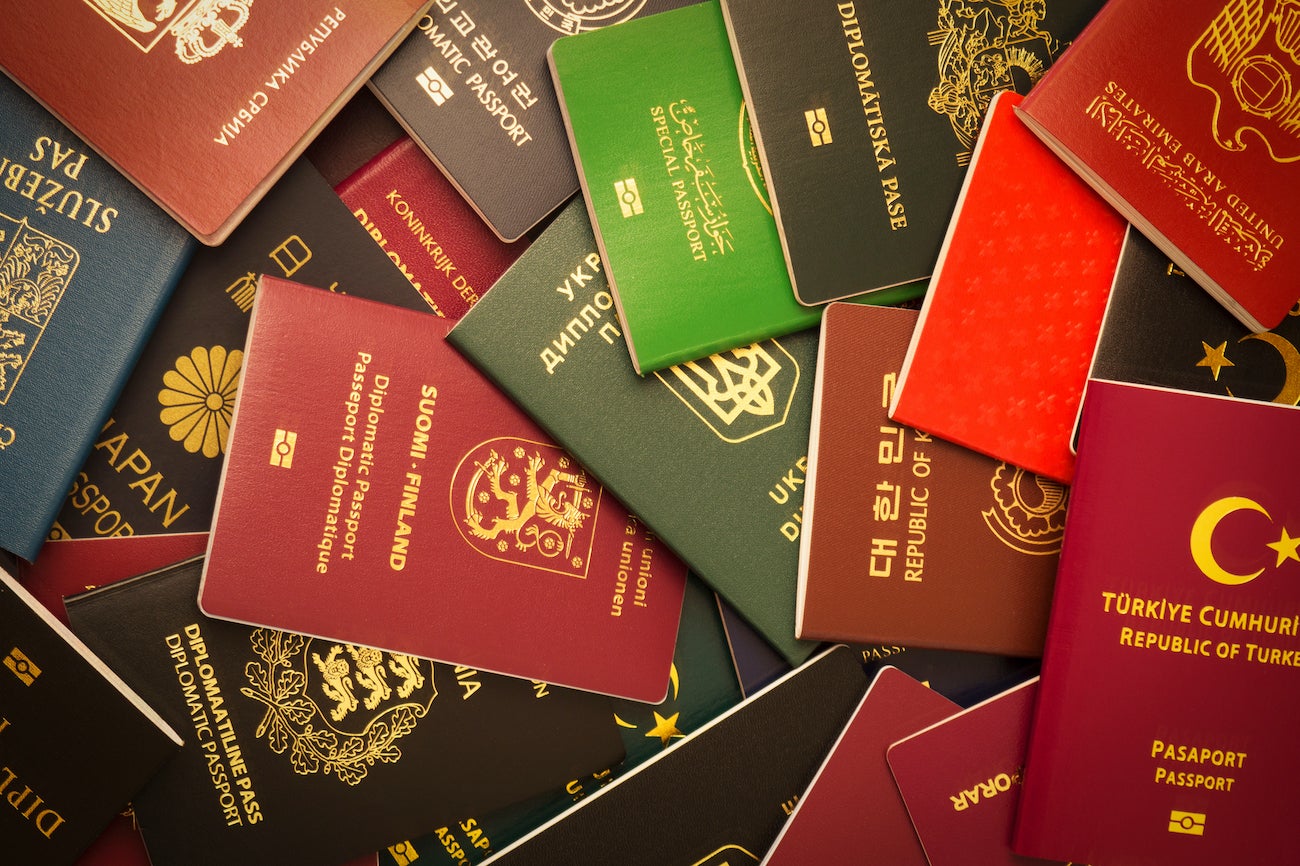
The countries listed below abide by the usual six months of passport validity unless otherwise noted.
Non-Schengen countries in Europe, Asia and the Middle East
Abide by the usual 6 months of passport validity.
- Bosnia-Herzegovina
- New Caledonia
- North Korea
- Saudi Arabia
- Turkmenistan
- Turkey (British passports must be valid for at least 150 days from the date you arrive in the country)
- United Arab Emirates
- West Bank/Gaza Strip
Passport must be valid 3 months beyond the scheduled departure date
Passport must be valid 1 month beyond the date of your intended stay, passport only needs to be valid for the proposed duration of your stay.
- Central African Republic
- Cote d'Ivoire
- Democratic Republic of the Congo
- Equatorial Guinea
- Morocco (British passports must be valid for at least three months on the date of entry)
- Sao Tome and Principe
- South Africa (passports must also have 30 days beyond your intended date of exit from the country)
- South Sudan
Canada, Mexico and the Caribbean
- Antigua and Barbuda
- Dominican Republic
- Trinidad and Tobago
Central and South America
- El Salvador
Passport must be valid 3 months beyond arrival
- Brazil (British passports need to be valid six months beyond arrival)
South Pacific
- American Samoa
- French Polynesia
- Marshall Islands
- Papua New Guinea
- New Zealand
Bottom line
When examining the rules, note that some countries have a slight distinction: They may require validity to be either six months from the date of entry or six months from the date of intended departure . For simplicity, we've taken the conservative approach and assumed that for any country with a six-month rule, like most of the ones above, you should ensure your passport is valid six months past the date of intended departure just in case.
Of course, the list above only includes just a few popular destinations worldwide. If your intended destination isn't on the list, it's always best to check with your relevant passport issuer.
I spent 9 months traveling the world. I had a great time, but I'd never do it again.
- I spent nine months traveling the world , and I wouldn't do it again despite having a great time.
- Because I was on a tight budget, I often found myself turning down cool experiences to save money.
- I also struggled to make genuine friendships and missed having a space to call my own.

When I was working remotely in 2021, my boyfriend and I packed up and traveled to 22 countries across Europe and Latin America.
Although these were some of the best days of my life, I quickly learned that a lot of the videos I saw on social media that glorified full-time travel didn't always showcase the downfalls of the lifestyle.
More and more people are becoming digital nomads — countries like Italy have even implemented specific visas for remote workers. But during my nine months abroad, I learned that the lifestyle isn't all it's cracked up to be.
Here's why I wouldn't travel full time again.
I found myself constantly looking for places and experiences that felt like home
While traveling full time, I found myself constantly looking for places and experiences that felt like home.
In some ways, it was cool to feel like a local in a new city. However, when I returned home and took shorter vacations, I started to value the places I was visiting for their differences rather than trying to find some semblance of home.
Related stories
Nowadays, I like having a home base. Shorter trips help me to break up the monotony of life without sacrificing the comfort of home.
It felt like I was constantly thinking about money
When I was traveling full-time, I was on a strict budget . I either drained my wallet or ate cheap food to maintain some sort of financial security while on the road.
I talked myself out of going to every museum I wanted to and purchased cheap meals for dinner instead of indulging in local cuisine that might have been out of my budget.
The moments I would slip up on my spending were when I forgot this wasn't a never-ending vacation, but rather, my new everyday life.
During the first two weeks of our trip, I wanted to go to all of the must-try restaurants in Paris . However, I soon realized that came at the cost of establishing a strict daily budget for the remainder of our three weeks there.
Of course, it was worth it in the end to save money so that I could travel for nine months. However, now that I take a few shorter trips a year, I have more flexibility to make them everything I want them to be.
My friendships at home changed, and the new ones I made were fleeting
I think what travelers yearn for the most is community. When I was traveling, it was really hard to find the same quality of friends that I have at home.
When I did meet friends abroad, it was often short-lived. I found that many people traveling full time were only in a city for a few days. Even when I did find someone I connected with, it was hard to maintain a long-distance friendship.
Traveling full time also took a lot out of my friendships at home, as it seemed like they learned to live without me.
When I returned home, it felt like we didn't have as much in common as we used to. It took me months to get my friendships back to where they were before I left.
I missed having a space to call my own
While traveling, I stayed in 25 different places across nine months. Although seeing so many new places was cool, I missed having a space to call my own.
After spending so many nights in beds that weren't my own, it was an indescribable feeling to come back home. In fact, when I got back, I was able to create a space that took inspiration from the places I'd been.
I think traveling is something everyone should prioritize, but there are ways to see the world that don't involve doing it full time.
Nowadays, I plan to take at least four international trips a year, ranging from one to two weeks. This allows me to live a travel-filled life without giving up the comforts of home, career, and relationships.
Watch: Exclusive interview with Elon Musk on Twitter fame, loneliness, and the future of AI
- Main content

- Work With Me
- SEO Services
- All Destinations
- Philippines
- Timor-Leste
- United Arab Emirates
- Czech Republic
- Netherlands
- Switzerland
- ALL Oceania
- New Zealand
- ALL North America
- United States of America
- ALL South America
- South Africa
- Adventure Travel
- Budget Travel
- Nature Travel
- Digital Nomad Life
- Australia – Sydney
- Colombia – San Andres
- Costa Rica – Tamarindo
- Czech Republic – Prague
- England – London
- Guatemala – Antigua
- Labuan Bajo
- Nusa Penida
- Japan – Tokyo
- Puerto Escondido
- New Zealand – Queenstown
- Netherlands – Amsterdam
- Spain – Barcelona
- Thailand – Bangkok
- UAE – Dubai
- Atlanta, Georgia
- Los Angeles, California
- Miami, Florida
- Orlando, Florida
- Vietnam – Ho Chi Minh
- Plan Your Trip
- Blogging Tips
- Boost Your Traffic For Free!
Europe Trip – 6 Months, 16 Countries, 55 Cities, 11 Languages
At A Glance
- 55 cities,
- 16 countries.
That’s one third of the 44 countries in Europe.
- And 8% of the world, out of the 195 countries in the world.
Get more travel tips & hacks for your favourite destinations!
55 cities,, 16 countries., and 8% of the world, out of the 195 countries in the world..
And that’s the number of places I’ve covered in 6 months while travelling around Europe from January to June 2015.
Equipped with my Europe packing list , I set off to Europe for the first time, and I’ve discovered a world far bigger than I’ve imagined.
You can find some of the Europe trip itineraries from the cities I’ve been to below in that 6 months in Europe. This is especially useful if you’re looking to travel Europe on a budget .
In chronological order, I’ve been to:
- Zaanse Schans
- Trouville-Deauville
- Georgensmünd
- Cinque Terre
- Vatican City
You may find links accompanying each of the destinations I’ve been to. They contain my personal experience while spending the 6 months in Europe, as well as some handy tips for making the most of your experience there.
Planning a trip to Europe needn’t be stressful or overwhelming. You can start with this list of 50+ Europe travel tips that teaches you the best way to travel Europe. The cheapest way to travel Europe is by budget airlines, buses and trains.
Europe is a cluster of countries that are relatively close by, so travelling between cities and countries are less arduous than countries like USA or Canada where the land area is massive!
This page will be continuously updated with up to date links, so keep checking back!
If you have further queries regarding the destinations I’ve been/ how to budget, feel free to ask me !
‘Til then, au revoir !
Neglecting to broaden their view has kept some people doing one thing all their lives. – Napolean Hill
Region(s) you’re most interested about?
- North America
- South America
- Just send me life updates about you!
Isabel Leong
Full-time travel blogger at Bel Around The World and SEO coach roaming the world at a whim, Isabel helps aspiring content creators and brands get the most out of their online presence by attracting organic leads/traffic and achieving financial freedom with her Skyrocket With SEO course. She's closely involved in and has been featured as a speaker in other travel & digital nomad networks & podcasts such as Traverse, Travel Massive, The Nomadic Network and Location Indie.

Hi! I'm Isabel, a full-time traveller and digital nomad from Singapore. In the past 10 years, I've lived in New Zealand , Japan , Kauai Hawaii , Mexico , Costa Rica and Bali . Pulling from my own world travel adventures and blogging lessons, I share my tried and tested tips, so that I can get YOU to work LESS and play MORE!

Previous Post Best Restaurants in Ghent (Bonus: Includes Top Cafes in Ghent!)
Next post top things to do in malaga, spain, 18 comments.
Bel28 is a sunday in Singapore.
This looks awesome, what a great trip 🙂 Which one was your favourite ?
It’s hard to say – each gave me a very special experience. I loved the mountains in Switzerland, the plains in the Cotswolds, the hot air balloon in Turkey, the cosmpolitan Amsterdam and the tarts in Portugal! Have you been to these places? 🙂
Wow! That is really amazing….traveling the world, meeting people, learning cultures, marveling nature as well as man-made architectural wonders…this is what great life is made of.
Yes I can’t agree more! Everyone should take the time to do that once in a while- to truly LIVE.
wow this is amazing!
Yeah when I look back and see how far I’ve gone, I amaze myself too.
Yes I am sure!! amazing!
Thanks a lot Lynz 🙂
- Pingback: I travelled through Europe for 3 months on $83 budget a day | Mothership.SG
Hi, do you have the itinerary for your travels? It’s quite difficult planning how to get to places and which places to go next! 🙁 Thanks in advance!
Hi Pee Jay,
Thanks for popping by!
Where exactly are you looking at? I might have depending on which destinations you’re going to! 🙂
Hi Isabel, most of the countries which you have visited are in the Schengen region (except UK).How did you manage to stay in the regions for 6 months? According to the travel rule, traveller only can stay in Schengen region for 90 days out of 180. Kindly advise
Hi Edison, Thanks for your query! I was on a student exchange that’s why. 🙂
- Pingback: How I Became A Full-Time Travel Blogger
- Pingback: How I Became A Full-Time Travel Blogger | SuperThought
As a Brit I am slightly biased, but please return and see more of the country! Especially Devon and Cornwall; Pembrokeshire; and the some of the cities and national parks up north such as the lake district and Yorkshire dales. Scotland would be its own trip entirely !
Granted a lot of what I would show people would involve a lot of coastal walks and hikes up mountains which isn’t everyone’s thing.
What an excellent guide and list. Thanks for sharing!
Leave a Reply Cancel Reply
Save my name, email, and website in this browser for the next time I comment.
- Destinations
- Privacy Policy
- Skyrocket Your Site Traffic!
Join the newsletter and get exclusive travel tips, giveaways and more!
There are times to stay put, and what you want will come to you. And there are times to go out into the world and find such a thing for yourself. – Lemony Snicket
© 2024 Bel Around The World. All Rights Reserved. Website design by Hello Pomelo .

6 months on the road – Our Travel Expenses
Categories Belize , Central America , Guatemala , Mexico , Travel Reflections , Travel Tips , USA
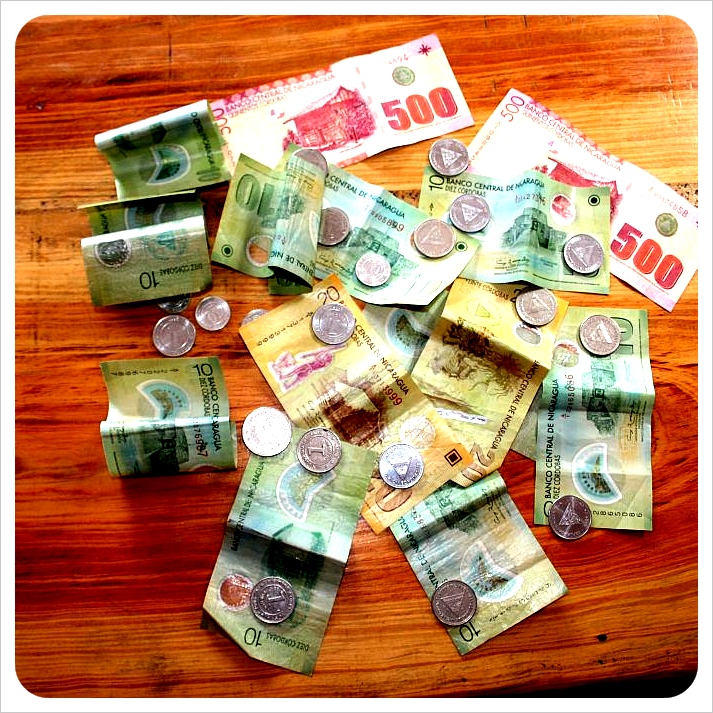
Last Updated on January 16, 2023
October 30th marked our 6-month travel anniversary, and while we’re sharing our Travel Tops and Flops and reflection on ‘ 200 Days on the Road ’ on our 200-days travel anniversary on 15 November, the six-month marker seemed the right time to take a look at our expenses so far – including how much we have spent, where the money went, and what our average per day spend has been in each country. Luckily, Dani keeps a very exact expenses sheet calculating our outgoings to the last centavo , with up-to-date exchange rates telling us each day just how much every hotel room, bus ride, and ice cream cone costs in British Pounds (the currency we earn), US Dollars and the local currency. Read on for our detailed 6 months travel budget:

Table of Contents
Expenses in the U.S.
When we left London for Las Vegas on 30 April, we had no idea how expensive the U.S. would be. Even with the strong British Pound lining our pockets, the U.S. was much pricier than we thought.
By far our most expensive country so far, we spent a mind-boggling $8,333.00 /£5,530.60 in those 70 days. Major expenses within this figure include both our flights from London to Las Vegas and L.A. to Mexico, plus an Enterprise rental car which we had for two months. Excluding these numbers, our actual daily spend was $4,628/£3,071.60 , or roughly $ 1,356/£900 per person per month.
Transportation: Our trusty Chevy Aveo rental ran us $1700 / £1,128 (including optional $560 insurance), which averaged out to $28.33 / £18.80 per day . At first glance (and second, and third) it might seem a luxury, but without the car, we could never have explored the South West, or drive the classic Pacific Coast Highwa y from L.A. to San Francisco as well as from San Diego to Tucson , making this a totally necessary expense. We drove 5200 miles, and of course the cost of gas and parking fees also added up to be quite expensive.
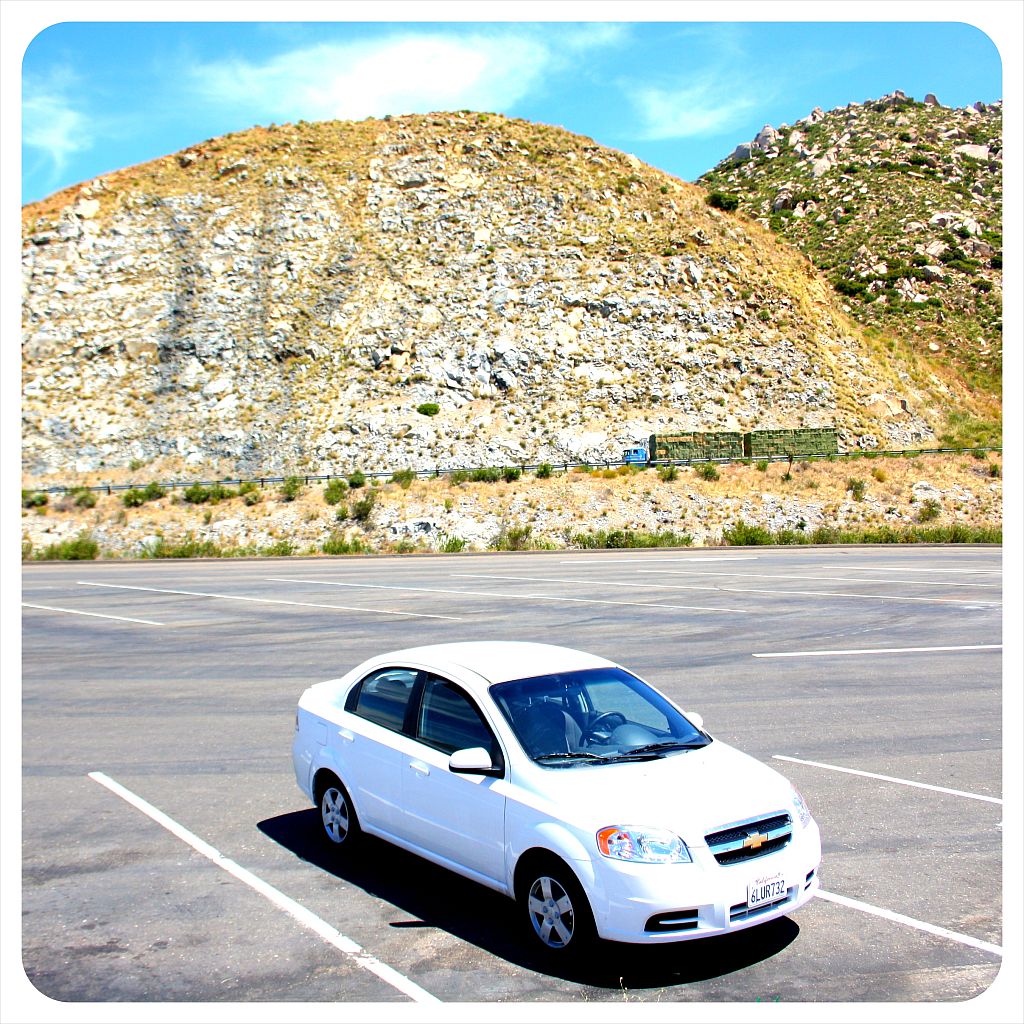
Average accommodation per night based on two sharing: $45/£29.
Tip: Accommodation costs might be higher in the US than in Latin America, but there are also incredible deals to be found online which are much harder to come by in the less deal-savvy neighbors to the south. Websites such as booking.com or lastminute.com allowed us to score excellent rates on hotels than just showing up ever did. On a few rare occasions we were able to negotiate a better rate on site.
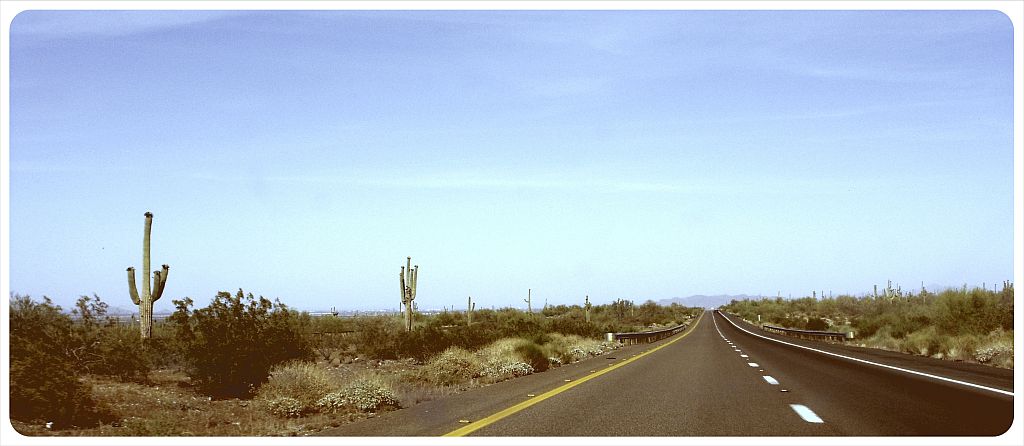
Regardless of the relatively high costs of exploring the southwestern United States, we managed to do both Los Angeles and San Francisco on a shoestring and kept our spending lower by including house-sits and visiting friends.
Average per day per person: $ 45/£30 (including car).
Our spending dropped significantly once we crossed the border into Mexico – in total we spent $3622.26/£2367.78 in 88 days.
Accommodation: In Mexico, we stayed in mix of hostels and budget hotels. The cheapest accommodation cost $12/£8 for both of us at one of our favorite places– La Candelaria in Valladolid . The most expensive room at Posada Ziga in Mazunte was $35 /£23.
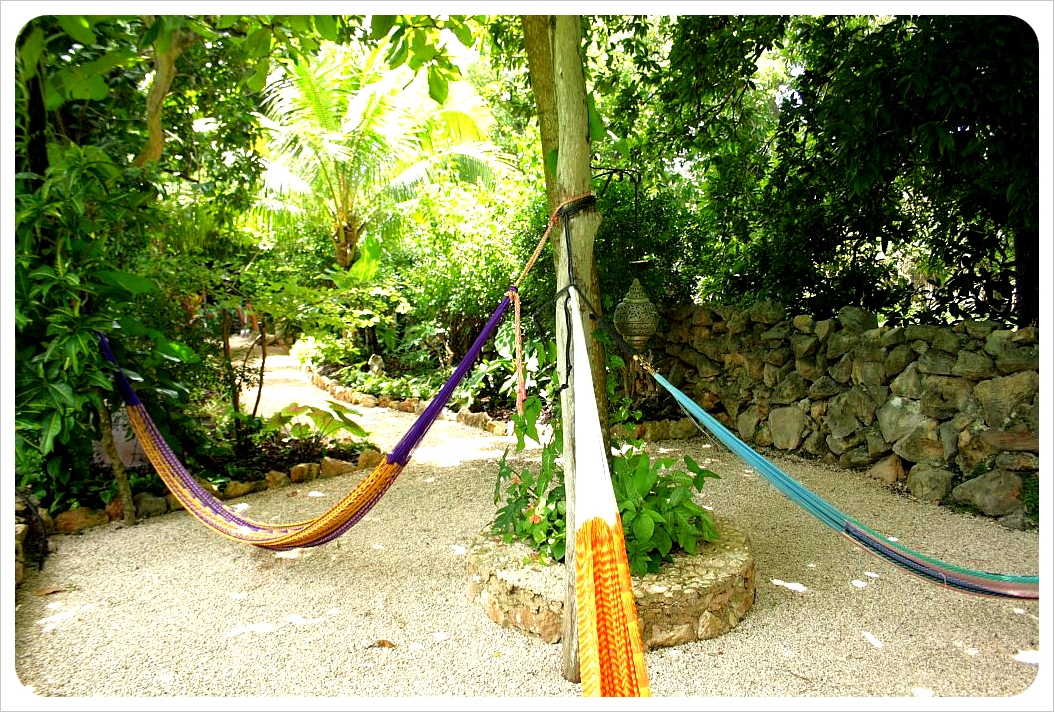
Food: Our meals in Mexico cost around $12/£8 for dinner for two, and breakfast for about $10.50/£6.90 for two people. As anyone who reads us often will know, however, inexpensive (and delicious!) street food was our main meal of choice and we rarely ate in restaurants.
Culture: Mexico is teeming with cultural options and we visited everything from museums to galleries to both Maya and Aztec ruins. The ruins all have a set price of 51 Pesos, or $3.95/£2.55 per person, with one exception: Chichen Itza , which costs around $14/£9 per person.
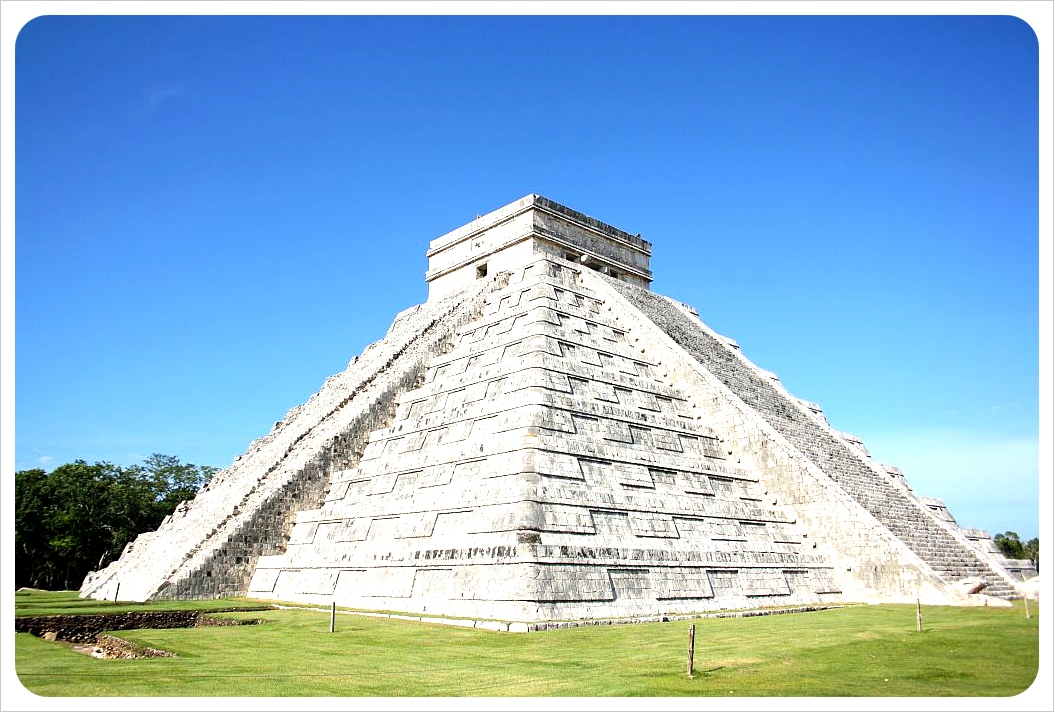
Average total cost in Mexico per person per day: $20.58/£13.45
We already knew through the grapevine that Belize was going to be more expensive than the rest of Central America (Lonely Planet suggests US$40 – $60 per day), but we were still surprised that costs were as high as they are for such a sparsely populated and economically struggling country like Belize (read our tips for Belize on a shoestring here ). We could’ve lowered our six months travel budget considerably had we skipped Belize.
Accommodation: We stayed in fairly basic accommodation in Belize, no bells or whistles, but always private rooms.
The average cost was US$22.50/£14.20 for a double en-suite room.
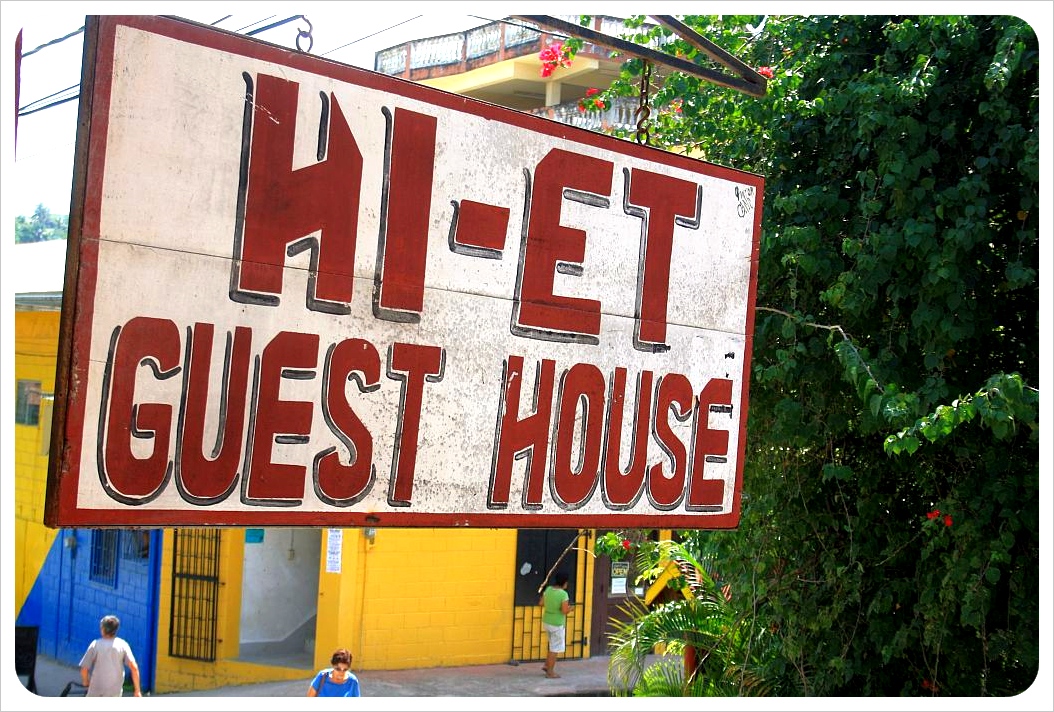
Food: Meals in a restaurant both on the Cayes and in San Ignacio cost around $20/£12.60 for two, including a beer or two here and there. Belize is not that big on street food, so sitting down and ordering is a must for your main meals of the day.
Adventure : We took advantage many of the adventurous activities available to visitors in Belize. Snorkeling with Harry and Steve (recommended, just ask around) on Caye Caulker cost US$40/£25.25 each for a full day, or US$20/£12.63. The ATM cave tour was $65 each (discounted). All of our fun over 11 days totals $348/£200 .
Average Cost Per Person Per Day: $54/£34.10
Crossing the border into Guatemala after our expensive stay in Belize felt good, and our expenses have been much less here.

Transportation : Take a chicken bus, and this will be your cheapest expense in Guatemala. Long-distance bus travel by chicken bus costs around $4.00/£2.55 per person – the more comfortable 1 st and 2 nd class coaches are considerably more expensive – the overnight bus we took from Flores to Antigua was $29.50/£19.50 per person.
Food : You can eat like a king in Guatemala and easily stay on budget. A decent meal for two in a restaurant costs around $10/£6.60 , though in Antigua, depending on the restaurant, this average can more than double. If you eat street food, you can eat for much less money, but to be honest, we didn’t love the street food in Guatemala .
Tikal : The highest expense in Guatemala was our trip to Tikal, which was around $66/£42.00 for both of us. This does not include accommodation in Flores, but does include the shuttle service to Tikal, the guide and entry fees.
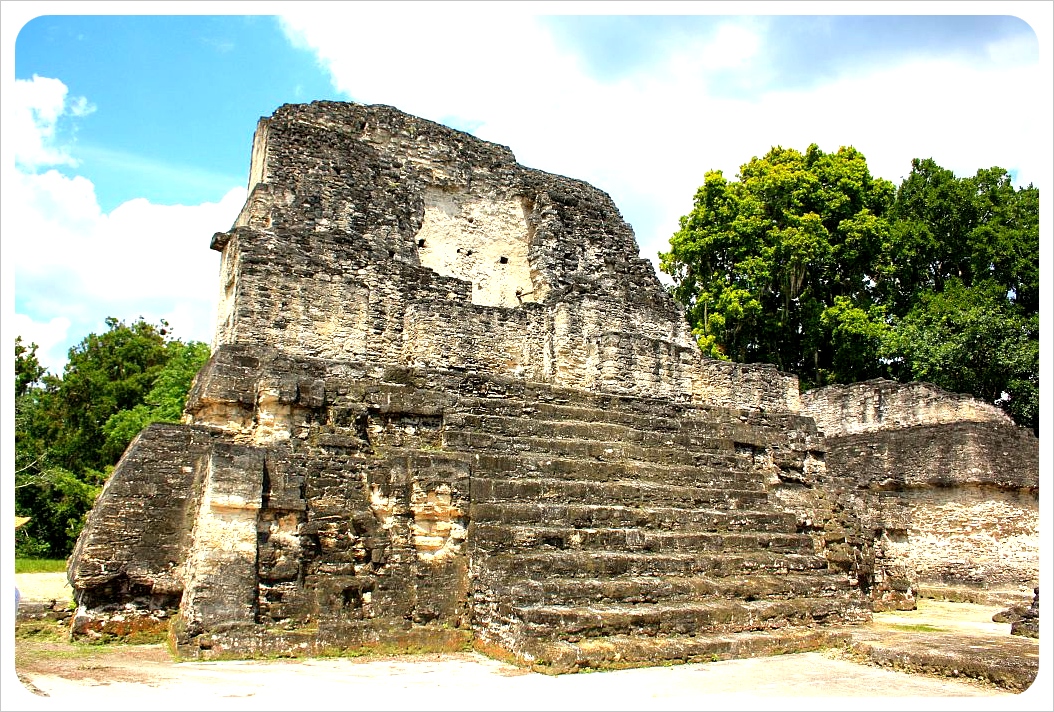
Total six months travel budget
In total, we spent around US$14,720/£9,646 for the two of us in 6 months, which includes all flights and public transportation, and more than two months in the U.S. We hope our next budget post in 6 months will be much less, with no major flights, hopefully a few more house-sits, and lower expenses in South America than we had for the first 70 days in the United States.
Total cost per person for 6 months: US$7,360/£4,823.00
We showed you ours… now you show us yours! We would love to hear about your budgets and expenses in the comments below to see how our spending compares with that of backpackers and digital nomads. What does your six months travel budget look like?
If you have tips on great deals, cheap but quality accommodation in the US, Mexico, Central America or South America, or other ways to save money, please do share as well!
Related posts:

By using this form you agree with the storage and handling of your data by this website. *
Saturday 16th of May 2015
Hi we plan to visit friends in Atlanta, GA, USA for a week and plan to travel by bus to Mexico on to Central America ending in Ecuador, Columbia and Venezuela. Could you please recommend entry route or city in USA into Mexico. Cheers. James
Hi James, I'd recommend traveling from San Antonio, TX to Laredo and cross into Mexico there. I am not sure about safety in that part of Mexico though - heard Monterrey (the closest big city in Mexico on that route) was getting a bit rough. You might want to cross over in El Paso instead. That way you could incorporate the gorgeous Copper Canyon train ride in Chihuahua in your trip.
Tuesday 28th of October 2014
Hi, me and my friend wanted to go traveling around America for 3 months visiting la,newyork,Texas,San Francisco,Nashville and Las Vegas but neither of us would feel confident enough to drive so would be using transport and flights . Would be better of booking through travel agents or paying as we go and what would you recommend would be the average cost per person xxxxx
Wednesday 30th of July 2014
I just came across your blog and I have to say its just genius! My friend and I are planning on road tripping through the USA from Miami to California (stopping by Las Vegas) and perhaps flying to NYC at the end. The idea is to rent a small car and camp where we can/sleep in the car if need be! We are planning on leaving in January and staying for 90 days (Jan to end of March). So far we think that £8000 between us will be enough as its basically off season, but Im starting to doubt. Do you think £4000 for 90 days each will be enough?
Thursday 31st of July 2014
Hi Yasmine, thanks for your comment - so awesome to hear that you're road tripping through the US next year!! I definitely think that you'll have enough money - at the current exchange rate that's nearly $7k and we didn't spend that much per person! I think if you calculate 2,000 per month, you'll be traveling comfortably. We found lots of decent places on sites like Booking.com in the $50- $70 range (sometimes only a day in advance), between two people. The car rental shouldn't cost you much either - there are always good deals to be found; and gas is sooo cheap compared to the UK! So let's say you Please feel free to get in touch if I can help out with anything more specific. Enjoy your road trip - it'll be epic!!
Monday 23rd of June 2014
Hi! I am trying to find some information on travelling between countries in Central America. My friend and I are starting in Belize and hoping to hit Guatemala, Honduras and Nicaragua in 14 days. Not sure if this is too ambitious?? We don't want to rush through but at the same time want to see as much as possible. I saw your note about the public busses between Belize and Guatemala, are there similar types of transportation between the others I mentioned? Sorry if you posted this somewhere else on the site, haven't seen it all yet! Thanks in advance!! :)
Wednesday 2nd of July 2014
Hi Laura, your plans do sound quite ambitious! Maybe you should just focus on Guatemala and Honduras instead? There are so many places in Guatemala alone that I wouldn't skip: Lake Atitlan, Antigua, Chichi, Tikal, Lanquin and Rio Dulce - from there you could hop right over to Copan (Honduras). There are chicken buses over the borders in each country (usually they go to the border and then you take another bus on the other side) but I remember that there was also a cheap tourist shuttle from Antigua to Copan for only $10. Enjoy Central America!
Janice Stringer
Wednesday 5th of March 2014
Australia ate our family finances alive and was a complete culture shock after spending time living cheaply in Asia!

An official website of the United States government
Here’s how you know

Official websites use .gov A .gov website belongs to an official government organization in the United States.
Secure .gov websites use HTTPS A lock ( Lock A locked padlock ) or https:// means you’ve safely connected to the .gov website. Share sensitive information only on official, secure websites.

- Documents Library
Six-Month Validity Update
- Credit cards
- View all credit cards
- Banking guide
- Loans guide
- Insurance guide
- Personal finance
- View all personal finance
- Small business
- Small business guide
- View all taxes
You’re our first priority. Every time.
We believe everyone should be able to make financial decisions with confidence. And while our site doesn’t feature every company or financial product available on the market, we’re proud that the guidance we offer, the information we provide and the tools we create are objective, independent, straightforward — and free.
So how do we make money? Our partners compensate us. This may influence which products we review and write about (and where those products appear on the site), but it in no way affects our recommendations or advice, which are grounded in thousands of hours of research. Our partners cannot pay us to guarantee favorable reviews of their products or services. Here is a list of our partners .
Need a Passport for a Trip? Give Yourself a Big Time Cushion

Many or all of the products featured here are from our partners who compensate us. This influences which products we write about and where and how the product appears on a page. However, this does not influence our evaluations. Our opinions are our own. Here is a list of our partners and here's how we make money .
If you’re a procrastinator and your passport is set to expire, hopefully you don’t have an international trip planned within the next three months (at least). The U.S. Department of State is warning of massive delays in turnaround times both for issuing new — and renewing existing — passports.
U.S. passport renewal
Passport renewal applications can be done in person or by mail. Either way, the State Department suggests leaving at least three months (or more) between the time you submit your passport application and the day you receive the actual passport.
Current posted processing timelines are as follows:
Routine processing: Six to eight weeks.
Expedited processing: Two to three weeks.
Plus, that doesn’t even account for time to put together your application. Though not as onerous as first-time passport applications, you’ll still need to put in effort to gather some materials, such as a photograph from the last six months.

Applying for a U.S. passport for the first time
Children under age 16, first-time applicants and applicants who had their passport lost or stolen must apply in person — no mail-only option is allowed. Budget time to get an appointment at a local acceptance facility, which is typically a post office, library or city clerk's office.
Appointments are required at some, but not all, locations. Once you’ve applied at an acceptance facility, expect even lengthier processing times than what the renewal folks will experience.
If you need your passport sooner than the routine processing timeline noted in the previous section, you can pay $60 for expedited processing. But even still, the speedy version still takes several weeks.
And again, make time to gather your application materials, which includes evidence of U.S. citizenship for new passports. If you need time to track down your birth certificate from that dusty box in your parent’s garage, hopefully your international trip is even further than just a few weeks out.
» Learn more: 5 steps to take if you lose your passport
Your passport may need at least six months' validity remaining
Sometimes, even a valid passport that’s set to expire soon might be insufficient. Some countries require passports to be valid at least six months beyond your trip dates.
So even if your passport doesn’t expire until 2024, your late 2023 travel plans may be in jeopardy if your passport expires within six months of that trip. Some airlines won’t even let you board with a passport set to expire within that window. See which countries have such requirements via the State Department’s Country Information page .
What if you can’t wait that long to renew your passport?
With luck — and some extra money — you may be able to get your passport sooner. The State Department offers a few types of rush passport services:
Pay extra for expedited service by mail
For an additional $60, you can have your passport renewal processed on a shorter timeline. “Expedited” is a bit of a loose term here, and you’ll still need to plan for some turnaround time.
Additionally, the State Department recommends purchasing rush mail delivery, which costs an additional $18.32 for 1-2 day delivery of your completed passport.
Use this service if: You need your passport within the currently posted expedited processing timeline.
Claim a life-or-death emergency
Hopefully you don’t fall in this category, but if you have an eligible life-or-death emergency (eligible reasons include having an immediate family member outside of the U.S. who has died, is in hospice care, or has a life-threatening illness or injury) and you need to travel to a foreign country within three business days, you may qualify for an emergency, in-person appointment.
You’ll have to provide proof of the emergency, such as a death certificate or letter from the hospital, plus your airline ticket and passport application. From there, you’ll have to call the State Department’s Life-or-Death Emergency Service number to make an appointment.
There are only about two dozen locations nationwide offering such appointments, so you’ll likely need to make domestic travel plans just to get that rush passport.
And to make matters worse, you can’t make an appointment online. Due to the massive backlog, the State Department has actually disabled its online booking system. Bake in extra time to listen to on-hold music.
Use this service if: You need your passport within three business days and you have a valid emergency.
Hope for the best
You may also qualify for a rush passport if you have urgent international travel plans within two weeks but don’t have emergency proof.
Appointments are extremely limited though, and the State Department warns that there’s no guarantee you’ll get an appointment. Like the emergency process, you’ll have to call the same number (no online appointments either) and get your passport in person at one of those roughly two dozen locations nationwide.
Use this service if: You need your passport within three business days.
Why are passport processing times suddenly so slow?
Especially at the beginning of the COVID-19 pandemic, passport processing times massively slowed. At one point, the State Department recommend leaving 18 weeks (that's more than four months) due to not just its own processing delays, but mail delays from the U.S. Postal Service.
In 2020, the State Department said processing times were roughly 12 weeks. But in the years following the initial shock of lockdowns, processing times got even higher — up to as many as 13 weeks. They have since started to level-off.
The State Department is chalking it all up to a record number of people applying for passports and renewals of existing ones. In fact, the State Department estimates that 2023 is on track to set the record for the highest demand of passports ever, far surpassing volumes seen during previous surges in demand in 2007 and 2017.
In some weeks during the winter of 2022 into 2023, the Department received more than 500,000 applications. Not only did that exceed projections, but it marked a record number for that time of year.
Renew your U.S. passport now
With most borders open now and far fewer COVID-19 restrictions, international travel might be one of your top-of-mind vacation plans. But here’s something you never want on your mind: stressing over a rushed passport.
Beyond just the agony, rush passports can be expensive given the fees for expedited service, the cost of faster shipping and the potential extra trip to visit one of the few emergency passport centers.
Check now to see when your passport expires. If it’s anytime in the next year or so, start the application process now. There are enough reasons that travel is stressful, complicated and expensive already. Don't let an expired passport be one of them.
How to maximize your rewards
You want a travel credit card that prioritizes what’s important to you. Here are our picks for the best travel credit cards of 2023 , including those best for:
Flexibility, point transfers and a large bonus: Chase Sapphire Preferred® Card
No annual fee: Bank of America® Travel Rewards credit card
Flat-rate travel rewards: Capital One Venture Rewards Credit Card
Bonus travel rewards and high-end perks: Chase Sapphire Reserve®
Luxury perks: The Platinum Card® from American Express
Business travelers: Ink Business Preferred® Credit Card

on Chase's website
1x-5x 5x on travel purchased through Chase Travel℠, 3x on dining, select streaming services and online groceries, 2x on all other travel purchases, 1x on all other purchases.
60,000 Earn 60,000 bonus points after you spend $4,000 on purchases in the first 3 months from account opening. That's $750 when you redeem through Chase Travel℠.

1.5%-6.5% Enjoy 6.5% cash back on travel purchased through Chase Travel; 4.5% cash back on drugstore purchases and dining at restaurants, including takeout and eligible delivery service, and 3% on all other purchases (on up to $20,000 spent in the first year). After your first year or $20,000 spent, enjoy 5% cash back on travel purchased through Chase Travel, 3% cash back on drugstore purchases and dining at restaurants, including takeout and eligible delivery service, and unlimited 1.5% cash back on all other purchases.
$300 Earn an additional 1.5% cash back on everything you buy (on up to $20,000 spent in the first year) - worth up to $300 cash back!

on Capital One's website
2x-5x Earn unlimited 2X miles on every purchase, every day. Earn 5X miles on hotels and rental cars booked through Capital One Travel, where you'll get Capital One's best prices on thousands of trip options.
75,000 Enjoy a one-time bonus of 75,000 miles once you spend $4,000 on purchases within 3 months from account opening, equal to $750 in travel.

The cost of traveling Europe: real budget numbers from 9+ years of travel

What is the real cost of traveling Europe?
How do you afford to do it full-time?
How much do I need to save if I want to travel in Europe for a year (or two years or a month or six months)?
As someone who has been traveling full time for nearly nine years, most of that time in Europe, these are probably the questions I get most often about my lifestyle.
Money, unsurprisingly, is the biggest obstacle people think they’ll face on the road. Because if vacations are so pricey, wouldn’t full-time travel be even more so?
(Psst. Here’s a full breakdown of why it’s not .)
This is why for the last 10+ years, while I’ve been traveling full-time, I’ve kept track of my budgets all over the world. Because the truth is that full-time travel can be expensive (just like staying put can be expensive), but it doesn’t have to be . And the only way I know to prove it is to share my own real budgets.
Today, I’m back to share more budget updates with you. More insights into how I travel full-time and what it costs to live and travel in Europe.
First, though, let’s talk about travel styles…

What full-time travel looks like for me
First, it’s important to say that there’s no right or wrong way to travel full time . There’s no standard. Every person I know who does it does it differently .
I have friends who circle back to their favorite places every single year. I have friends who are always chasing new adventures. I’ve met digital nomads who live out of hostels and move every few days and nomads who spend a year or more in one place.
So, before I dive into how I travel, I’ll caveat it by saying that my way is not the way . There are people who travel on a much lower budget than mine and people who travel on a higher budget than mine. There are people who travel faster and people who travel slower. This budget breakdown is based on my experiences and my experiences alone.
Okay, so what are my experiences ?

For the first few years, I traveled solo with my dog . For five years, I traveled as part of a couple (though my budgets here on the blog reflect my half of shared expenses + 100% of my personal expenses). And now I’m back to solo-girl-with-dog-takes-on-the-world. ( Here’s a comparison of costs solo vs. traveling with someone else .)
I mostly travel around Europe, though I’ve also done a bit of North and South America in the past few years (and before I hit the road full-time, I visited every continent except Antarctica).
I prefer to stay in one place for at least a month (and sometimes two or three) and I tend to rent comfortable apartments in local neighborhoods. If I’m staying in a hotel or hostel, it’s usually only for a weekend trip or a travel day.
I’m a foodie through and through, so I devote a large portion of my budget to good, fresh, usually organic food and I eat out pretty regularly, especially if I’m in a place known for its cuisine.
I work part-time (on writing books , content strategy and copywriting ). This means big chunks of my week are devoted to work, so someone retired or vacationing is likely to spend quite a bit more than I do.
And in my spare time, I love to cycle, hike, read, explore, and eat, most of which is cheap or free and keeps entertainment budgets on the low side. I rarely do museums or indoor attractions.

The cost of traveling Europe: monthly expense breakdown
Before we get into individual budgets around the world, here’s a breakdown of my general monthly expenses and how I approach them:
Housing : This was my biggest expense in the US, and it’s my biggest expense now. From 2012 to 2015, when I was traveling solo, I spent about $1,000 per month. In 2015 to 2021, my partner and I split the rent, so we could afford a nicer space and usually keep our individual spending on the lower side. I shot for under $800 per person per month and we often came in under $600 each. Now, solo again and with accommodation prices having risen over the years, I’m upping my housing budget to $1,500. I’ll still try to come in under when I can, but that’s my new ceiling.
So, what’s the secret to affordable accommodations while traveling in Europe? Traveling slow. Monthly rental costs are significantly lower than nightly or weekly rentals. On sites like Flatio and Airbnb, monthly discounts run anywhere from 20% – 70% .
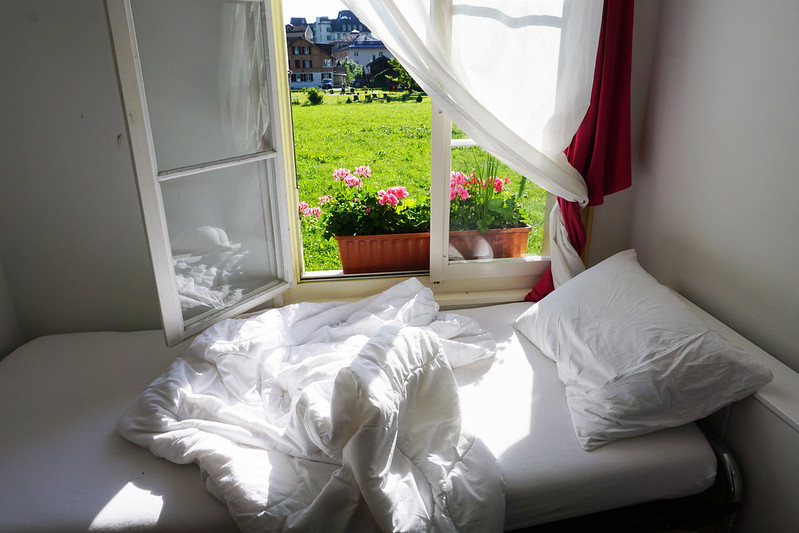
Food: Perhaps unsurprisingly, this foodie’s second highest expense is meals. I track my spending on groceries separately from my spending on eating out. I don’t put a budget ceiling on groceries because eating fresh, high-quality food is really important to me and I’d rather spend a bit more on groceries (and a bit less on other things) than take shortcuts with my health or joy.
In the states, I shopped at organic grocery stores and tried to buy healthier options, which were often a bit pricier. In Europe, I shop at fresh markets, local butchers, and tiny bakeries most of the time and stay away from imports that might have questionable chemicals or ingredients.
I always strive to only buy what I need and to buy it in the best quality, most local form I can. I mostly cook at home instead of eating out and when I do eat out I go for quality over quantity.
Recent grocery budgets have run about $393 ( Zagreb, Croatia ), $614 ( Thun, Switzerland ), $653 ( Bad Ischl, Austria ), and $429 ( Tartu, Estonia ). Eating out budgets in those same locations were around $257 (Zagreb), $0 (Thun), $41 (Bad Ischl), and $88 (Tartu). This means totals for those three places landed at $650 (Zagreb), $614 (Thun), $694 (Bad Ischl), and $517 (Tartu). As you can see, food spending varies, but not enormously. If you read my older budgets, you’ll also notice that the average has gone up over time (which makes sense, because inflation).

Transportation: Since I tend to stay longer in one place, transportation costs generally run pretty reasonable (e.g. far less than I spent when I owned a car). Every month or two, I buy a long-distance train ticket or two, and maybe once or twice a year I take a flight (though I try to fly as little as possible both because I hate flying and I try to be conscious of my environmental footprint).
In between big train journeys, I choose to walk whenever possible (which, in Europe, is nearly always) and only take buses and metros when the weather is walking-prohibitive, if the walk would be more than an hour long, if I’m carrying something heavy, or if I’m in a particularly busy city and the walk would be crowded or stressful.
These days, I spend anywhere from about $25 (Prague unlimited monthly transit pass) on a month where I’m staying put to $300ish (trains from Rennes, France, to Prague, Czech Republic) on a month when I’m moving from one base to another.
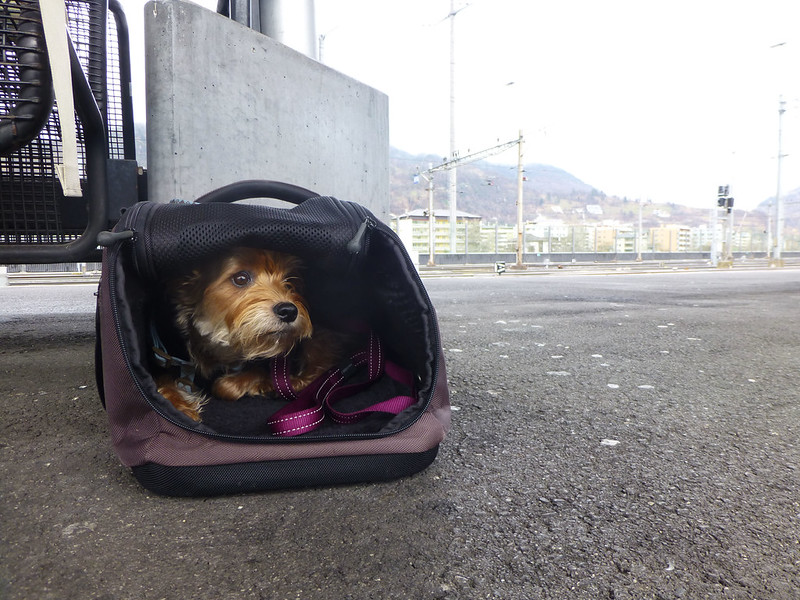
Luna the traveling pooch’s food and care: This varies a little from country to country, but rarely exceeds $200 per month. Luna eats a homemade diet primarily consisting of rabbit, fish, quinoa, and veggies (the diet was created with a veterinary nutritionist and if you decide to do the same, I highly recommend hiring one through your vet), and I’m not very strict about separating her food budget from mine, so expect that some of the grocery budget is actually going to Luna.
As with human health care, I’ve found vet care to be significantly more affordable in Europe (compared to the US). In Latvia, four injections, a blood test, two weeks of pancreatic enzyme pills, a vet consult, and an exam cost just over $100. In Dubrovnik, Croatia, in a similar vet emergency, the bill for the sedation, IV fluids, blood work, x-ray, exam, anti-nausea shot, and 100 days worth of pancreas pills was about $150. In the US, the cost would have been at least tripled in each of those cases. A single blood test in Colorado cost us upwards of $200 last time we were there.
Entertainment/fun money: When I’m traveling, most of my activities are free or cheap, so this line item is always pretty small compared to the others.
Supplies: These tend to run less abroad as well, in part because I am careful about what I buy, since I carry everything on my back, and, in part because I’m less bored and thus feel less of a need to shop. The ironic and wonderful thing about this is that the things I buy are often higher quality and more expensive, yet I generally spend less overall than I did in the states.

Health insurance and healthcare : Since I’m currently based in Portugal, I’m relying on the local health system. While traveling more extensively, I previously paid $268 per month for GeoBlue insurance that covered me anywhere in the world except the US. Before that, I tried travel insurance through World Nomads, which I found wildly frustrating (despite marketing themselves to travelers, they require you to jump through a LOT of paperwork hoops that require access to printers, scanners, and copy machines) and IMG Global, who ignored my emails and took months upon months to even acknowledge my claims after I was hospitalized on Malta. I would not recommend either company.
For anyone who’s used a healthcare system abroad, it’ll come as no surprise that pretty much everywhere in cheaper than the US. Pre-Obamacare, I paid $150 for three months of birth control pills in the US. A three-month supply (and a doctor visit to get the prescription) in Germany cost me under $100. In Switzerland, that number dropped to around $50. And in Vietnam, the same pills (same ingredients, different brand name) were $10 and available over the counter.
In all, I try to keep monthly spending under $2,500 (not including my business spending). And even with this as my budget ceiling, I often come in under. A few months ago, I did the math on the 30+ real Europe travel budgets linked below (scroll down for links) and the monthly average came in at $1,637 .
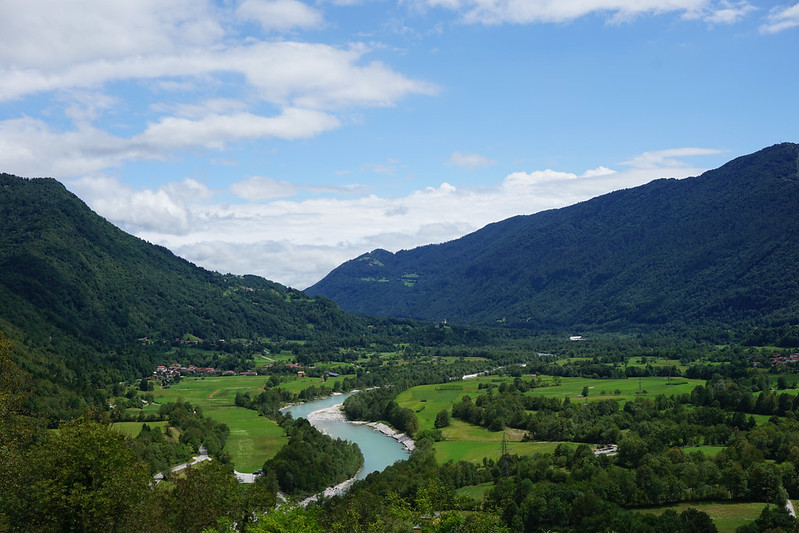
For those who’d like a more detailed look at my monthly budgets around the world, here they all are categorized by price range (click on the links for in-depth details on the budgets):
My real monthly budgets
From cheapest to most expensive monthly budget. Click on each location for a more detailed breakdown.
Non-European locations are marked with an *. My favorite places appear in bold. Cost is in parentheses. And I’ve indicated the year the budget is from (obviously account for some inflation when using budgets from 10 years ago) and whether the budget was solo travel or traveling with a partner/friend (partnered travel typically means lower housing costs).
Under $1350 per month:
Konjic, Bosnia and Herzegovina / one month ($1157) 2017 / partnered
Labin, Croatia / one month ($1175) 2021 / solo
Tartu, Estonia / one month ($1213) 2020 / partnered
Tulum, Mexico / one month ($1232)* 2018 / partnered
Kotor, Montenegro / one month ($1253) 2019 / partnered
Mostar, Bosnia and Herzegovina / one month ($1296) 2017 / partnered
Sayulita, Mexico / one month ($1301)* 2013 / solo
Riga, Latvia / one month ($1313) 2019 / partnered
Split, Croatia / one month ($1317 & $1241) 2019 & 2013 / partnered & solo
Zagreb, Croatia / one month ($1337) 2018 / solo
Playa del Carmen, Mexico / one month ($1350)* 2013 / solo

Under $1,500 per month:
Taormina, Italy / one month ($1364) 2017 / partnered
Porto, Portugal / one month ($1366) 2022 / solo, living full-time here
Kranjska Gora, Slovenia / one month ($1385) 2017 / partnered
Toledo, Spain / one month ($1388) 2015 / solo
Kobarid, Slovenia / one month ($1422) 2015 / solo
Brasov, Romania / one month ($1433) 2018 / partnered
Dubrovnik, Croatia / one month ($1443) 2017 / partnered
Tallinn, Estonia / one month ($1460) 2019 / partnered

Under $1,700 per month:
Interlaken, Switzerland / one month ($1558) 2019 / partnered
Ljubljana, Slovenia / two weeks ($808) 2015 / solo
Bad Ischl, Austria / one month ($1618) 2020 / partnered
Rennes, France / one month ($1648) 2018 / partnered
Nerja, Spain / one month ($1689) 2015 / solo
Edinburgh, Scotland / one month ($1697) 2012 / solo

Under $1,800 per month:
Ljubljana, Slovenia / second stay, one month ($1735) 2017 / partnered
Grenoble, France / one month ($1739) 2018 / partnered
Prague, Czechia / one month ($1752) 2018 / partnered

Under $2,000 per month:
Perugia, Italy / one month ($1882) 2013 / solo
Flagstaff, Arizona / one month ($1893)* 2016 / solo
Rome, Italy / one month ($1911) 2017 / partnered
Chamonix, France / two weeks ($962) 2015 / solo
Vancouver, Canada / one month ($1988)* 2016 / partnered

Over $2,000 per month:
Lauterbrunnen, Switzerland / three monthly budgets compared (varies) 2015 (and before) / solo
Amsterdam, Netherlands / two weeks ($1008) 2015 / partnered
Biarritz, France / one month ($2029) 2014 / solo
Innsbruck, Austria / one week ($511) 2018 / solo
Paris, France / one month ($2118) 2013 / solo
Thun, Switzerland / one month ($2124) 2021 / partnered
New York, New York, USA / one month ($2297)* 2018 / partnered
Zagreb, Croatia / one month splurge! ($2320) 2021 / solo
Opatija, Croatia / one month splurge! ($2897) 2021 / solo(ish)
Cycling across France / one month ($3091) 2015 / solo

My budgets for shorter trips
Now, what about short trips? Weekends, overnights, week-long vacations? I’ve got some real budgets on those too, though they’re fewer and farther between for me. Here are they, from cheapest to most expensive per-day:
Vrbovsko, Croatia / 3 days ($87 / $29 per day) 2021 / solo
Plitvice Lakes National Park, Croatia / 3 days ($184 / $62 per day) 2021 / solo
Denver to LA road trip / 2 days ($207 / $103 per day)* 2012 / solo
Tbilisi, Georgia / 10 days ($1050 / $105 per day)* 2019 / partnered
Colmar, France / 5 days ($539 / $108 per day) 2019 / partnered
Paris, France / 5 days ($663 / $133 per day) 2019 / partnered
Emilia Romagna, Italy / 5 days ($776 / $155 per day) 2014 / solo

Business costs
It’s worth noting that you won’t see any business costs in the above budgets. My business expenses vary greatly based on what I’m working on, how much active marketing/sales I’m doing, and what kind of side projects (blogs, self-published books, etc.) I’m taking on.
The few consistent things I pay for business-wise include:
Subscriptions for Microsoft Word, Adobe Photoshop, cloud storage, and a media subscription or two.
I now own a cell phone (turns out living full-time in Portugal requires one), but I also need a US number, so I use TextNow on my iPad for US calls/client calls. The basic number is free (because they serve up ads), but I pay a small fee in order to get a few extra benefits.
Business insurance , which runs me about $50 per month, and a yearly fee (about $100) for my registered agent to handle my LLC renewal and receive any business mail for me.
Once a year or once every few years, I also have expenses for web hosting and domain renewal for the website. This usually costs me less than $100 per year.

Taxes: Finally, a note on the most unavoidable of all expenses – taxes. In general (though not in every case), you are expected to pay taxes in the place you reside. If you live in the US, you pay in the US. If you live in Switzerland, you pay in Switzerland.
If you’re from the US, you’ll always have to file US taxes even if you’re a resident abroad, but you may be eligible for the FEIE , which is basically there to prevent you from paying double taxes. (Rather than get into it further here, I’ll suggest you book a consult with a US tax accountant. Many do free first consults and they will know so much more than I do about all the ins and outs of your particular situation.)
NOTE: If you’re paying in the states and self-employed, taxes are due quarterly, not yearly. This means when I’m paying in the States, I sit down every quarter and calculate the taxes I owe and send the government a check. At the end of the year, I hire a tax whiz (which generally runs me another $350 – $500) to help me make sure everything has been paid and filed properly.
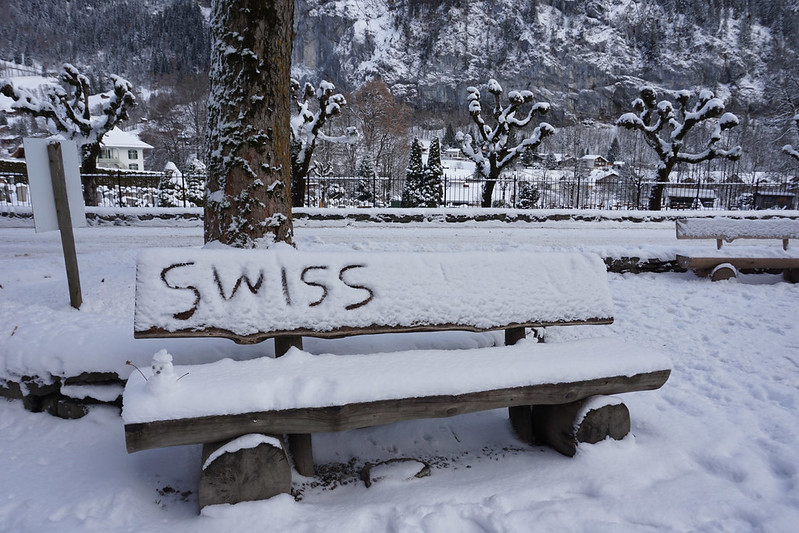
Air travel expenses (& other big one-time costs)
There are a few things I don’t budget for monthly (or include in my monthly budget posts) because they are yearly or quarterly expenses and may vary greatly from month to month. One of these things is plane tickets .
I’m not a traveler who flies a lot, preferring to explore one continent thoroughly at a time and take trains where possible both because it’s simply a more pleasant way to travel, because it’s more environmentally responsible, and because the older I get the worse my motion-sickness gets, so flying has stopped being even a little bit fun.
So, since I’m not buying them monthly or even bi-monthly, I usually don’t track plane ticket costs monthly and instead factor them into my budget on a quarterly or yearly basis.
In 2021, I took four flights (one-way Switzerland to Croatia, one-way Croatia to Portugal, then round-trip Portugal – Croatia to collect my visa). In 2022, I only took one (one-way from Paris to Porto – I took trains in the other direction).
Replacing technology (my laptop or tablet), big one-time medical expenses, and other large one-time purchases (like my folding bike) are also something I look at quarterly or annually rather than monthly.

Saving money while traveling full-time
Finally, for me, part of feeling comfortable starting my business and then, a year or so later, leaving to travel full-time was having a decent financial buffer in the bank. I was advised while starting my business to have at least six months worth of expenses in the bank just in case. Being a bit neurotic about money, I waited until I had 10 months and enough clients that I was already almost breaking even.
Similarly, when I started traveling, even though I would be working normally and hopefully earning normally, part of feeling comfortable was the knowledge that I had a buffer. If all my clients ditched me in month one, I could live for a year without income (assuming I lived relatively frugally).

Everyone operates differently on this. When my aunt started her business, she quickly went into debt. Yet she was wildly successful over time. I’ve also heard stories of those who moved to a cheap part of Asia to start their business, which meant the limited funds they had could last them much longer while they got things off the ground. I know one man who told me it’s going to take $150,000 to start his business. Another woman told me a success story that started with just 3,000 euros in the bank. An old roommate told me she’s been traveling and working for years with just a few hundred euros to her name.
My income is variable , but I also try to set aside a decent percentage each month for the future –both to tackle unexpected expenses or emergencies, to be prepared for my yearly tax bills, and, of course, to create more security for myself in case I ever cannot or no longer want to work.

Any expenses you tend to have during travel that I haven’t mentioned? Any questions about travel expenses and budgeting? Toss them in the comments.
Share this post!
You may also like
How much does it cost to spend a month in konjic, bosnia and herzegovina, europe on a budget: 6 exceptional places i spent less than $1,500 per month, how i make money while traveling the world full-time: behind the scenes with a..., how much does it cost to spend two weeks in ljubljana, slovenia, how much does it cost to spend a month in tulum, mexico, how much my digital nomad lifestyle costs: real budget numbers from 6+ years on..., leave a comment cancel reply.
Save my name, email, and website in this browser for the next time I comment.
17 comments
This is so cool. Thank you for this.
I’m living in a tiny house on a farm right now, but after my kid graduates high school I – or perhaps both of us – have considered living like this for a while. I’m building up my author/editor business, and it certainly would be nice to get around. I get really restless staying in one spot too long.
Glad you enjoyed it! And good luck!
Idnloke to know more about working abroad
If you are looking for info on my freelance career, here’s the skinny: https://gigigriffis.com/how-i-make-money-while-traveling-the-world-full-time-behind-the-scenes-with-a-location-independent-writer/
If you are looking for info on jobs abroad, I’m sorry to say I don’t have much info on that.
I’m not brave enough to try this with my husband and two kids, but I loved reading about how you do it! Kudos!!
Thanks for sharing your experience! This gives us an idea of how to budget for travel in Europe.
I am really enjoying following your adventures. I am waiting for a Portuguese residency permit and will be dipping my toe in the nomadic water soon. One question I am grappling with – what do you do for health insurance when you are back in the US?
For short trips, I get a temporary travel insurance plan (something like World Nomads even though their paperwork hassles are epic). But I think many European health plans also cover emergencies outside Europe, so might be worth looking into whether your Portuguese insurance will cover you once you’re resident there (I know in Switzerland the insurance we looked at covers US travel).
Amazing post!! Thanks for the detailed breakdowns. So happy to have found your site – it’s SO helpful and informative for slow travelers.
Great post! Thanks for sharing these insights with everyone. I wonder if you might answer a tax question. If one were to travel 1-3 months in each country, does that mean you need to file taxes in each of those countries plus the US?? I get if one were in the same country for over 6mo then that country would probably be considered the country of residence for tax filing purposes but what about when hoping county to county, never staying in any one country longer than 3mo??
Thanks in advance for any insights on my tax question!
Most countries don’t consider you a tax resident until you’ve been there more than 180 days in a year. Most tax accountants will do a free consult if you would like a professional perspective on your specific situation, though!
i’m a new dog owner (about 9 months) and also planning for a 6-month travel sabbatical in about 1.5 years. i’m still debating whether i should take my yoshi with me (he’s a 13 lb chiwienie). I’ve never flown with him before, and I’m wondering if you have any tips and tricks to help ease him into the process? you’re an inspiration!
Thanks! If you haven’t already, I’d read the Luna the traveling pooch section of the blog. https://gigigriffis.com/category/luna/ . There’s tons of stuff in there. The short answer is lots of treats and comfort toys inside the carrier (with the carrier open) in your house to get him used to and feeling safe in the carrier.
Thank you a million times over!
Thanks, Gigi. I needed this. It gives me courage as a single 55 yo American dude. I need some challenge in my life…something to conquer…something that will keep me on my toes. I’ve always suffered from bouts of wanderlust and I’m just plain DONE with corporate health/academic full time work. I did a back-of-the-envelope calculation on my expenses and came out around 2,200/mo traveling mostly in European Union with time in Serbia, Montenegro, B/H, SE Asia, Georgia and Turkey to mitigate the Schengen rules. Any reason you spent so little time in the Balkans? Is it a solo-female traveler thing? Sadly Russia appears off the list. I have spent a fair amount of time there before.
I have savings and a professional license (planning to do consulting over zoom). I plan to work part time (10-12 hours/wk) while honing film photography, reading for pleasure, learning about local history, and making friends. My budget is a bit lighter for accommodations (I don’t mind living in an Airbnb room) and heavier on LOCAL travel. I want to hike and spend time shooting landscapes in the areas I choose. This is a giant question mark in my mind. How to get to these places without a vehicle? I’m a bit reticent about using a scooter and don’t want to spend a fortune on taxi. I’m thinking there might be local bus service that gets me close in many places? Any insights here would be appreciated.
Your style is very much how I view my own journey. Stay in one place 1-2 months to maximize accommodation expenditures, minimize European touristy museums (been there done that—going to 1-2 local gems is my thought), mostly eat at home, and take rail day trips once a month with a night-over. Kudos for avoiding the BIG European cities. That is exactly my plan. I don’ think you could force me to spend time in Paris for more than 3 days, mirroring my aversion to New York, Chicago and LA. Lol.
Once again, thank you for the inspiration! Hit me up on email if you like. If you have any tips on making local friends in the places you traveled, I’m all ears. Stay safe and pleasant travels!
Hey! Glad it’s helpful and good luck!
To your questions:
1) I actually spent quite a lot of time in Croatia (in fact, got a visa for a year after living in Estonia 1.5 years during the whole covid fiasco). The Balkans outside Croatia are a touch trickier because of infrastructure (which goes to your second question, I suppose). There’s less train/bus access, so they are trickier to get to and trickier to get around without a car (and I detest driving). Croatia definitely has better infrastructure than some other spots, though I did enjoy my jaunt into Bosnia and Montenegro.
The other reason is the dog. They tend to be the less dog-friendly options in Europe. I felt fine as a woman traveling solo, but the dog complicates places like Bosnia (which I did spend some time in, despite this) and Albania.
2) The Schengen countries (for the most part, with a few exceptions) have great public transit, so I relied on that. For hiking/wilderness areas, I find that there is transit but it sometimes runs less frequently, so I just had to plan well and sometimes find myself a base very close to the wilderness areas to stay for at least a few days (I did this, for instance, for Bohemian Switzerland in Czechia). Other places (Switzerland, France) often have trails very integrated into every location and/or transit to even the remotest spots.
The places that are a bit more tricky tend to be places on the edges of Europe (the center is very well connected). So I had to get more creative in places like Portugal, Spain, and Estonia, which have somewhat less extensive public transit and more car culture. (Even so, I have never rented a car in any of those places and have relied on everything from infrequent buses to my bicycle to taxis or rideshares.)
Great! Thank you for the insights! I poked around your blog and found solid information on making friends. Funny, having a meal at home with a handful of people is definitely my style. :) I enjoyed many of the images on your blog. Particularly one from Italy with the path going along that turquoise river. Sublime! Excellent information on the hiking trails in different countries and your tip on staying close to trail systems for a handful of days. Lastly, your travels helped me to discover the inclusion of Portugal to the digital nomad parade! That’s particularly exciting to me as my younger brother and fam are planning a permanent move to Portugal (getting tired of Seattle/US health care/foods). Looks like potentially a more lengthy process? What an amazing time to see the world and work from anywhere! New DM visas are also popping up in SE Asia. Cheers!
This website uses cookies to improve your experience. Opt-out here if you wish! Accept Read more
Share on Mastodon
What 6 Months of Traveling in Southeast Asia Cost Me (2023 Update)
09/25/2022 by Kristin Addis 210 Comments
2022/23 update: Since first traveling to Southeast Asia in 2012, I’ve revisited the region nearly yearly, logging over 2.5 cumulative years. Over that time some prices have changed, and this post reflects those numbers.
Back in 2012, I spent a glorious 8 continuous months backpacking in Southeast Asia on a long-term traveler’s budget. This meant staying in dorms, taking local transport, eating street food, and generally traveling on a shoestring budget.
In 2016, I returned with a more middle-of-the-road budget, and since then, have experienced the luxurious side of the region as well.
Over that time I’ve learned that whether you’re on a tight budget or have a bit more money to play with, your money will take you further in Southeast Asia than almost anywhere else in the world. Today, let’s answer the question – what does it cost to travel in Southeast Asia?
Table of Contents
On a Budget
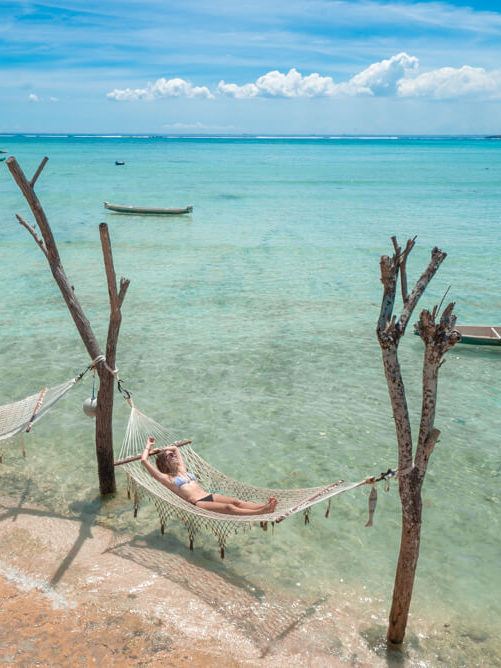
I personally spent $7,958 USD (without SCUBA diving – $6,095) for six months in Southeast Asia, with a month each in Cambodia, Laos, northern Thailand, southern Thailand, Malaysia and Indonesia. With flights and pre-trip expenses, it added up to $11,000. Adjusted for today’s inflation, that would be about $15k.
Some guide books will swear that $30/day or less is sufficient for traveling in Southeast Asia – this is generally not realistic.
So how much will you need to budget to travel in Southeast Asia in 2022/2023? I wanted to give you the most up-to-date budgeting guide, and make calculations even easier with the addition of 1-month or 3-month breakdowns. With my recent trips back to Thailand, the Philippines, and Indonesia, a bunch of online research and the help of a BMTM team member who lives in Southeast Asia, here’s how much you should budget for an extended trip in Southeast Asia:
Pre-trip Expenses:
1. travel insurance.
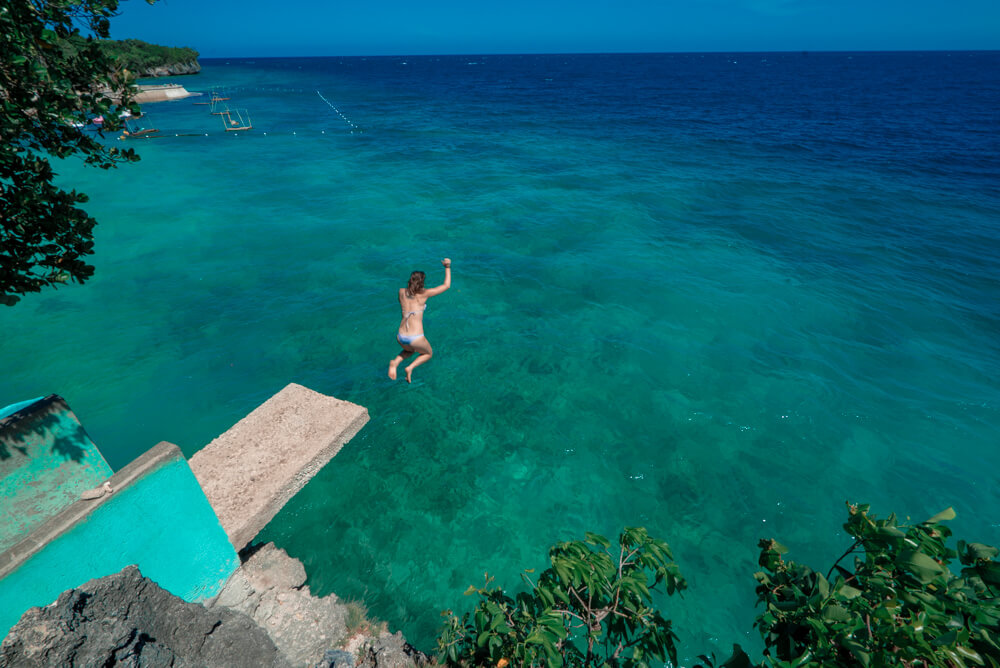
This is one of those costs that’s annoying, but necessary should the worst occur. I went with World Nomads travel insurance which happened to be cheaper than any other company I could find for US citizens.
Saving tip: If you know for sure how much time you’ll be away, buying more months upfront is definitely cheaper than extending periodically.
2. Flights: $1500
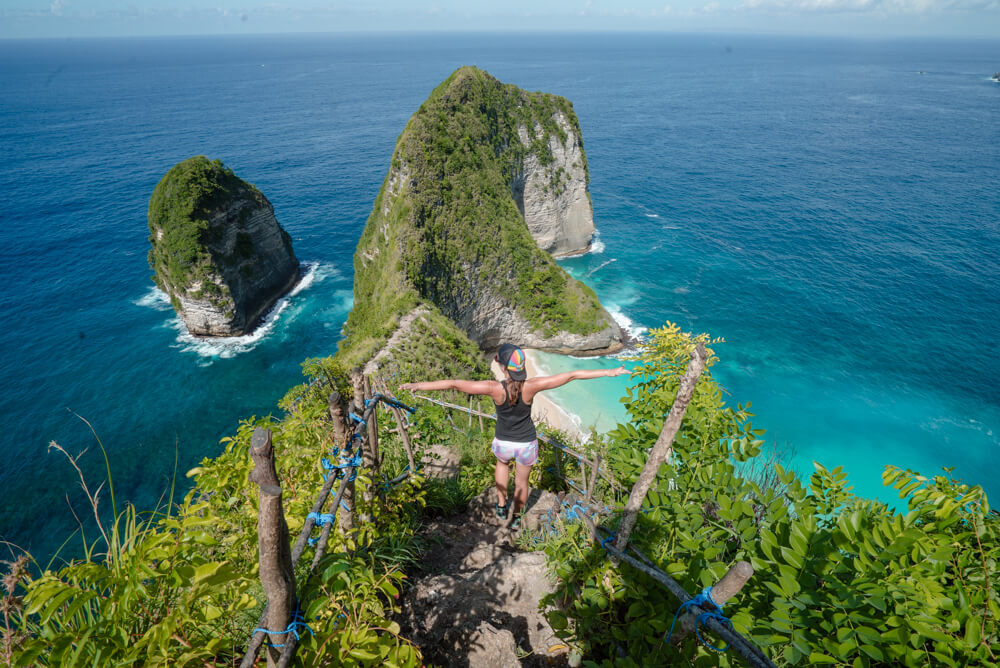
Flights might be totally different depending on where you’re coming from, but I usually end up spending about this much including flights from home and any inter-country flights once in the region. The first time I went, I bought two one-way flights to get from LAX to Southeast Asia and back. In hindsight, this may not have been the cheapest way to travel (I could have saved a couple hundred dollars by booking round-trip), however, I was unsure of my dates and departure city. Sometimes, the penalties and restrictions on moving flights ends up making a RT flight too much of a hassle.
Other ways to save are by making your itinerary logical, so that you can take overland transport most of the time and don’t have to cover huge distances all at once.
Saving tip: To reduce your flight costs, subscribe to flight deals like this one , especially if you are flexible on the traveling dates. Flights are also cheaper during shoulder and rainy seasons. You can also travel hack like I do to save money. Here are my best tips on making your economy long haul flights more comfortable.
3. Immunizations: $350
You’re out of luck if you’re an American when it comes to travel immunizations, because chances are you’ll be covering them out of pocket. I personally elected not to take malaria pills nor get rabies vaccinations because of costs associated and unlikelihood of either becoming a real issue.
Saving tip: In order to get immunized the cheapest way possible, visit the travel specialist at your local county healthcare clinic, or get the immunizations at one of the Bangkok hospitals, which is the name of a premier hospital chain with multiple locations, in Thailand.
4. Travel Gear: $400

My backpack alone cost me over $200, but was worth every penny as nothing ever broke and I’m still using it over 10 years later! I also invested in Pacsafe products to keep everything protected, which I do not regret! Check my guide out for essential travel items.
Saving tip: Limit your luggage to carry-on only , so you can save on check-in luggage. Southeast Asia is generally hot and humid year-round, so you will only need thin and breathable clothes. Things are also incredibly affordable so you can always buy things you need as you go.
I am all about winging it when it comes to a backpacking trip, especially in Southeast Asia. However, if you are on a budget, it’s best to decide on your length of stay in each country to avoid unnecessary visa fees. Here’s a complete breakdown for most nations:
On-trip Expenses:
1. food: $10-$15/day.
Eating local delights and choosing street food when possible are the best ways to keep food costs down. The food tastes better and costs much less when it’s a local dish vs. a western dish. Why order a disappointing burger for $4 when you could have amazing steamed pork buns, papaya salad, coconut soup, pad thai (the list is endless!) in Thailand for less than $1? If you are staying at a place with a kitchen, you can get groceries for cheap from the local market and make your own food. Note that at certain places, like Bali and Kuala Lumpur, eating out can sometimes be cheaper than cooking.
Saving tip: Check with your hostel receptionist for local recommendations. Eat where the locals eat. Don’t fear street food. It’s cooked right in front of you and may even be fresher and less processed than food available at home.
2. Accommodation: $5-$30/day
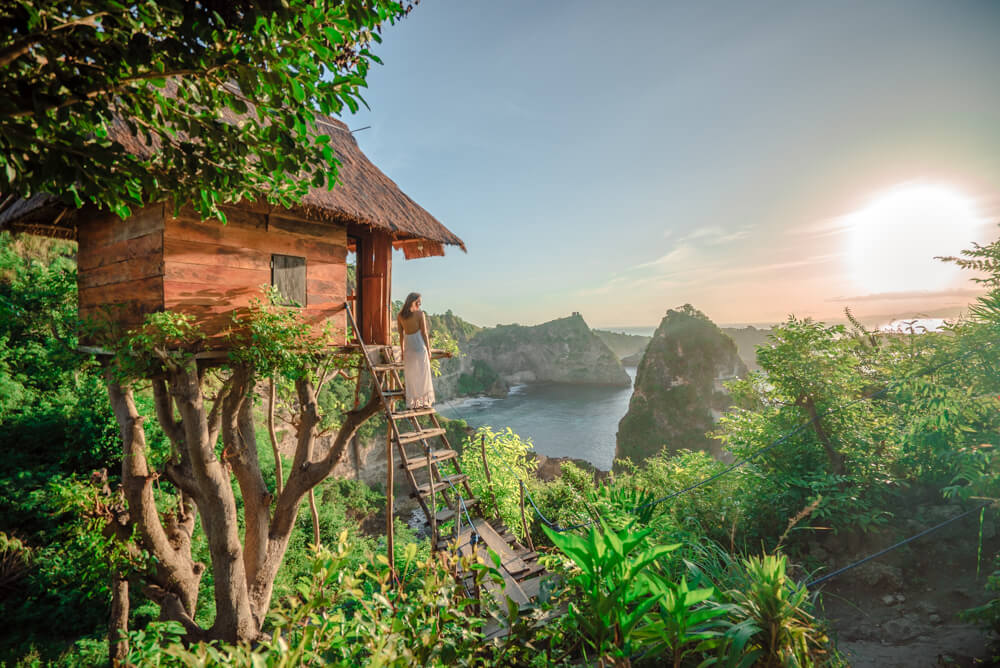
This really varied depending on high/low season and country, and whether or not your’e willing to stay in dorms. Cambodia and Laos were the cheapest while Indonesia and Malaysia tended to be more expensive and provided less value for the money.
Here’s how much you should expect to pay per night, if you were to book a hostel bed a week in advance, and pick one that’s clean and strategically located:
3. Transportation: $2-$10/day
Land transportation is generally very cheap in all of Southeast Asia. Taking an intercity bus typically costs about $10. The cost of renting a bike is around $8-$15/day. On the islands like the Philippines, public boat trips take ages but they are extremely cheap at about $2/ride.
4. Activities:

Diving: If you are a diver, you will be thrilled to find many, many affordable diving spots all over Southeast Asia. Prices go as low as $100 for a 3D2N stay with 3 dive trips, though when I returned to Southeast Asia in 2018, I went on a glorious 11-day liveaboard diving trip in Raja Ampat which now costs over $6000.
Island Hopping: An island hopping trip with 5-6 stops for less than $30? Only in Southeast Asia. Your negotiation skills will decide how much you pay for your island hopping trip, so negotiate away, and if the price offered does not make sense to you, walk away – there will be 5 more agents down the same street. Generally, you should expect to pay about $15-$30 for a full-day (typically 9am-3pm) trip that you share with others. For a private trip, it will be over $100. Read my comparison of El Nido boat trips here.
Group Tours: A walking tour is often the best way to get to know a new city. There are many tip-based, free walking tours available, and some of them are actually really insightful and fun. It’s the best way to meet new friends too. Paid tours typically cost about $8-$15.
Hiking: I love that this activity is mostly free, save for the occasional entrance fee! Even some popular hikes, like Mount Bromo , can be affordable if you do it independently.
Cooking Class: This delicious activity runs about $20-$40 for a class. Consider the skills you will gain and the free food you will make. I’d say it’s pretty worth it, especially if you’ve fallen in love with the local cuisine.
Popular Tourist Sites: Angkor Wat costs a whopping $62 for a 3-day pass, getting to the sky bridge of the Petronas Twin Towers in Malaysia requires $20, and the beautiful Gardens by the Bay in Singapore also requires $20 to enter. Pick and choose what you’d really want to see and factor the entrance fees into your overall budget.
5. Shopping:
Toiletries: If you can, buy from the small local stores instead of the big chain drug stores. They are likely to cost less, and you get to help the locals out. If you want to stick with familiar brands like Pantene and Nivea, the cost is similar to what you’d pay back home, if not slightly cheaper. Local brands cost less.
Clothes: They’re so cheap and awesome! You can get a funky top for $3, cliche but must-have pair of elephant pants for less than $5, and a beautiful silk scarf for less than $8.
Outdoor gear: There are many “counterfeit” hiking gear options available in Vietnam and Indonesia for a fraction of the original cost, but the quality is lacking, too. You can get a legit waterproof jacket for as low as $12, but if you bring it from home, it’ll last longer.
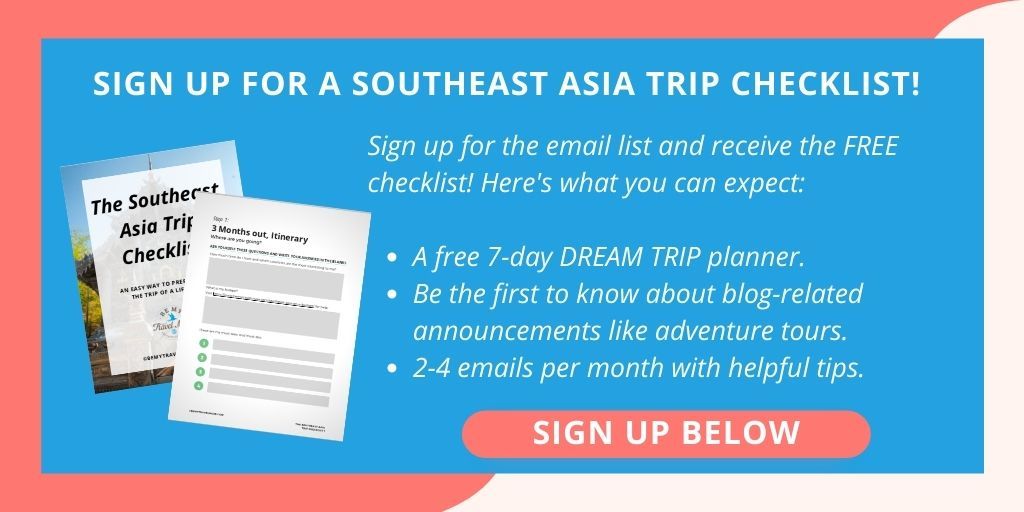
First Name:
Why couldn’t I travel on only $30/day?
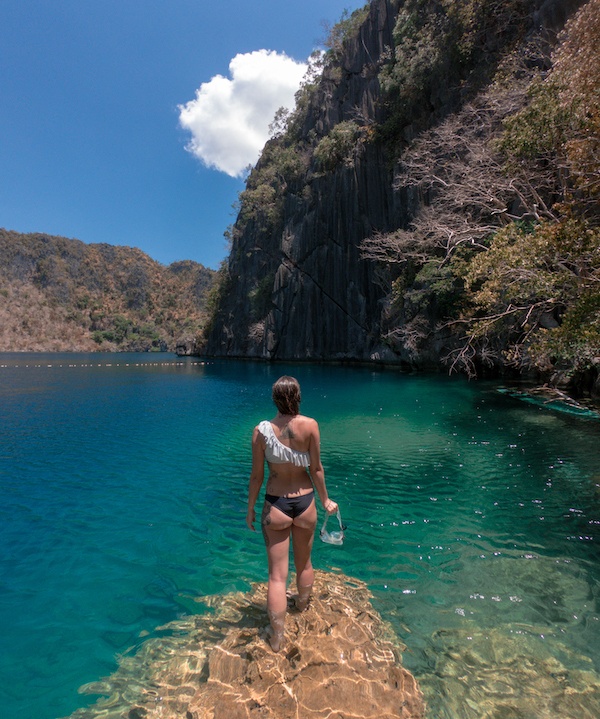
The $30/day benchmark does not take into account gear, insurance, flights, and immunizations. It’s also easy to forget that things like soap, shampoo, toothpaste, sunscreen , batteries, adapters, mosquito repellent, medication, and visas all need to be periodically purchased on the road. The cost seems small but when budgeting only $30 for one day, $4 on a small bottle of shampoo can really add up.
The $30 benchmark is more than realistic, if not a little rich, when staying in one place for an extended period of time in one of the cheaper countries. I was able to spend $3/night on accommodation and around $10/day on food and drink in Otres Beach, Cambodia , for example. I didn’t spend a dime on activities because the beach was free. But what about the days when I moved around? What about the times I had to spend $40 on a visa, $9 on a bus ride, and $3 on a water taxi? My budget was blown before I even bought food or a bed for the night.
What about the days that I wanted to visit Angkor Wat, go SCUBA diving, or jungle trekking? An extremely low budget is only feasible if you hardly move around and never spend anything on activities, but why travel to the other side of the world only to miss out on these things?
If I had not SCUBA dived, climbed Mt. Kinabalu , or gone trekking in Bukit Lawang or Mt. Rinjani , I would have shaved over $3000 off of my trip, easily. I also never spent more than a week in any one place. Had I moved more slowly, I could have saved a lot more.
More saving tips:
- All hope is not lost if you have a smaller budget to work with. To keep costs low, use services like Couchsurfing for free accommodation. Not into it? Stay in dorms. They are a great way to meet people and save some cash. House sitting is also a possibility though less so in Southeast Asia.
- Always travel local instead of by private or tourist coach, even if that means travel days are longer. If you’re rich in time but not in funds, this is the best way to do it.
- Eat local foods and abstain from alcohol. The biggest budget eater is partying, by far. If you never buy drinks, you’ll literally save thousands . Really, thousands!
- Use a debit card that doesn’t charge fees and refunds the ATM fees assessed by other banks. The only one I’m aware of is Charles Schwab.
For a country-specific budget guide on each place mentioned above, I go into more detail in each of these posts:
Malaysian Borneo
Philippines
How much do you usually spend on traveling? Do you have any budget travel tips to share?
Best Places in Southeast Asia for Solo Travelers
The ultimate southeast asia itinerary, what to pack for backpacking in southeast asia.
*Some links in this post are affiliate links for products and services we personally use and love. Any purchase you make through them supports us at no extra cost to you. Thanks so much!
About Kristin Addis
Kristin Addis is the founder and CEO of Be My Travel Muse, a resource for female travelers all around the world since 2012. She's traveled solo to over 65 countries and has brought over 150 women on her all-female adventure tours from Botswana to the Alaskan tundra.
Leave a Reply Cancel reply
Your email address will not be published. Required fields are marked *
Save my name, email, and website in this browser for the next time I comment.
subscribe to our newsletter
This site uses Akismet to reduce spam. Learn how your comment data is processed .
09/04/2013 at 9:18 am
Great resource! Thanks for sharing that with us!
Kristin says
09/04/2013 at 11:58 am
Glad you find it helpful!
Anonymous says
10/11/2017 at 2:03 pm
Thanks! Without the scuba diving, it would come right on budget with $30.45.
09/04/2013 at 9:19 am
I can’t wait for my trip to SE Asia after the World Cup in Brazil. I need to start saving!
Good luck! I’m loving how travel-focused we Gauchos are!
OCDemon says
09/04/2013 at 3:13 pm
I definitely thought this title was going to be more personal, like, the answer was going to be “MY SOUL.” Oh well though. Info is great too!
09/04/2013 at 3:53 pm
Hahahaha! Well that too! More like my heart.
TammyOnTheMove says
09/04/2013 at 9:50 pm
I think you budget is more realistic. If you are traveling in a country and not take part in certain tours, then you might as well not bother (i.e. Angkor Wat). Love Otres beach. So stunning!
Jo (The Blond) says
09/05/2013 at 3:46 am
I think $11,000 for 6 months travel, including everything is not bad at all considering that you did trekking, scuba diving and things like that.
09/05/2013 at 10:44 pm
Yeah and when one really adds in the extras like flights, immunizations, and insurance, that’s a pretty realistic budget.
Joanna says
09/05/2013 at 6:22 pm
I loved how you broke everything down! I get some frustrated looks when I can’t give one price tag for any one of my trips because it really depends on how you travel and what you do!
As much as it’s great to get advice on how to stay on budget, some experiences are priceless and would be a waste to pass while you’re RIGHT THERE.
Rika | Cubicle Throwdown says
09/05/2013 at 6:36 pm
Awesome breakdown!! I love how sometimes it’s just way better to separate the ‘real cost’ from the ‘I have an expensive scuba habit’ cost 🙂
09/05/2013 at 10:45 pm
Hahaha! Exactly. I had to state that hey, a lot of this was due to this habit I have of spending a lot of time under water. I’m a bit of a junkie. I know you can relate!
09/06/2013 at 2:47 am
Awesome 😀 , I always envy reading your blog :'(
I hope some day, I will take my own journey same like you do 😀
thak’s for the “VIRUS” hahahah
09/06/2013 at 11:22 pm
Awesome and you’re welcome 🙂
09/06/2013 at 6:38 am
Great breakdown. I wish I had the discipline to do that. Did you have any issues with the one way tickets and the airlines wanting you to have proof of departure from the destination country?
I have a way around that 😉
Chris Fitz says
05/11/2016 at 12:26 pm
I’m planning on traveling soon, and being only my 2nd time out of the country, don’t want to run into any unnecessary issues 🙂 what is your way around this?
Kayleigh says
09/06/2013 at 3:42 pm
Here I am sitting behind a desk bemoaning every hour of ridiculous corporate america. For the past year, I got away with playing the game my way. Was always on the ball with my work so I took advantage of countless travel opportunities and unpaid vaycay because I could care less about the money so long as I have enough to travel. Well for regulatory reasons I can no longer escape dreaded weeks, nor escape for an hour or 2 during the day for a yoga sesh when there is not work to do. 🙁 talk about killing my soul. Anyway, I can’t tell you how many people I tell about your blog and right you are, people just don’t get it. I guess taking the safe, traditional road (the road too highly traveled IMO) is what people feel comfortable with and so they stick with what they know. So here I am, trying to balance holding a job, saving the dough until I can take off on the trip of a lifetime! So glad I stumbled upon your site-absolutely love it!
09/06/2013 at 11:26 pm
Aww thanks so much for your comment. Hang in there, you’ll be back on the road and it’ll all be worth it.
Michelle | Lights Camera Travel says
09/08/2013 at 5:22 am
Thanks for sharing Kristin! It’s always helpful to see these posts. I generally budget the same, $1000 for ground expenses, and things like flights, visas, expensive activities (i.e scuba diving) on top and that usually works for me!
09/08/2013 at 11:56 am
1k is a great budget for the extra stuff.
Arianwen says
09/08/2013 at 10:36 pm
This is a really useful overview! I’m pretty bad at keeping a close eye on exactly what I’ve spent so when people ask me about my trip to South America, it’s a very rough estimate! Nice one keeping track!
09/09/2013 at 4:18 pm
I had a lot of going back through my bank account withdrawals to do!
Turner says
09/09/2013 at 10:00 pm
Not too bad. I would be about spending $30 a day too, as per Lonely Planet suggestions, that is if all that weed and hookers didnt get in way. Sigh.
09/11/2013 at 12:41 pm
It’s the ping pong shows and lady boys that really kill my budget.
Morgan says
09/10/2013 at 9:54 am
This is amazing! Thanks for putting it together. I’m also an American and just started vaccinations – the rabies and japanese encephalitis will probably be put on the back burner due to prices (It’s outrageous!). Do you think you went the correct route skipping those?
09/10/2013 at 12:31 pm
I couldn’t even find Japanese Encephalitis when I was getting my vaccinations. I understand it’s kind of important if you’re spending a large chunk of time in SE Asia though, as it’s a pretty serious disease. You can definitely find it in Thailand, although I’m not sure how much it would cost. I personally don’t have that immunization and, well, I’m still alive and kicking!
09/10/2013 at 3:05 pm
Great story and thank you for laying out your expenses like that. Helps those of us who are looking into long trips some very valuable info
09/10/2013 at 8:13 pm
Glad you found it helpful!
Jennifer says
09/11/2013 at 1:35 am
I love your breakdown and it’s really realistic. Just did the same and I’ve come to pretty much the same conclusions. It’s easy to be on the cheap in SEA, but not everywhere and all the extras add up really fast!
09/11/2013 at 11:12 am
Thank you! Yes the extras do add up.
Joey Rana says
09/12/2013 at 1:14 pm
please visit the philippines. plenty of places to visit and part of south east asia. many travelers often neglect the philippines and hope you can make an exception.
09/12/2013 at 8:20 pm
I will. Next year!
09/24/2013 at 1:53 am
Brilliant post, thank you so much! My trip is rapidly approaching and this has really helped.
09/25/2013 at 7:55 am
Hello! I came across your blog and found it really inspiring! I am planning a 3 week trip to HK and maybe Thailand in October. I will attempt to blog my journey and looking for blogs to follow as well as increasing my number of followers so feel free to explore and please join my site while you are at it!
09/25/2013 at 1:15 pm
Thanks Vera! HK is awesome
Simon Lee says
10/08/2013 at 12:00 am
Hi Kristin, Dropping by for the first time. I am from Malaysia.
I am surprised that you spent the most money for accommodation in Borneo as there are quite a number of budget accommodation in the area.
Did you checked out some of the islands off the coast of Semporna? Widely known as a scuba diver paradise and i am sure you will like it as diving is what fascinating you:)
Cheers, Simon
10/09/2013 at 8:08 am
Well, it had more to do with the fact that I had been spending closer to $5 in most other countries. Yes, Borneo has budget accommodation, especially in the cities, but it’s not as cheap as other places in Southeast Asia – Malaysia in general is not as cheap. I went diving in Sipadan and it was amazing!
Manfred says
11/27/2013 at 8:44 pm
We just finished 6-7 months around SE Asia as a couple and spent an average of just under $30 each. We started and finished in Bangkok though, so didn’t have the additional cost of flights to/from SE Asia. We also didn’t get any immunizations, as our doctors here didn’t recommend any. We also didn’t need to buy any travel gear, as we both already had suitcases. I think this would be the case with most travelers. We wrote a book about our experiences if anyone is interested. See our blog.
11/27/2013 at 8:51 pm
Oooh Yikes I would DEFINITELY suggest everyone at least get the Hepatitis vaccines and Tetanus. Very important!
12/25/2013 at 4:26 pm
hi, i wanna go to Indonesia, Singapore, and Malaysia. but i am confused how to get a visa to Indonesia, Singapore and Malaysia. can you help me out?
12/25/2013 at 10:41 pm
It really depends on where you’re from! You should check your country’s travel advisory website for more info. If you’re from the US , Canada, or EU, you can get a visa on arrival for all of those countries.
12/26/2013 at 12:19 am
What country are you from. If from US, UK, etc, you don’t need visa for Malaysia or Singapore, and can get visa on arrival for Indonesia. For Indonesia you need to have a flight booked to leave the country before arriving.
12/27/2013 at 5:17 am
That’s helpful info because I actually got a two month visa for Indonesia prior to going there while I was in Kuala Lumpur. I was told I needed proof of an onward flight but they never asked, and I didn’t have one!
01/20/2014 at 8:24 am
Maybe it’s different if you have a visa in advance. Also, sometimes people need onward flights and sometimes they don’t check. But I know people that haven’t be allowed on their flight because they didn’t have onward tickets. I wish they had proper rules, but it’s all a bit hit and miss.
01/20/2014 at 8:32 am
You don’t *really* need anything booked onward. There are ways around that but I know what you’re saying. Thailand and Indonesia are often that way and the Philippines is as well.
01/19/2014 at 11:17 pm
This is awesome as I’m planning my next adventures. Im currently in New Zealand but i just wondered in which currency was your budget for Asia?
01/20/2014 at 8:15 am
Ah I should note that on the post. USD 🙂
01/21/2014 at 9:26 pm
Looking to do a 6 week trip this Summer with a friend starting with a week in Thailand and ending with a week in the Philippines. Unfortunately can’t visit every country you described – did you have any personal favorites or must-sees!? My friend and I are both scuba certified as well – any great scuba spots would be much appreciated! Thanks, love the website!
01/25/2014 at 9:00 am
Sipadan in Borneo is the best diving I’ve done. You must book that kind of far in advance. Komodo in Indonesia is also amazing but the current is strong and you need at least AOW certification. I loved Cambodia and Laos but in 6 weeks I wouldn’t try to rush too much. A lot of people do and they miss a lot. Northern Thailand is great!
03/09/2014 at 5:26 pm
This was a really helpful post. Thank you for all the details. I’m trying to decide where to visit on my way back from Australia to the UK. Cambodia and Vietnam are looking like they might come out top, although I really want to see the Philippines too! I see this trip extending…!
03/09/2014 at 6:13 pm
I just did a budget post on the Philippines and it’s more expensive than I thought it would be. I have one on Vietnam going up today so check that one out! I really loved Vietnam!
03/19/2014 at 8:53 am
I love your helpful breakdown, but I do think that hostels eat up a lot of the travel budget, so I almost always try to couchsurf or stay somewhere as a Workaway volunteer whenever I travel in Asia or Europe. I think hostels are my last resort because I’ve had a couple negative experiences in hostels, but also, when you CouchSurf (which doesnt always mean you sleep on a couch btw!) or stay as a volunteer with a local, first of all, it’s FREE–plus you get free meals as a Workaway volunteer, and your CS host may also invite you to join him/her or their family for a meal or two. And second of all, you are gaining a truly authentic experience and perspective of the lifestyle, and you have a local to help you and offer you excellent advice for your stay! 🙂
03/20/2014 at 7:55 pm
Great suggestions and agreed, especially in more expensive countries. I’ve couch surfed in Europe and in China.
Sidney says
03/23/2014 at 2:36 pm
Thanks this helped alot!
03/23/2014 at 8:15 pm
I’m currently planning my trip for this summer, and just wanted to say this post/site is extremely helpful! I just got all my vaccines last week. Japanese Encephalitis set me back $500 alone. Yikes! I’m now on to gear. Taking your advice w/ a 40L pack. As for travel insurance, I just got a quote online from World Nomad that says it’ll be $386 for 6mo. coverage. Why was yours so much more expensive? Was it the timing? Or maybe $793 is for a full 10 mo?
03/24/2014 at 12:54 am
I got the adventure plan which covers SCUBA diving, etc., and that was for the full ten months as well. I wish I had just bought it all at once upfront because it’s actually cheaper that way. Oh well! You live and learn 🙂
Allen Espy says
03/24/2014 at 6:04 am
I did a similar trip in 2000. 6 months, about eight countries. Semi-backpacking. $12,000
03/28/2014 at 9:08 pm
Did it cost money to get visas’ to these countries? Were visa’s even required if you’re not working?
03/28/2014 at 9:24 pm
Thailand, Singapore, and Malaysia are free. Cambodia ($20), Laos ($35 but depends on where you’re from), and Indonesia are all visa on arrival but they cost money. Vietnam must be procured before you land and it’s expensive. I paid $20 and then $45 for a stamping fee.
04/21/2014 at 11:13 pm
Hey Kristin – thanks for sharing this! I will say that traveling as a couple makes the cost a lot better. Rob and I did six months in SE Asia and with all flights and a lot of scuba, we came out to a bit over $30/day per person. We always stayed in private rooms with private bathrooms, although we did do a fair amount of haggling.
When you add in shots and flights to Asia, the costs do go up. But that’s what frequent flier miles and pre trip health insurance are for :o)
05/05/2014 at 1:17 am
Splitting taxis is a huge help. The months that I did most of my traveling with friends were definitely cheaper.
Christopher K says
05/02/2014 at 12:38 pm
Hey Kristin!
I’m getting ready for my trip to SEAsia in mid-June, arriving in Bangkok on a one-way ticket as well, and I just wanted to ask you about your experience flying with such a ticket.
Apparently one of the requirements for Thailand’s free 30-day tourist visa is to have proof of “an onward or return airline ticket within 30-days of arriving.” I’m planning on flying to Bangkok and staying there until my 30 days expire, at which point I’ll heading to Cambodia –> Vietnam –> Laos via LAND transport however (i’m planning on buying my bus and train tickets when I get there).
My question is: Did you happen to have another airline ticket (out of thailand within 30 days) purchased and ready to show to the immigration officials and/or airline when you arrived? How’d it go for you? Do you think the airline could bar me from getting on the plane if I show up to the airport in new york with nothing but the one-way ticket to bangkok and my passport?? :S
It’s just one of my scruples at this moment!
Hope that all made sense! Thanks so much!
05/05/2014 at 12:55 am
Sometimes the agent at the check in counter will ask for onward travel proof and if you don’t have it they won’t let you check in. I’d suggest editing an old e-ticket from a different airline with a future travel date and printing that to bring with you.
05/21/2014 at 3:03 pm
Thailand also has (or had 5 years ago) cheap rooms. I got a single or double bed room for 3-4€ outside of bangkok on different occasions. I plan for round trip with Thailand, Vietnam and Laos now and it is great to hear that I won’t be completely broke at the end of it. 🙂 Also one hint: An Indonesian friend showed me some Indonesian booking sites and they seem a lot cheaper than the American/European ones. Try tiket.com for instance.
Barbora says
05/28/2014 at 9:28 pm
Your website is freaking awesome! No nonsens lifestyle generic scribbling, but actual useful practical advice. Big thank you!
05/31/2014 at 3:09 am
Wow. THANK YOU!
matthew says
06/01/2014 at 2:05 am
I just got home from a 18 month trip all over SE Asia, Singapore 3x, Malaysia 6x, Indonesia 1x, Thailand 2x, Philippines 1x, and did the whole 18 months on $8200 USD including my separate 1 way flights back and forth from the US. It helps to make friends on the way, lots of free food and places to sleep.
06/02/2014 at 4:13 am
Couchsurfing and staying with friends definitely helps a lot. I tend to buy meals or pay my share or bring a gift, though, which does increase my costs. To me, it seems like the right thing to do.
06/22/2014 at 6:00 pm
Hey, I love your post and have found it particularly useful whilst planning my own trip, I’ve got a question about currency.. How did you handle money over there? Did you have lots of different currency on you at all times or did you literally just withdraw money in each country when you needed it? Also, how did you cross from each country to the next and have you got rough prices for them? Thank you 🙂
06/23/2014 at 2:45 am
I just withdrew money when I needed it. I crossed overland for the most part and typically you want to pay visa fees in US Dollars so always have some of those on you.
06/23/2014 at 11:08 am
Travelling is enjoying the different food: should be careful as paying too low …you might be fed with rat meat instead of pork… especially in poor country, meat is still expensive. If the meal is a buck, I’m not sure it’s pork or rat….? A 3 to 4 dollar meal should be very satisfying… if your budget could not afford that then I was wondering what would you enjoy in your travel? My idea is to save a bit more before your trip and really enjoy the time there …. if you find yourself penny-pinching then wait for another season and build those extra bucks…The worst thing is to see something that your friends enjoying while you couldn’t afford.
Wd you sleep in a place where rats came out at night to say hi? It is much more enjoyable to stay at a 5.00 or 10.00 room and enjoy the night rather than sleepless because of those vermins….
06/23/2014 at 5:43 pm
That’s absolutely ridiculous. You can see the meat before you eat it, usually raw, at the street stall. I think we all know that beef ribs look nothing like rat meat, and it’s possible to just go vegetarian as well. I also eat food locals eat and take pride in making. It’s insulting to them to claim they’re cooking rat’s meat.
$1 streetside soup in Vietnam (with a giant pork shank in it, I might add) is delicious.
Lastly, most rooms I stayed in that year were around $5-$10 per night. I now often spend a bit more but I wanted to see if it could be done for $30/day back then.
Kaylin says
07/24/2014 at 5:28 pm
After doing some number crunching, it looks like you spent about $34/day not including the scuba (which wouldn’t necessarily be something alot of people would do on such a trip) or the flights (which most people don’t include in their daily budget). So really it’s not so far off the $30/day recommendation! Either way, this is a great article showing real expenses on your trip. I have been to Thailand and Cambodia before for 2 weeks, but I want to go back and do a much longer trip to more countries in the next couple years, so I will definitely keep this budget in mind 🙂 You are so right that not drinking saves SOOOOO much money. I feel like half my budget in Cambodia was for those $5 buckets LOL.
07/29/2014 at 5:27 am
That’s true, but I think a lot of people have one or two expensive activities they just really want to try, so it’s worth budgeting that in. Cutting out drinking would actually make it much cheaper than $30/day considering where I was staying and the types of transport I was taking.
07/30/2014 at 4:04 am
Hey Kristin,
Great blog!! I was wondering if you had any advice on obtaining visas on your travels?? I have a one way ticket to thailand this upcoming November, and I was honestly just going to wing it as far as determining my length of stay in certain countries/areas. Any help would be appreciated!!
07/30/2014 at 7:36 am
I did the same. Most countries, except for Vietnam, you can just get a visa on arrival (depending on which country you’re from, of course), and it can be pretty easy to extend.
Ian Limbonis says
08/10/2014 at 11:12 am
Im on my 111th day today, and so far spent <1500$. Tracking all my expemses daily to meet the least possible expensiture, though i must say coffee, cigarette, and seldom beers can help lower this doen further.
08/11/2014 at 1:05 am
Wow you’ve done a great job then!
08/11/2014 at 1:59 am
Not as much as how you organized your expenses ;-). Im glad how quite basic i’m becoming
Michael says
08/25/2014 at 11:23 pm
Wow thats cheap.. good for you!
09/02/2014 at 10:54 pm
I tried! Could do it even cheaper and certainly more expensively as well.
Paul Durano says
08/27/2014 at 9:11 pm
If your in Cebu, Philippines by mid Jan – May 2015, I help you find a place for $20 per day. Living with local family.
Samantha says
08/29/2014 at 4:45 pm
Hey Kristin, HUGE fan of your blog and the advice you give. You have really helped me out as I plan for my backpacking trip to SEA, Australia, and New Zealand (leaving in 65 days!!–but who’s counting?!). Quick question: did you get a credit card for this trip? I opened up a Charles Schwab account for the ATM card, but I wanted to get a credit card with 0 foreign transaction fees as well, just as a precaution. Do you have any banker recommendations? :). Thanks again!
09/02/2014 at 10:43 pm
Glad to have your readership! I use a Capital One Venture card and would also suggest having some kind of back up as well. Airline mileage cards also often are transaction-fee-free.
09/18/2014 at 1:01 pm
Hi Kristin,
For your southeast asia travels you got immunizations for Hepatitis A and Tetnus?
Did you get any for: Fly or Typhoid or Hepatitis B or Japanese Encephalitis or Rabies?
Also, you mentioned you chose not to take medication for Malaria? Any concern why?
My mother wants me to inoculated for every conceivable transmittable/contagious disease but to save both money and side effects I want focus on the truly most necessary vaccinations.
Thank you! Haley
09/18/2014 at 10:21 pm
I got Tetanus and Hep A, already had B, as well as Typhoid. Did not get rabies and Japanese Encephalitis wasn’t even available at my clinic. I have never taken anti-malaria medication. I’m in that part of the world for way too long for that.
Stephanie Be says
10/03/2014 at 10:58 pm
I just wrote an article on tips for Thailand, and one of my tips was that it is NOT as cheap as people make it out to be. I couldn’t agree more with the misconception that it’s “easy” to live on a shoe string budget in developing countries. There are many costs, and chances are that most travelers WANT to experience things like an elephant reservation park or Angkor Wat.
Nice to hear it from you too!
10/04/2014 at 6:14 am
Southern Thailand is definitely more expensive than the middle and north as well!
Franca says
10/04/2014 at 1:33 am
I forgot how cheap SEA can be and after being traveling around Europe for more than 1 year, it seems like a dream being able to spend so little and still enjoying yourself so much! We spent a lot less than you have, but mainly because we didn’t do the activities you did and we took some extra vaccinations (rabies for instance because we volunteered in dog shelters) and malaria pills in some areas. Sometimes I miss these countries, maybe we should go back and explore the countries we haven’t been yet. There is too much of the world I want to see, my list gets longer instead of shorter 🙂
10/04/2014 at 6:13 am
Same here. I am over in Europe now, thankful that I now have a bigger budget but definitely do still love SEA, both for how cheap it can be and how amazing it can be.
Victoria says
10/04/2014 at 5:12 am
Definitely agreed $30 isn’t realistic if you want to see and do things, although I think as an American you have it way worse! In the UK immunisations are free, I go to TK Maxx for my travel gear so we’re looking at maybe £30-40 on a bag and then flights cost me about £400-£500 RETURN if I don’t care what day I travel on. When I did Phuket for a month it cost $400 US for my room ($13 per day) and then I spent roughly $10-$20 on food and I literally wasn’t doing ANYTHING except working on my computer and going to the beach. So really $30 is only do-able if you decide to do the ‘living somewhere’ option and do nothing.
10/04/2014 at 6:10 am
Definitely true. Moving around is expensive due to traveling costs, but living in one place or moving very slowly makes things much more affordable.
10/08/2014 at 8:00 pm
Hey Kristin, We shall be traveling Indonesia in June and we wondered if you had any tips on where to go? we figured we’d stop off in Bali (its the cheapest island to fly to) plus my friend works there as an instructor and I’m going to take my DM course there. Other than that we’ve seen that Sumatra and Flores look good, but we don’t really know anything about them. Also, how expensive is it to take a tour with the orang-utans? i’ve looked online and it said 20,000Rp… that seems pretty cheap to me, does that sound about right? Finally, how expensive is it to island hop? we traveled south thailand via boats and busses and it work out pretty cheap but will it be the same in Indo?
Thanks for your advice and your amazing travel blog! Keep up the awesome work! Emily 🙂
10/09/2014 at 11:41 am
Definitely I wrote a lot about it in the Indonesia https://www.bemytravelmuse.com/category/destinations/southeast-asia/indonesia/
Here’s the info on Orangutans https://www.bemytravelmuse.com/bukit-lawang-trekking/
Here’s info on island hopping local style https://www.bemytravelmuse.com/how-to-get-from-flores-to-lombok/
whitney says
10/16/2014 at 2:28 am
what backpack did you buy for $200 and what do you do for income (or has the initial funds from liquidating your assets not run out yet)? also do you still maintain and contribute to a retirement plan? lastly, i assume travel insurance makes up for not having employer sponsored health benefits? i too am a banker and im wondering how i can make this a reality for myself.
10/16/2014 at 8:04 am
Yes I contribute to a retirement account, which was pretty heavily invested in with my old job. I make money off of this blog and freelance writing. Check out my series on how to start a travel blog if that interests you! https://www.bemytravelmuse.com/category/travel-prep/how-to-start-a-travel-blog/
11/05/2014 at 4:04 pm
i wanna backpack for 6- 8 months in Asia , and is like 10.000 dollar enough ??
11/06/2014 at 4:07 am
Well you can see how I laid out my expenses here, so I’d say that no, it is not, if you add in things like flights, gear, and insurance. It is if you don’t party much and don’t do expensive activities and stay in dorms, eat street food, and take local transport. It boils down to your way of traveling.
TeachingTravel says
11/24/2014 at 8:25 am
You really missed out by not spending as much time in Vietnam! Vietnam is extremely cheap. However I didn’t spend as much time in Cambodia, this time i’ll make sure to check out the beaches! Last time I just hit the temples of Cambodia and skipped right through!
Also traveling with someone else would really bring these costs down!
11/24/2014 at 8:53 am
I ended up returning to Southeast Asia and spending a month in Vietnam after writing this post. Traveling with someone else would definitely cut the costs down but I’m a solo traveler and that’s the focus of this blog 🙂
Claire says
08/28/2016 at 1:08 am
I’m so curious, why and what would all the reasons traveling with a partner cut the costs down??
09/07/2016 at 3:24 pm
You split cabs and private rooms
Muzammil says
12/17/2014 at 2:11 pm
Hey! Amazing article and love your website!
Can you please let me know how many flights did you have to take in your 10 months Oceania & SE Asia trip? And what were those flights?
Thanks! Muzammil
12/17/2014 at 3:19 pm
I probably took around 6-8. If you just stayed in Southeast Asia you can do almost all of it overland. You can get very cheap last minute ones on local airlines and on Air Asia. I really like Bangkok Airways in Thailand, and Tiger is also good.
12/17/2014 at 3:26 pm
Thanks for the response! When you say overland, are you referring to taking ferries/boats between countries like Philippines, Indonesia, Singapore, etc.?
12/18/2014 at 2:14 am
You could do that but it takes a VERY long time and in that case I’d just fly.
12/29/2014 at 9:18 pm
Wow , I really want to do this how do you find all the places to sleep and not end up paying for hotels
12/31/2014 at 12:50 pm
Stay in hostels/guesthouses and especially dorms to save money.
Lesh @ NOMADasaurus says
01/03/2015 at 9:48 pm
What an awesome breakdown Kristin. I know what you mean about $30 a day. Sometimes it happens but most of the time not. There are so many awesome activities to do all over South East Asia and we were not missing out on them. Love your tips for cheap travel. We love eating locally and traveling locally too. It is not just cheap but such a great experience. We have met some wonderful people on some journeys. We have been taking a budget daily so we can keep track of our spendings. The fact it is there on paper has really helped us budget. Over spend one day, lay low the next day. It is crazy how much alcohol can add up too and how many stories I have heard of people spending all their money partying and have not enough to see the rest of the country. The country always comes first for us. Thank you.
01/04/2015 at 2:04 pm
Thanks Lesh. I definitely agree it’s better to buy experiences than beers, but if you can do both, even better! 😉
01/04/2015 at 6:29 pm
Hey Kristin, great breakdown – I’ve managed on $30 in Asia, but on the basis it was covering food and accommodation only and no sightseeing. Also, these kind of simple ‘figures’ just don’t work in places like Singapore, Tokyo, etc. It annoys me when I see guides/books/etc. encouraging this as an ‘option’ because there must be so few people who manage on something like $30 a day and still get to see and do everything they wanted! Bring more – see and do more.
01/05/2015 at 4:52 am
True Singapore is a lot more costly and I actually haven’t been there yet. If any guide books are suggesting $30/day is doable in Tokyo I’d toss that right out the window!
01/12/2015 at 6:26 am
How am I only just finding this blog? Good stuff
01/13/2015 at 1:23 am
Aw thank you.
01/25/2015 at 10:42 pm
Never tried this myself, but I would imagine $30 (3000 yen) in Tokyo is possible. Well, I am in Tokyo now working (I am from Canada) but will travel abroad in November.
3000 yen breakdown possibility (if not relied on heavy tourist travel-style) – of course, it all depends on what you want to do that day; the list of what to do is endless:
1. Yamanote Line (most of the touristy places are on this line): 730 (day pass; it is even less that if you want to stay in places that require less than 730 yen) 2. Food ~1000 a day IF cheap, healthy, and convenient food places (i.e. Sukiya) –> much less required if rice balls and other smaller foods bought at convenience stores or McDonalds (100 yen options) 3. Accommodation – Couchsurfing! (0 yen) 4. Others (museum fee, drinking, whatever you choose)
Total: 1730yen plus additional
I do not know how much travel insurance is needed. Nor visa. However, when sites that say $30/day is possible, I do not believe that cost includes visa, insurance, etc. I think it means just travel expenses (food, accomodation, and such).
And for visa, I have never bought it before. But according to my Japanese passport Visa requirement for travel in Europe, I can travel in Europe for 3 (or 6) months at maximum without visa, so I am sure Visa is not required if less than 3 (or 6) months?
01/27/2015 at 7:28 am
Thanks for that! I had no idea it could be so cheap since Japan is always thought of as so expensive. You can get a VOA for fewer than 3 months in Europe, yes. You can only stay for 3 out of every 6 months.
02/06/2015 at 1:55 am
I went for a month in December/January of last year and found it expensive, probably because I wasn’t able to find as many dorms and it was over the holidays which is an understandably expensive time.
sashlah says
02/22/2015 at 8:06 am
We are spending around 15/20$ a day in two in North Thailand. We rented a huge house with 3 bedrooms for little more than 150/month. We always cook at home buying stuff at the market.
02/23/2015 at 1:40 am
Northern Thailand is really nice and cheap. Cooking at home is cheaper than street food? That’s my favorite part of Thailand!
02/23/2015 at 9:11 pm
Thanks for the great advice! One thing to add, when I was traveling for 6 months through Western Europe, I got charged about $5 per ATM withdrawal– I have Chase. BUT, I called and asked them, and kind of sweet talked them, into refunding me the charges! It wasn’t a lot since I went to the ATM as few times as possible but every dollar counts!
02/23/2015 at 10:16 pm
I’d suggest Charles Schwab which refunds all ATM fees and doesn’t charge foreign transaction fees. I really think they’re the best option. Great customer service, too. Wow I sound like an ad but honestly I love them.
01/14/2016 at 6:05 am
do you by any chance know how this works for Europeans? Can, say a Belgian guy, get an Charles Schab account? 🙂 Have you met Europeans troughout your trip who managed to solve or eliminate these fees?
01/16/2016 at 1:01 pm
I believe Schwab is only in the US, these are some good suggestions: http://www.nomadicmatt.com/travel-blogs/avoid-paying-bank-fees-traveling/
03/07/2015 at 6:08 pm
First off I want to say I’m a huge fan of your blog! Your posts are always great and so interesting! I’m very grateful for this post in particular. I’m considering homeschooling my son for a year and spending the time traveling SE Asia. So I have a few questions for you: what is the point of travelers insurance? Is it health insurance? We have health insurance and I cover my electronics through my homeowners insurance (it’s very cheap btw) so I don’t think I need travelers insurance, right? Did any areas seems unsafe at all? My son is 13 so he’s not a baby but I still don’t want to put him directly in danger of course. When you reference “dorms” is that the same thing as hostels? What is high season in SE Asia? What language is most widely spoke? I was thinking about spending a few weeks in one spot to take courses on a foreign language. Anything else you think I should know? Thanks and keep up the great work!
03/11/2015 at 7:03 am
Hey Kristin! Depends on which country you’re in regarding which language is spoken the most widely. In Thailand that would be Thai, Malay in Malaysia, etc. However, most places you’ll find you’ll be fine communicating as locals speak at least some English and much communication isn’t verbal anyways, as I’ve learned through the years. I also don’t think a few weeks is enough time to learn much of a language, though I wouldn’t want to discourage you!
As for insurance, you can check if your health insurance covers you abroad. Mine didn’t. I have travel insurance so that I’m always covered and if I need to be flown home for medical care, I’m still covered. Hope that helps.
03/11/2015 at 9:35 am
Yes that helps a lot! Thank you!
05/07/2015 at 7:40 am
I find your post realistic! And refreshing knowing that I’m not able to always stick to $30/day either. Currently traveling in Northern Thailand and doing my best with level of comfort, while staying cheap. Probably the biggest money saver as you mention is indeed when I go a week or so without drinking. 🙂 Thanks for the honest post and keeping up with your site. Inspiring!
05/07/2015 at 7:32 pm
Thanks Erin! Yep the biggest budget killer is alcohol, even though each drink individually is cheap, it adds up!
05/29/2015 at 5:41 am
Awesome! I got to understand on how much should I be needing and what do I really want before exploring outside my country in SEA!
Very informative post! 😀
Liem @ Holiday Bays says
06/20/2015 at 10:28 pm
Hey Kristin, when will you visit Vietnam? We can go for coffee and eat some local food. I live in the Mekong Delta area. Love your blog by the way! 🙂
06/22/2015 at 4:10 am
I spent one month there in 2014 but would love to return. I love the food and the coffee so much!
07/18/2015 at 3:40 pm
Good write-up
The Wife & I traveled SE Asia for 3 months last year and are hooked! On seeing more. We did things a different way financially so are kinda setup now but it meant foregoing this earlier on. But also means work is almost optional now. We spent about $8k across 7 Countries and that’s staying in Hotels ranging from $50-$100 per night. Everything is cheap there and most things are just so much better. They live a good life and we now see that Western world has it all wrong
07/19/2015 at 2:16 am
Can definitely see where you’re coming from with that. Wouldn’t say they all live a good life though. It’s easy for us to do so because we were born with privilege, a passport that provides mobility, and the ability to earn in a strong currency.
Jasmine says
08/09/2015 at 6:49 am
My main question in all of this was how did you go about traveling to these countries once you started in Thailand? Are there cheap (significantly cheap) flights available from one to the next or are you able to cross the border in a local bus? *I’m trying to convince my friends of a southeast Asia tour and the only way I can persuade them is if this factor is relatively inexpensive lol.*
08/10/2015 at 5:01 am
Hi Jasmine, I generally crossed overland though I flew to Malaysian Borneo and did a few flights in Indonesia as well. For the most part busses and trains are the method of getting around, and they’re cheap! So are Air Asia flights so I’d suggest signing up for their newsletter and taking advantage of sales. I scored a flight for $18 with them previously.
Charmaine says
09/30/2015 at 12:52 pm
Thanks for all your tips! I’m looking to do some backpacking soon and one thing I’m concern about are bank fees! You mentioned Charles Schwab doesn’t have any fees, can you elaborate more on this? Were you always banking with them or only as a travel account? Is it only available to US citizens (I’m from Canada).
10/12/2015 at 6:38 am
Hi Charmaine, I don’t know if it’s available in Canada but I don’t think so. This post is a pretty good resource: http://www.nomadicmatt.com/travel-blogs/avoid-paying-bank-fees-traveling/
Izy Berry says
11/26/2015 at 2:30 pm
Is not that expensive !! Incredible is very economic
KeepCalmAndWander says
12/27/2015 at 7:44 am
Going back to Cambodia soon and I hope the country is still cheap! 🙂
12/27/2015 at 1:10 pm
It’s still cheap.
Christian Vielma says
12/29/2015 at 10:54 am
Nice post! My wife and I traveled this year around Asia, including SEA. We also find the $30 limit not very realistic unless you stay for long time and live more like a local (preparing your own food instead of restaurant)
12/31/2015 at 4:18 am
I feel like eating street food is superior to cooking your own when traveling in Asia. It’s fresh, cheap, and lots of it is healthy.
Darren Bush says
01/11/2016 at 11:06 pm
Hey Kristine, I just want to thank you. As your blog is super helpful for me. I will keep all your points in my mind as i am thinking of visiting few countries in southeast asia.
Oliver Mortimer says
01/13/2016 at 6:07 am
Great article, Myself and my girlfriend are travelling on the 10th of February for 167 days. We will be going to Thailand Laos Malaysia Indonesia and Cambodia. We will be taking with us just over 9000 euro and have our flights booked travel insurance bought and vaccinations done.
I’m wondering if you think this will be enough money? We would like to see and do as much as we can and will be mostly eating street food but will be staying in our own rooms and not in dorms.
01/13/2016 at 8:41 am
If you take local transport and don’t party too much it could work. You might have to stay in dorms sometimes but the main thing that eats a budget quickly is partying for sure.
01/14/2016 at 3:25 am
Thanks for the reply. We’re not going over to party, so hopefully we’ll be ok with the budget we have….
robbie says
01/20/2016 at 4:03 pm
is it best to book hostels and such before or just go on the go
01/22/2016 at 3:27 pm
I generally do it on the go unless it’s a holiday in which case they can book out for months ahead of time.
Natasja Trujillo says
01/25/2016 at 6:54 pm
Love your blog. What would you say this budget would be for 2 people?
01/28/2016 at 10:49 am
That was just for me. For two double the food costs and add for busses and flights too. I stayed in dorms as well so I paid a single amount but for a private room or a dorm for two you’ll pay double. It’s not entirely double the cost but I’d budget as much for cushion.
yuyazz says
02/03/2016 at 8:03 am
Hello i’m sorry but i really need to write on maximum english blogs because after 6 months of travel in South East Asia, it is my duty to prevent the maximum person from countries such england or australia Everywhere we went, thailand, Cambodia, Vietnam, Philippines, Burma, Malaysia, and Laos, we encountered the same type of travelers, loud, arrogant, completely disrespectful of other travelers and local poeple or places..A on several occasions we had to change guesthouse to find a more quiet place, especially away from you english people. You have a tendency to shout rather than speak, to make noise, in couple or group, always acting as if you were alone in earth..Even if you know that the owner of the guest house sleeps just next door, even if his childrens have to sleep to go at school the next morning, it will not matter, you continue until late at night yelling like pigs, in total disrespect of your neighbors .I therefore ask you this: learn to respect your neighbors, cease to believe you higher because the whole world must understand you and speak your language when you do not speak any other language except yours..the local bad feel towards overseas is due in large part to your behavior..Vang Vieng but the Thai islands are the best examples of your behavior incredibly bad.English women love to put almost naked, where the local dress head to toe in all sacred places or elsewhere, you English women you absolutely not respect the modesty of local people, in bikini everywhere..we thing that you really behave badly, the whole world hates you for that, but you don’t care and continue..if ever someone notice it to you, you laugh..You, English, you must to know it, please, SHUT UP, and respect local cultures and your neighbors..your culture based on easy friendship, nudity in public places, and “shouting” must stop!!!.Please be respectful and forget your huge egos!!! … you are the shame of Western europe to abroad …you have to know and to behave in consequence please..if some of you think that i’m exagerating, just look and listen, everywhere in South asia, and certainly everywhere in the world..you are in holidays, ok..but maybe your neighbors or the local people around you are NOT in holidays!!! -so 1 : be quiet -2 : stop wearing bikinis and show your muscles to the whole world.. if people comme here to read these comments, be adise that you are not really appreciated in the world…especially because of young travellers who just care about themselves, and just think about making party… I had no bad idea about english or autralian before, not at all..now after six month travelling, i just hate you, and can’t stand anymore your fucking behaviour..
02/05/2016 at 6:41 am
I wasn’t going to approve because it’s racist this but then again, there are some nuggets of wisdom in here. People who travel elsewhere only to behave badly and disrespect the locals but partying like crazy are the scourge of Southeast Asia and a big reason why I tried to get away from the Thai islands and find other places that weren’t ruined yet.
Also, I’m not English. Not Australian either. Your problem is with the bad eggs, not the entire race of people. Calm down.
Brennan says
02/07/2016 at 7:04 pm
Hey Kristin, this is a great site and very helpful…kudos to ya for setting it up and providing all of the valuable information! I have been pondering leaving my job for some time now to travel Southeast Asia for a year. I have been fortunate that I can travel twice a year while still having my job, and I have been to a few countries so far (Thailand, Vietnam, Philippines) but I really want to spend more time there than just a few weeks per year. What are your thoughts on being there for a year? Do you think it’s too long? Also, after your 8 month trip and you returned to the States what was your takeaway from it and are you more motivated to travel now or less? What would say was the best part of the trip?
02/10/2016 at 12:39 pm
Altogether I’ve spent 3 years of my life in Asia and I STILL feel like I haven’t seen it all so there’s no way that a year is too long. I loved the interactions with locals when they happened. Have fun!
03/29/2016 at 2:36 am
This blog is friggin amazing! Thanks for all the great advice. I’ve been saving for the last two years and I’m about to embark on an across the globe backpack journey, living on 20 dollars a day.
04/04/2016 at 4:43 am
Thanks a lot for sharing!! I’m planning a trip to Southeast Asia and this is the first article that actually helped me to calculate expenses. Thank you for all the helpful information
A Pin on the Map says
05/23/2016 at 10:36 am
Thanks so much for the invaluable info! Thinking of heading to Vietnam and Cambodia next summer and this post will be perfect to re-visit before I book my trip. Thanks for sharing!!
Julie Rog. says
05/24/2016 at 4:08 am
Thanks for all the great advice! I want to travel now ^^
NickPomata says
05/26/2016 at 4:40 am
i think 11.000$ is too expensive i also paln a 6 months travel, in southeast asia but probably 4000/5000 will be my budget
07/29/2016 at 2:47 am
Hi NickPomata, are you still traveling? And how about yourt target 4000/5000 per 6 months? Thank you!
Steeve says
07/08/2016 at 6:33 am
I am always amazed on how much expenses keep piling up when I am on vacation… Even when I don’t do anything fancy. I now try to do some volunteering work. I receive accommodation and meals and in return I do some work. It is the best way to travel with minimum expenses and to get to know some local people and the local culture. I did it last year in a yoga ashram in India called Arhanta Yoga. It was the best experience ever. I am now looking for a place in Cambodia, if any body has any suggestions… I would love to know!
Emilia @ mythicalasia.com says
07/13/2016 at 10:29 pm
Southeast Asia is a wonderful destination for the families with kids. Also for many travelers, this region is their first introduction to Asia.
Maddie says
07/23/2016 at 12:03 pm
Took my first trip to Southeast Asia summer of 2015 and spent 10 days in Thailand going through Ayutthaya, Lopburi, and then finally Bangkok. Even spent my 18th birthday in Bangkok and stayed on Khaosan Road! Best experience of my life, planning another trip summer 2017 with my dad that takes us to Singapore, Indonesia, Malaysia, Myanmar, and finally Thailand. We both want to hopefully move somewhere in SE Asia in the next few years and this breakdown of costs and your experience helps with the planning process!
07/25/2016 at 4:18 am
That’s wonderful! So glad that you had such a great time 🙂
Naciholidays says
09/12/2016 at 2:57 am
Vietnam is also a good suggestion, I visited Ha Long Bay is very beautiful there and Nha Trang, Sai Gon … Maybe you’ll like it
James Crosby says
08/22/2016 at 11:32 am
If you really put young urban mind to it $30 a day overall is very realistic. I did that ciircuit as part of a larger trip and it can be done on around $18 a day. Couchsurf, hitchhike, and that’s your two biggest costs wiped out. As far as food, you can easily eat breakfast for $1 and evening meal for $3. Use a steripen so you can drink tap water, never drink alcohol. Also don’t take tuktuks unless you really need to. Wake up early and walk everywhere. Some days I would walk in excess of 20km to explore places. Keeps you fit and it’d free.
08/22/2016 at 4:56 pm
I’d say the biggest part of that advice that helps with costs is not drinking (and for the sake of argument, not doing activities that cost money). Eating local and sleeping cheap are great ways to save but I also think most people can’t resist indulging when they travel, in all of the fun stuff, so I’d rather spend a bit more to have more fun.
10/13/2016 at 2:06 am
My Partner and I are planning a 6 month trip to South East Asia with our 16 month old son.
We want to do it as cheap as possible and we’re thinking of buying a van and decking it out with a mattress etc.
Do you think this would be safe and efficient way to travel South East Asia? We are planning on going to Singapore, Thailand, Laos, Vietnam & Cambodia.
10/13/2016 at 11:07 am
I don’t really think that’s necessary. Busses and private rooms at hostels are so cheap, and I never really saw anyone self-driving there except for on a motorbike.
10/21/2016 at 1:44 pm
So true about the $30 a day and just totally going over with even just a visa fee or transport! Transport prices are what surprised us! I did not get any immunizations though and I flew from Australia so my flights were much less as well. Love your honest breakdown. Very helpful for first-timers to SEA 🙂
Äventyrsresenär says
12/11/2016 at 6:11 am
Hi there Kristin,
Just stumbled on your blog and as a former expat in Asia I’m glad to see you covered some useful tips and advice when traveling around this region. I haven’t read all of your posts for this particular adventure… you mentioned some stuff you did in the south of thailand and indonesia and malaysia, was it scuba diving? Would love to know more, did you write a post about these travel experiences as well?
Have a great weekend, Sam aka “Äventyrsresenären”
12/11/2016 at 11:15 am
Sure did! Scroll down to SCUBA diving on this active adventures page and you can see what I wrote about: https://www.bemytravelmuse.com/outdoor-travel-blog/
12/13/2016 at 3:22 am
I am going away for 6 weeks on boxing day to Thailand, Vietnam & Cambodia. What would you say is the best way to carry money as i will need three different currencies.
12/15/2016 at 8:59 pm
get it from ATMs
Agness of a TukTuk says
02/14/2017 at 12:39 am
Wow, this is great! I learned a thing or two I could’ve done better when I was in SEA. It’s affordable travel, but it could even be made more affordable. There’s something about the people in SEA that totally makes me want to go back.
02/22/2017 at 9:29 pm
Hi Kristin, Thank you for the tips, I have traveled around the world but most of them were with the US Marine Corps. I am just finishing up grad school this May and will travel for the first time that is not work related. I will be traveling for 3 months and want to start with Thailand, and end in Australia. I don’t drink (I am hoping that will save me some money) and I don’t have any other habits that will cost me more (want to get a scuba license though). I like the couchsurfing idea (do you know any other option if I don’t find accommodations for free?). What safety advice would you give me (specially if I was in military in my past life) and i believe I have most of the immunization done through military deployments. Where would I be able to learn to surf for cheap or even free in any of these countries that you have visited in SE asia? Thank you, Michael
02/22/2017 at 11:50 pm
There’s no surf except for in Indonesia, I’m fairly certain. As for safety, just be smart. If you don’t drink then that’ll help a lot with money and with not getting into trouble. Dorms are so cheap, if you can’t couchsurf then go for those.
Therie says
03/12/2017 at 7:35 am
You really can’t miss scuba diving in SE Asia. It’s a must and the experience is absolutely worth the money. Thank you for putting this together Kristin! Your blog is so awesome, great tips and recommendations, keep it up!
03/14/2017 at 6:48 am
Glad you liked it! I totally agree, I wouldn’t have wanted to experience SEA without the diving. It was worth every penny!
06/15/2017 at 11:43 am
Has anyone tried camping in South Asia or have any experience with it? I’m considering that 🙂
Piotr Kowalski says
09/26/2017 at 4:53 am
This is a very good post and I definitely was looking for something like this. I’m planning a long term trip to Asia next year and the information you have put here will make me change my plans a little. I didn’t know that Laos and Cambodia are so damn cheap, $2 for a bed is nearly like for free or to put it into perspective, I couldn’t even buy a nice sandwich in Europe for that amount. Which place/country you liked the most from them all that you’ve seen in south east Asia?
09/26/2017 at 7:03 am
I like them all for different reasons! Laos was pretty special, though, as was Cambodia, because they were a little less popular.
Abdulrahman Ameen says
11/26/2017 at 7:44 am
This is what I was just searching for. I’m planing to go to a trip to Southeast Asia soon but I have already visited Malaysia, So now I’m Planing to go to Cambodia,Vietnam,Indonesia, Philippines ,Thailand and Myanmar. But a lot of people told me Laos, Vietnam And Cambodia are much similar and they told me you can just go to Cambodia so what do you think of that? and how long should I take to visit these countries with how much budget like estimating ?
11/26/2017 at 9:26 am
I don’t think they’re similar at all. Each has its own unique culture and landscape and things to see. I think a month in each country is good if you can.
Valentina Greene says
07/28/2019 at 1:11 pm
Love reading your posts. Thanks for sharing.
07/31/2019 at 8:44 am
Thank you for sharing! I enjoyed reading your post, and it is very helpful for me to plan my next trip.
08/02/2019 at 4:46 am
Great post! It will be very helpful to those who are planning to the trip and the pics are very nice.
Daniel Gallo says
08/30/2019 at 12:20 am
Where do you get the money to do this if your on Min. Wage? im lucky if after all the bills are paid i have 100$ left. like a 1k a year. it take me over a decade to do something like this?
09/02/2019 at 9:53 am
You might find this helpful https://www.bemytravelmuse.com/how-to-afford-solo-female-travel/
Brendon says
11/16/2019 at 5:27 pm
Great article. I always save up and pay for insurance and the main flight ahead of time and then just pretend that money vanished ? And then I budget from there with my remaining money. Fortunely I’m Canadian and don’t have to pay for immunization. But again the CAD dollar is much weaker thanks USD. Stay in places longer and travel slower saved me hell of alot more money ?
Mary Smith says
01/03/2020 at 2:39 am
Great post! it will be very helpful for planning any trip to Aisa.
01/21/2024 at 11:11 pm
Great article. I’d also suggest a good tip on money in SE Asia. Atms are a good way of getting cash and you can use apps like ATM Fee Saver – it helps finding the fee-free and lower fee Atms in the region along with withdrawal limits for foreign card holers. worth adding to your list of tricks!
- Getting Pregnant
- Registry Builder
- Baby Products
- Birth Clubs
- See all in Community
- Ovulation Calculator
- How To Get Pregnant
- How To Get Pregnant Fast
- Ovulation Discharge
- Implantation Bleeding
- Ovulation Symptoms
- Pregnancy Symptoms
- Am I Pregnant?
- Pregnancy Tests
- See all in Getting Pregnant
- Due Date Calculator
- Pregnancy Week by Week
- Pregnant Sex
- Weight Gain Tracker
- Signs of Labor
- Morning Sickness
- COVID Vaccine and Pregnancy
- Fetal Weight Chart
- Fetal Development
- Pregnancy Discharge
- Find Out Baby Gender
- Chinese Gender Predictor
- See all in Pregnancy
- Baby Name Generator
- Top Baby Names 2023
- Top Baby Names 2024
- How to Pick a Baby Name
- Most Popular Baby Names
- Baby Names by Letter
- Gender Neutral Names
- Unique Boy Names
- Unique Girl Names
- Top baby names by year
- See all in Baby Names
- Baby Development
- Baby Feeding Guide
- Newborn Sleep
- When Babies Roll Over
- First-Year Baby Costs Calculator
- Postpartum Health
- Baby Poop Chart
- See all in Baby
- Average Weight & Height
- Autism Signs
- Child Growth Chart
- Night Terrors
- Moving from Crib to Bed
- Toddler Feeding Guide
- Potty Training
- Bathing and Grooming
- See all in Toddler
- Height Predictor
- Potty Training: Boys
- Potty training: Girls
- How Much Sleep? (Ages 3+)
- Ready for Preschool?
- Thumb-Sucking
- Gross Motor Skills
- Napping (Ages 2 to 3)
- See all in Child
- Photos: Rashes & Skin Conditions
- Symptom Checker
- Vaccine Scheduler
- Reducing a Fever
- Acetaminophen Dosage Chart
- Constipation in Babies
- Ear Infection Symptoms
- Head Lice 101
- See all in Health
- Second Pregnancy
- Daycare Costs
- Family Finance
- Stay-At-Home Parents
- Breastfeeding Positions
- See all in Family
- Baby Sleep Training
- Preparing For Baby
- My Custom Checklist
- My Registries
- Take the Quiz
- Best Baby Products
- Best Breast Pump
- Best Convertible Car Seat
- Best Infant Car Seat
- Best Baby Bottle
- Best Baby Monitor
- Best Stroller
- Best Diapers
- Best Baby Carrier
- Best Diaper Bag
- Best Highchair
- See all in Baby Products
- Why Pregnant Belly Feels Tight
- Early Signs of Twins
- Teas During Pregnancy
- Baby Head Circumference Chart
- How Many Months Pregnant Am I
- What is a Rainbow Baby
- Braxton Hicks Contractions
- HCG Levels By Week
- When to Take a Pregnancy Test
- Am I Pregnant
- Why is Poop Green
- Can Pregnant Women Eat Shrimp
- Insemination
- UTI During Pregnancy
- Vitamin D Drops
- Best Baby Forumla
- Postpartum Depression
- Low Progesterone During Pregnancy
- Baby Shower
- Baby Shower Games
Traveling while pregnant: Your complete guide
Unless you're nearing your due date or have certain complications, your healthcare provider will generally give you the green light for pregnancy travel. Here's how to safely explore – plus what to consider before making plans.

Is traveling while pregnant safe?
When to avoid pregnancy travel, when is the best time to travel while you're pregnant , can pregnant women travel during covid, when should you stop traveling while pregnant, your pregnancy travel checklist, when to call your doctor while traveling.
Yes, it's generally safe to travel during pregnancy as long as you're not too close to your due date and you're not experiencing any serious pregnancy complications. There are special precautions to take, of course, and you may find yourself stopping to use the bathroom more than you're used to, but that babymoon can be within reach.
Before you pack your suitcase, talk with your healthcare provider to make sure it’s safe for you to travel and that your destination is a good choice. You'll want to avoid places where infectious diseases are prevalent (or there are high outbreaks of Zika or malaria, for example). The COVID-19 pandemic has made people reconsider where they feel safe traveling as well; if you're fully vaccinated, the CDC says you can travel Opens a new window , but it's always best to check with your doctor first.
And bear in mind that the activities you take part in might be different than normal – you'll want to skip the Scuba diving lessons, for example (though snorkeling is okay!).
It's safe to fly when you're pregnant as well, and most airlines will allow you to fly domestically until about 36 weeks of pregnancy. International routes may have different rules, so be sure to check with your airline before booking anything. Your doctor will tell you to avoid flying, however, if you have a health concern that might require emergency care or any other health conditions that aren’t well controlled.
It's best to avoid traveling while pregnant if you have any health conditions that can be life-threatening to both you or your baby. If you have any of the following conditions, your doctor will almost certainly advise you against travel:
- Placental abruption
- Preeclampsia
- You're in preterm or active labor
- Cervical insufficiency (incompetent cervix)
- Premature rupture of membranes (PROM)
- A suspected ectopic pregnancy
- Vaginal bleeding
You might also need to be extra-cautious or skip travel if you're experiencing intrauterine growth restriction , you have placenta previa , or you have other conditions that may place your pregnancy at a higher risk. It’s always a good idea to discuss your concerns with your healthcare provider before travel regarding any medical conditions you have, and they'll be able to advise you on what's best, depending on the trip.
The sweet spot for pregnancy travel is during your second trimester , between 14 weeks and 27 weeks. By the second trimester, any struggles you’ve had with morning sickness and fatigue during the earlier weeks of pregnancy should have hopefully subsided – and after 12 weeks, your risk of miscarriage decreases significantly as well. And you're not too far along to worry about third trimester exhaustion or going into preterm labor yet, either.
Your energy levels are likely to be good during your second trimester too (bring on the sightseeing!), and it will still be relatively easy and comfortable for you to travel and move around at this time. Keep in mind that once you hit that third trimester, pregnancy travel might be more difficult as you find it harder to move around and stay still for long periods of time.
It's complicated (and often a personal decision based on your own risk factors), but the CDC says that if you're fully vaccinated against COVID-19, you can travel. Of course, it's important you still do everything you can to keep yourself and others around you safe, including following all mask-wearing and social distancing guidelines in the destination you visit.
Women are at an increased risk for severe illness if they contract COVID-19 while pregnant , and they're more likely to experience preterm birth and other poor pregnancy outcomes. (This is why the CDC, the American College of Obstetricians and Gynecologists, and the Society for Maternal-Fetal Medicine all recommend that women who are pregnant, breastfeeding, or are planning on becoming pregnant get the COVID vaccine .)
If you're vaccinated and decide to travel, the CDC advises avoiding international destinations that are designated Level 4, due to high rates of local COVID-19 transmission.
Take all this information into account and talk to your doctor before you decide on where and when to travel while you're pregnant. And if you experience any symptoms of COVID-19, whether while traveling or at home, call your healthcare provider as soon as possible.
The guidelines for when to stop traveling while you're pregnant vary based on your mode of travel, but more or less, you should wrap up travel before you're 36 weeks pregnant.
Most airlines will let pregnant women fly domestically until they're 36 weeks pregnant – and many cut that off earlier for international travel. This rule is often enforced on an honor system policy, but some airlines may ask for a doctor’s note – so make sure you have that from your healthcare provider if you're traveling in the third trimester, just in case.
Most cruise ships don't allow travel after 24 weeks of pregnancy. Some cruise lines' cutoff dates vary, so verify policies before booking a cruise.
As for road trips, there's no official deadline for when you need to stop traveling, but your personal comfort level (physically and emotionally) – and your doctor's advice – might help you decide. You can drive while pregnant all the way up until your due date, but things may get considerably less comfortable on longer trips as you approach full term.
Travel of any kind requires advance preparation, but when you're pregnant and traveling, that pre-trip checklist gets a little longer. Give yourself a little more time than usual to plan for a trip – and use the tips below to stay safe and comfortable on your next adventure.
Before you travel
- Talk to your healthcare provider to determine if your trip is safe for you and if there are any medical concerns to consider. It's a good idea to discuss any activities you plan to do while you're away too. If you're planning an international trip, make sure to ask about any vaccines you may need for the areas you're visiting.
- Make sure you know your prenatal test schedule. Plan travels around any prenatal tests you need to schedule, including ultrasounds and other important screening tests.
- Book an aisle seat. You'll likely be more comfortable being able to get up to stretch or go to the bathroom on longer flights.
- Buy travel insurance. You don't need special travel insurance when you're pregnant, but it's never a bad idea to secure a policy. You may want to consider one with a “cancel for any reason” clause that reimburses you for money lost on cancelled trips for reasons (read: any reason) beyond what’s listed on the base policy. Check with your personal health insurance, too, to make sure it covers potential pregnancy complications while traveling internationally (some don’t). Consider adding evacuation insurance as part of a travel insurance plan, too.
- Gather your medical records and health information . If you’re in your second or third trimester, ask your ob-gyn or midwife for a digital copy of your prenatal chart, and have that easily accessible during your trip. Typically, this chart includes your age, your blood type, the name and contact information for your healthcare provider, the date of your last menstrual period, your due date, information about any prior pregnancies, your risk factors for disease, results of pregnancy-related lab tests (including ultrasounds or other imaging tests), your medical and surgical history, and a record of vital signs taken at each visit.
- Keep a list of key names and numbers you may need in the event of an emergency saved on your phone and written on a piece of paper (in case your battery dies).
- Have a contingency plan for doctors and hospitals that will take your insurance where you're going in case you go into labor early or experience pregnancy complications that require urgent care while you're away from home.
- Pack medicines and prenatal vitamins. That might include an extended supply of prescriptions and over-the-counter remedies , too. Bring enough to cover your entire trip and a written prescription that you can fill if you lose anything. It's a good idea to keep prescription medicine in its original container, so if your bags are searched it will be clear that you're not using medication without a prescription.
- Prepare for the unexpected. On a road trip, that might mean an unexpected breakdown, so join an auto club that provides roadside assistance. Download any apps you use for renting cars and accessing boarding passes before you leave so you can easily reschedule things in the event of a last-minute cancellation.
- If you're flying during your third trimester, be sure to call the airline to check about the cutoff week for pregnancy travel. A note from your doctor that says you’re cleared to travel is always good to have when traveling during your third trimester.
During your trip
- Drink plenty of water and continue to eat healthy foods . Keep in mind that many restaurants abroad commonly serve unpasteurized foods (like soft cheeses and milk), which can be dangerous for pregnant women due to the presence of listeria.
- Avoid eating raw or undercooked meat or fish , drinks with ice (which may be contaminated), non-bottled water, and other foods that can cause traveler's diarrhea, which can be more of a problem for pregnant women than other people.
- On long flights and drives, take time to stretch by pulling over for a walk or strolling up and down the airplane aisle. And when seated, always wear your seat belt .
- Maternity compression socks are handy to have along – both in transit and worn under your clothes while you’re out and about exploring – because they can ease the symptoms of swollen feet and legs. These are a few of our favorite pregnancy compression socks .
- Take advantage of help. Many countries have dedicated lines in shops and airports for pregnant travelers, so don't feel any shame taking a shorter wait if you see one.
- Go easy on yourself. Remember, you're growing a baby. You might not have quite the stamina for sightseeing and late nights like you used to pre-pregnancy. Make the most of your vacation but don't fret you miss out on things because you need more downtime from exploring than you usually would.
- Don’t forget to get photos of your bump. When your baby is older, you'll have fun showing them all the places you traveled with them before they were born.
- Go for the comfy shoes. Travel during pregnancy is the best reason ever to forgo those strappy stilettos for your favorite sneakers .
- Pack snacks so you always have something to curb your appetite if there’s a long wait for a restaurant or you get stuck in transit or someplace remote with no food offerings.
- Try to be in the moment with your travel partners as much as possible. Once your baby is born, your attention will be pulled in a whole new direction.
If you have any medical concerns traveling while pregnant, don’t hesitate to pick up the phone and call your doctor for advice. The below are a few symptoms that definitely warrant calling your ob-gyn or health care provider or seeking emergency care while traveling or at home:
- Signs of pre-term labor (including a constant, low dull backache, bleeding, etc.)
- Ruptured membranes (your water breaks)
- Severe cramping
- Spiking blood pressure
- Severe nausea or vomiting
- COVID-19 symptoms
Was this article helpful?
Best compression socks for pregnancy

Is it safe to fly while I'm pregnant?

Is it safe to travel to high altitudes while pregnant?

When can I travel again after giving birth?

BabyCenter's editorial team is committed to providing the most helpful and trustworthy pregnancy and parenting information in the world. When creating and updating content, we rely on credible sources: respected health organizations, professional groups of doctors and other experts, and published studies in peer-reviewed journals. We believe you should always know the source of the information you're seeing. Learn more about our editorial and medical review policies .
AAFP. 2020. Ultrasound during pregnancy. American Academy of Family Physicians. https://familydoctor.org/ultrasound-during-pregnancy/ Opens a new window [Accessed April 2023]
ACOG. 2020. FAQ055: Travel during pregnancy. American College of Obstetricians and Gynecologists. https://www.acog.org/womens-health/faqs/travel-during-pregnancy Opens a new window [Accessed April 2023]
CDC. 2019. Pregnant Travelers. https://wwwnc.cdc.gov/travel/yellowbook/2020/family-travel/pregnant-travelers Opens a new window [Accessed April 2023]
CDC. 2022. Domestic Travel During Covid-19. https://www.cdc.gov/coronavirus/2019-ncov/travelers/travel-during-covid19.html Opens a new window [Accessed April 2023]
CDC 2023. International Travel During Covid-19. https://www.cdc.gov/coronavirus/2019-ncov/travelers/international-travel-during-covid19.html Opens a new window [Accessed April 2023]
CDC. 2022. Covid-19: Pregnant and Recently Pregnant People. https://www.cdc.gov/coronavirus/2019-ncov/need-extra-precautions/pregnant-people.html Opens a new window [Accessed April 2023]

Terry Ward is a freelance travel, health, and parenting writer who has covered everything from flying with toddlers to why you should travel with your kids even when they're too young to remember it. She lives in Tampa, Florida, with her husband and their young son and daughter, and enjoys camping, sailing, scuba diving, skiing, and almost anything else done in the great outdoors.
Where to go next


- Get a Passport
- Renew a Passport
- Get a Passport Fast
- Courier Services
- Passport Information
The Six Month Validity Rule for U.S. Passports - List of Countries
Home » Passports » How to Obtain a U.S. Passport
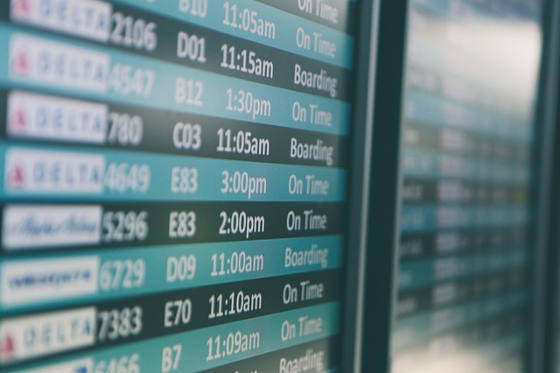
Click for reliable expedited passport courier service .
The list is organized by continents with countries listed in alphabetical order. Be aware that many of the countries on the list also require a visa for entry.
Europe is absent from this list. Due to stricter border controls in many European countries, the US State Department recommends that American citizens traveling to the countries in the Schengen Area should have a passport with six months of remaining validity. That said, the official requirement is only three months validity . While the rules for entering the countries that are a part of the Schengen Agreement are slated to change with the introduction of the ETIAS visa waiver program in 2025, this is not expected to change the required amount of passport validity required for entry.
For more, check out our complete guide to Africa Travel Document Requirements
For more, check out our complete guide to Asia Travel Document Requirements
North America
South america, top 5 questions about expedited passport couriers.
1. How can you get a passport when you're in a hurry? 2. What exactly does a passport expediter do? 3. Are passport expediting services legitimate? 4. How can I identify a reliable passport expeditor? 5. Is expedited passport service worth it?

Get the Latest Updates
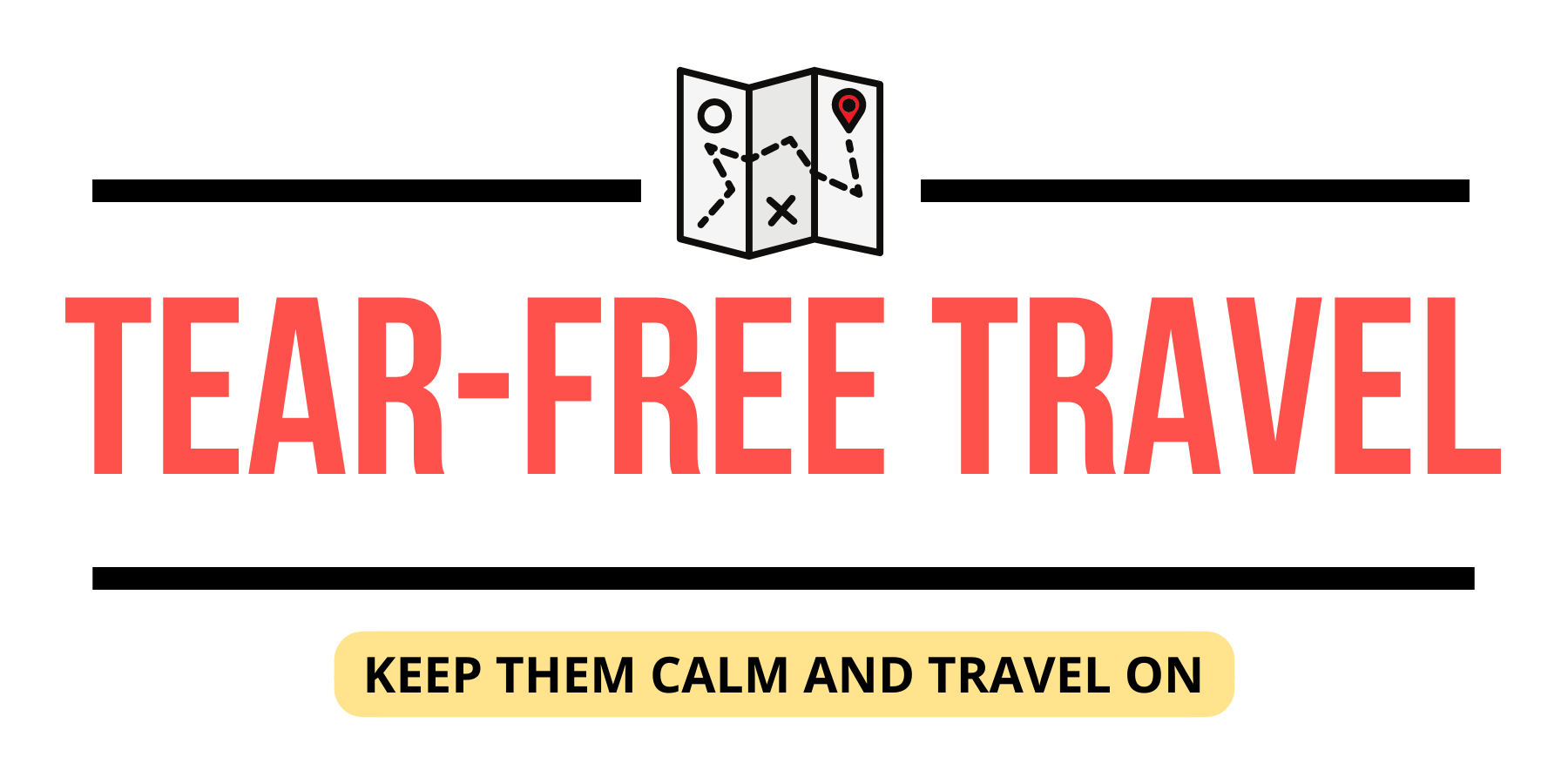
Posted on Last updated: April 1, 2024 Categories Family Travel Advice
By: Author Kate
The Best Age to Travel with a Baby
This post may contain affiliate links.
Sharing is caring!
“What is the best age to travel with a baby?”
I’ve been asked this question countless times by friends and family who know I’ve been brave (read: crazy) enough to travel with my young babies multiple times. 3 months? 6 months? 12 months? When is the best time to travel with a baby? Or REALLY, Is there any best time to travel with baby ? Is it CRAZY to even bother traveling with a baby? Am I going to feel like I am ‘just parenting’ in a tropical destination?! Will it be any fun??
We’ve traveled with our young ones at a variety of ages and I’m here to report back on the best age for baby to travel. I’ve summarized the pros and cons of each age group based on our experience of traveling with young kids. Of course, each baby is different, some babies ‘just sleep’ for the first three months and some (like mine) ‘just screams’ for the first three months. You never know when teething, developmental leaps or other (disastrous) baby phases are going to strike. So what age is best to travel with a baby? I do have a favorite age, so make sure to read through to the end to find out!
What is the best age for a baby to travel?

I have to say that we haven’t traveled much at the infant stage. The first three months with both my kids were a foggy blur that I mostly want to forget! The earliest we have traveled with our youngest son was 2.5 months and I was basically counting that as 3 months by then. For those with limited maternity leaves, this may be the best age to travel with baby simply because it may be the only time you have off! If you’re wondering when is the best time to travel with a newborn, I would recommend pushing it to as close to 10-12 weeks as possible!
Pros: 0-3 months
- The baby will sleep a lot. Usually not when you want the baby to sleep, but nevertheless, he will be sleeping for most of the hours of the day.
- Baby is completely immobile. Wherever you put the baby down is likely where they are going to stay. Put the baby in a beach tent with a mobile or play gym and enjoy the LUXURY of reading a book, or drinking a coffee while it’s hot!
- This is the best age to fly with a baby. Forget about needing complicated busy bags, coloring books, stickers or other tricks to keep kids entertained on a plane . All a baby needs at this age is formula or breastmilk and a comfy spot to snooze. Flying at this age is almost as easy as when your kids learn to watch movies for 4 hours straight!
Cons: 0-3 months
- You are still recovering from a baby exiting your body. Your life is one padsicle after another. I could barely manage a 5-minute walk let alone a beach vacation for a good 6 weeks after the birth of my first (c-section) and second (VBAC) babies.
- Sleep deprivation. Although this got better with my second, the initial shock of sleep deprivation with my first was the worst. I remember people telling me ‘this too shall pass’ and I clearly remember wanting to punch those people in the face! Sleep deprivation sucks and being on vacation doesn’t help.
- Potential illness. For us, this is the biggest reason we don’t travel much before three months. it’s not good when babies under 3 months get sick, their little immune system is not yet mature. I like to have at least the first set of immunizations done before we leave the country, especially if it’s a country with fewer healthcare resources. Since I live in Canada, where temperatures are pretty frigid for much of the year, I tend to want to leave the country when I travel!
The best age to vacation with baby?

We have traveled the most at this age with our littles. We have been to Costa Rica , Bahamas, and Mexico . Our friends over at Sailing Chance have even been to Italy with a baby this age – and the people of Italy were SO accomodating ! There are lots of different trips you can take at this age, all with their own set of pros and cons.
Pros: 3-6 months
- Bring your breasts only. If your baby is exclusively breastfed, it’s super easy to travel at this age. No need to worry about food contamination or washing and sterilizing bottles. All you need are your breastst and you are good to go! My youngest also got formula supplementation and although washing bottles was a pain, it was still easier than when eating solids became an issue. I would bring the prepared formula bottles or the travel packs and use bottled water. I would use these microwave sterilizer bags or a sterilizer rented from the hotel or resort to keep the bottles sterilized.
- Mostly immobile. Although some babies are rolling pretty well or even starting to crawl towards 6 months most are still pretty immobile. I definitely think the best time to travel with an infant is before they become mobile! My little ones were pretty happy to be parked in their stroller at a restaurant or at the beach. The sights and sounds and people were enough entertainment! If I try keeping my now 14-month-old in a stroller for more than 35 seconds and I’m doomed.
- (Still) sleeps a lot . 3-6 months tends to be the time when (most) babies start consolidating their night sleep (thank YOU) and being more awake during the day. Check out my post on how to get your baby to sleep on vacation to hear the crazy stuff we’ve done to keep our precious ‘sleep routine’ intact on vacation. Well-rested parents = much higher chance of actually enjoying your vacation.
Cons: 3-6 months.
- They won’t enjoy anything. At this age, babies don’t really care if they are in a tropical paradise or not. They aren’t going to particularly enjoy the pool or the ocean more than they would enjoy the bath. Putting their toes in the sand is probably just going to make them cry. The picture is NOT going to turn out as cute as you wanted it to. Or if it does, it will take 105,678 attempts to do it. This vacation is for you. Not them. If you’re wondering what is the best age for a baby to travel AND actually enjoy it meaningfully, skip ahead a few months!
When is a good time to travel with a baby?
6-9 months:.
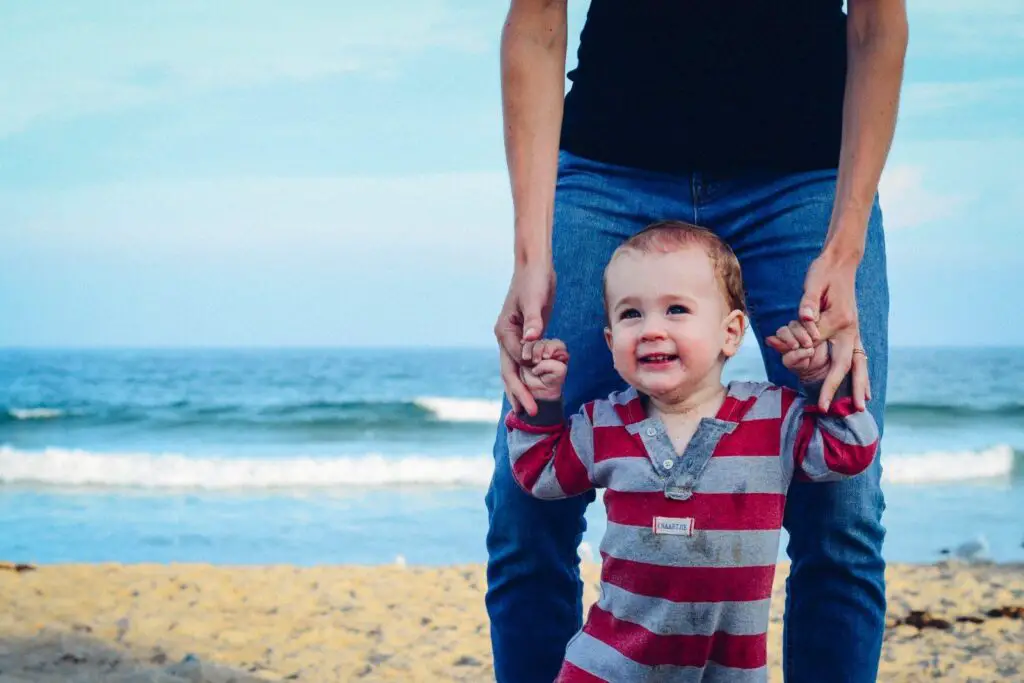
Ok so, in my opinion, this is the worst age to travel with a baby so I have to admit I struggled to come up with ANY pros for this age. Despite this, I have actually traveled with a baby at this age quite a bit. Maybe I’m still scarred from those trips! We stayed at the Empress Hotel in Victoria BC and we went on a Disney Cruise when my youngest was between 6-9 months. We still had fun, but it was a hard age for both of our kids.
Pros: 6-9 months
- Everything is exciting. Clearly, I wasn’t up to my usual Pinterest standards on my recent trip to Victoria BC with my then 6-month-old. For the plane trip, I literally brought NOTHING. I did not bring a single thing to entertain my child for a four-hour plane ride. At this age, EVERYTHING is exciting. Cups are exciting. Napkins are exciting. The seat tray is SUPER exciting. We made it through the flight using only the items already on the plane without causing any sort of ‘scene’. Take that, Pinterest! In general, I find the bes age to fly with baby is any time before they learn to walk!
- High Chairs are still fun. Once my babies started really walking or crawling there was no chance they were going to be staying in their high chairs longer than 5-10 minutes. No matter how many delicious treats I was bribing them with. At 6-9 months, most babies are pretty content to sit in a high chair and enjoy the excitement of a meal with their family. Since solids are still a pretty new and exciting thing, it’s easy for that to take up some serious entertainment. I even brought my 6-month-old to the high tea at the Fairmont Empress in Victoria (and he was reasonably well behaved!)
Cons: 6-9 months
- Eating sand. If you are planning a beach trip with kids , FORGET IT at this age. Especially if your baby is already crawling, this is a sure disaster. Babies love eating sand, and I’ve tried those Pinterest hacks with the mattress cover on the beach and let me tell you there is NO HACK that will keep sand away from an 8-month-old baby who is determined to eat sand. So what age can I take my baby to the beach? If you want it to be enjoyable, I would say before they are mobile and then after they stop putting everything in their mouth! Certainly a sightseeing or city trip is a better bet at this age.
- Eating everything. 6-9 months is the peak of the ‘put everything in your mouth stage’. If you are a germaphobe it’s probably not a good idea to travel with your baby at this age. Even myself, with a dog that basically french kissed my babies every day since birth, draw the line at some point. I tend to use a lot of the stroller or the baby carrier at this age to keep those little exploring hands out of every disgusting thing they can find.
- Eating real food. When babies start to eat real food, they start to demand real food on schedule. Which means you have to be prepared with REAL FOOD on demand. No joke. We opted to do a mix of purees and baby-led weaning with both of our littles simply because it afforded us the flexibility to be a bit lazy in this regard. Depending on the type of trip, having separate meals made for baby may be a hassle, or hard to find!
The best age to take baby on holiday?
9-12 months.

9-12 months has been very hit or miss for us. Babies can be so different at this age! Some are walking and some are just starting to crawl. Those developmental leaps (complete with cranky periods) are so unpredictable.
Pros: 9-12 months
- They might start to actually like some stuff . Splashing in the pool and dipping their toes in the ocean might genuinely be the greatest moment of their little lives. Warning, also possible they will REALLY hate it. My sons have loved splashing in the pool, dancing to music and exploring new activities at this age. They have so much curiosity (and no fear) which makes everything awesome. all. the. time.
- Feeding and naps will be well established . Although both of my kids seemed to strongly resist any sort of schedule I imposed on them, by 9-12 months they had a somewhat predictable routine. They reliably had two naps and both MOSTLY slept through the night. At this point, they were both eating mostly ‘table food’ which made them much better travel buddies.
Cons: 9-12 months
- Might be too mobile. One of our worst trips with a baby was Jamaica when our son was exactly 12 months. He had JUST learned to walk and when we arrived at our destination with slippery floors and lots of bumps and stairs, he latched on to daddy and basically didn’t let go of him for 7 days straight. Although he could ‘walk’ it sure didn’t seem like it for the 7 days he was there.
- Sleep regression. For both of our kids, the 9-12 month sleep regression was KILLER. On the same trip as above, our son woke up at 4 am every single night. I didn’t think our hotel room neighbors would appreciate any renewed attempts at sleep training so the only thing that kept him quiet was to bounce him UP AND DOWN UP AND DOWN in a baby carrier for an hour straight until he fell back asleep. Not fun.
- Separation anxiety. Thankfully, my hubby is a PROSTAR DAD who is quite popular with both my kiddos. In fact, until recently, he was definitely both boys ‘favorite’. As such, when we go on vacation, the kids typically need to ensure they have some sort of body part touching him at all times. Or ELSE. Sorry, Daddy! I’ll just be over here sipping my strawberry daiquiri…
The worst age to travel with toddler?
12-18 months.
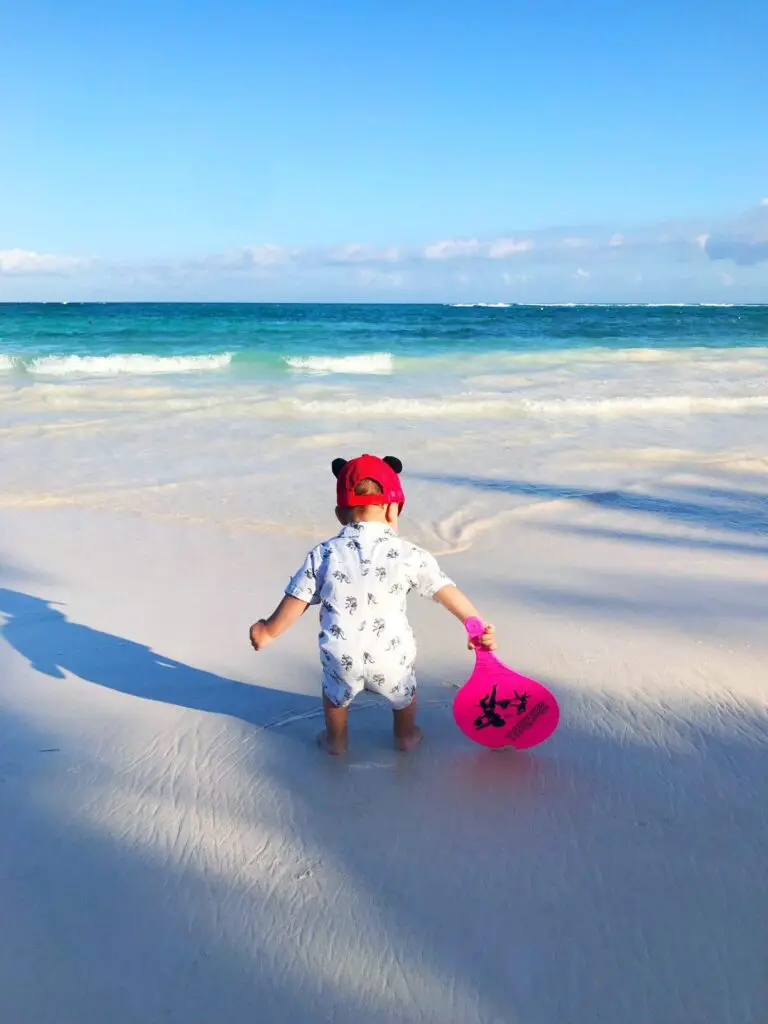
Pros: 12-18 months
- They won’t eat sand! Ok, they might put a little in their mouth at first. Usually, one taste will be enough to make them realize their mistake fast! Not eating sand = not having to be constantly hovering over them on the beach. Win!
- They may only take one nap . This is likely closer to the 18-month mark, but having only one nap a day allowed for a lot of flexibility when traveling. When our kids are napping two naps a day having a separate bedroom is a MUST for us. I am NOT going on vacation to sit in a dark room for hours on end.
Cons: 12-18 months
- They know what they want, but don’t know how to tell you! Ok, this is pretty much the trend for the next 2.5 years, but I’ve found it all starts after 12 months. In fact, as I’m currently writing this post, my 14-month old’s favorite method of getting my attention is screaming at the top of his lungs. I have to admit, it’s quite effective. Until they are speaking in sentences, expressing what they want, and understanding why they sometimes can’t have it, is a constant battle. This is where choosing the right trip with kids is so important! Don’t pick a trip where you are going to be constantly saying ‘NO’ or no one will have any fun!
- This is the WORST age to fly with a baby. Plane trips are especially hard at this age. 12-18-month-olds don’t like to be restrained and have NO IDEA why being on a plane would require them to stay in the same place for HOURS. AND unlike 18month+ babies who can be entertained with iPad apps on the plane , they aren’t too enthralled with the iPad either. I keep my plane trips <4 hours at this age and try to plan at least a short nap on the plane to pass the time.
SOOOOOO…What is the best age for a baby to travel?
I think the best age to take a baby on holiday is definitely 3-6 months. We have now done 3 trips at this age with our two kids and each one has been a success. Ah, the blissful long stroller walks! Casually enjoying lunch while baby naps in the stroller or carrier. Not needing to think about food and not needing to worry about illness it’s a perfect age to travel with a baby. After 3-6 months it’s all downhill until age 3.5 when you can start to actually reason with your kids.
What do you think? What is a good age to travel with baby? Drop me a line in the comments below to let me know your favorite age to travel with baby!
Pin for later!

Recent Posts
- The Best Playground in America is at Smothers Park
- Taking The Empire Builder from Chicago to Glacier National Park
- An Honest Review of a Disney Wish Cruise – The Good and The Bad
- Review of Silver Shells Beach Resort and Spa in Destin
- Is The Gulfarium Marine Adventure Park Worth Visiting?

Official websites use .gov A .gov website belongs to an official government organization in the United States.
Secure .gov websites use HTTPS A lock ( A locked padlock ) or https:// means you've safely connected to the .gov website. Share sensitive information only on official, secure websites.
- Create Account
International Travel as a Permanent Resident
In general, you will need to present a passport from your country of citizenship or your refugee travel document to travel to a foreign country. In addition, the foreign country may have additional entry/exit requirements (such as a visa). For information on foreign entry and exit requirements, see the Department of State’s website .
If seeking to enter the United States after temporary travel abroad, you will need to present a valid, unexpired “Green Card” (Form I-551, Permanent Resident Card). When arriving at a port of entry, a U.S. Customs and Border Protection Officer will review your permanent resident card and any other identity documents you present, such as a passport, foreign national I.D. card or U.S. Driver’s License, and determine if you can enter the United States. For information pertaining to entry into the United States, see U.S. Customs and Border Protection’s webpage .
Permanent residents are free to travel outside the United States, and temporary or brief travel usually does not affect your permanent resident status. If it is determined, however, that you did not intend to make the United States your permanent home, you will be found to have abandoned your permanent resident status. A general guide used is whether you have been absent from the United States for more than a year. Abandonment may be found to occur in trips of less than a year where it is believed you did not intend to make the United States your permanent residence. While brief trips abroad generally are not problematic, the officer may consider criteria such as whether your intention was to visit abroad only temporarily, whether you maintained U.S. family and community ties, maintained U.S employment, filed U.S. income taxes as a resident, or otherwise established your intention to return to the United States as your permanent home. Other factors that may be considered include whether you maintained a U.S. mailing address, kept U.S. bank accounts and a valid U.S. driver’s license, own property or run a business in the United States, or any other evidence that supports the temporary nature of your absence.
If you plan on being absent from the United States for longer than a year, it is advisable to first apply for a reentry permit on Form I-131 . Obtaining a reentry permit prior to leaving the United States allows a permanent or conditional permanent resident to apply for admission into the United States during the permit’s validity without the need to obtain a returning resident visa from a U.S. Embassy or Consulate abroad. Please note that it does not guarantee entry into the United States upon your return as you must first be determined to be admissible; however, it will assist you in establishing your intention to permanently reside in the United States. For more information, see the Travel Documents page.
If you remain outside of the United States for more than 2 years, any reentry permit granted before your departure from the United States will have expired. In this case, it is advisable to consider applying for a returning resident visa (SB-1) at the nearest U.S. Embassy or Consulate. An SB-1 applicant will be required to establish eligibility for an immigrant visa and will need a medical exam. There is an exception to this process for the spouse or child of either a member of the U.S. Armed Forces or civilian employee of the U.S. Government stationed abroad on official orders. For more information on obtaining a returning resident visa, see the Department of State’s webpage on returning resident visas .
Additionally, absences from the United States of six months or more may disrupt the continuous residency required for naturalization. If your absence is one year or longer and you wish to preserve your continuous residency in the United States for naturalization purposes, you may file an Application to Preserve Residence for Naturalization Purposes on Form N-470. For more information, please see the Continuous Residence and Physical Presence Requirements page.
If you lose your Green Card or reentry permit or it is stolen or destroyed while you are abroad, you may need to file a Form I-131A, Application for Travel Document (Carrier Documentation) . This carrier documentation will allow an airline or other transportation carrier to board a lawful permanent resident bound for the United States without the carrier being penalized. For more information, please see the Form I-131A, Application for Travel Document (Carrier Documentation) page.
More Information
- Welcome to the United States: A Guide for New Immigrants (PDF, 3.57 MB)
- How Do I Get a Reentry Permit? (PDF, 667.32 KB)
- I-131, Application for Travel Document
- I-90, Application to Replace Permanent Resident Card
Other USCIS Links
- Green Card Resources
- How Do I Help My Relative Become a Lawful Permanent Resident? (PDF, 577.38 KB)
- How Do I Renew or Replace My Permanent Resident Card? (PDF, 550.19 KB)
- "How Do I" Guides for Permanent Residents
- Skip to main content
- Keyboard shortcuts for audio player
- Dear Life Kit
- Life Skills
How much should I spend on a wedding present? Life Kit's tips of the month

The great thing about working on Life Kit is that the editors and producers get to pick up all sorts of nifty life hacks that save money, enhance our relationships and make our everyday lives more joyful.
Here are nine expert tips from our April episodes we were most excited to share — and put into practice in our own daily lives.
1. Planning a big trip? Consider traveling during "shoulder season," the period of time between a city's peak season and offseason. It's often less expensive and it can help your "destination deal with over-tourism and overcrowding," says Lale Arikoglu, articles director at Condé Nast Traveler magazine.

From food to finance, 9 life hacks from Life Kit experts
2. The rule that your wedding gift should cost as much as your plate is outdated , says etiquette coach Myka Meier. "That is kind of an old wives' tale that you have to spend what the couple spent on you, because that's often not possible for many people. At the end of the day, you need to stay within your budget."
3. To prevent digital eye strain, follow the 20-20-20 rule . For every 20 minutes of computer work, take a 20-second break and look 20 feet away, say eye experts.
4. To truly connect with a poem, don't worry about figuring out what the poet is trying to say . Instead, says poet Harryette Mullen, focus on how you feel. What impression do you get? What ideas float around in your mind as you read it?

24 nifty tips to make 2024 even brighter
5. Don't depend on an anti-choking device if your baby is choking , say pediatricians. The evidence-backed and proven method is to do back blows followed by chest blows on your child — and then, if they're unresponsive, proceed to call 911 and do CPR .
6. Start talking to your kids about vaping when they're in elementary school , says Dr. Deepa Camenga, a pediatrician and addiction medicine specialist with the Yale School of Medicine. You want to be the first person to have that conversation with them so they know what your expectations are.
7. Think of your birthday as your own personal holiday . A lot of people dislike their birthday — they don't like the attention or they've been disappointed by previous birthdays. Make your day special again by doing what you want to do, whether it's throwing yourself a giant bash or treating yourself to a spa day.
8. In negotiation, avoid simple yes or no answers by trying a tactic called "a menu of options," says career coach Joan Moon . For example: instead of asking for more flexibility at a new job and getting a flat-out no, you might propose a couple of options: working three days remote or a four-day workweek. It can help expand the possibility of a favorable outcome.

Having a roommate can be great, but it takes some work to make it work
9. Tired of having roommates? Consider "communal living." Communal living takes many forms, whether that's sharing a home with like-minded people or raising your kids on the same street as your friends. And it goes by many names: intentional communities, co-housing, co-ops or communes. But they all have one thing in common: people who co-live don't just simply live together as roommates. They make the long-term commitment to intertwine their lives with one another, says Gillian Morris, who co-runs a blog on communal living.
The digital story was written by Malaka Gharib and edited by Meghan Keane. The visual editor is Beck Harlan. We'd love to hear from you. Leave us a voicemail at 202-216-9823, or email us at [email protected].
Listen to Life Kit on Apple Podcasts and Spotify , and sign up for our newsletter .
- Life Kit: Life Skills

COMMENTS
Bangkok - Chiang Mai - Koh Phi Phi - Krabi - Khao Sok - Koh Samui - Koh Tao. This list is in chronological order of where we visited on our 6 month travel itinerary, with a few exceptions. We went to Italy, Spain, and Germany twice, but I've listed each of those countries based on the first time we visited.
We've been there! I originally published this blog post in early 2016, on the cusp of starting what we then believed to be a 6 month RTW adventure that would see us backpacking parts of Europe, Southeast Asia, and South America. Fast forward 7 years, and it turns out that 6 months of backpacking the world turned into a full-time travel ...
Traveling around the world for a year (or even six months) is a different beast than a one-week or short-term vacation. While the packing lists share many similarities, long-term round the world travelers often need to pack a few different things that you wouldn't for a regular trip.
General (for both) to pack for 6 months travelling. We do a lot of hiking on our travels and so keep this in mind if you are too. You will need a good pair of walking boots. Walking sandals x1. Walking boots x1. Walking socks x4. Flip flops x1. Long-sleeved top x2.
Thanks for your support. I originally published this 6 month travel itinerary in November 2019 at the beginning of what was going to be a 6-month trip. Unfortunately the last part - Nepal - was derailed by the pandemic (we finally visited in early 2023) but the rest of the trip was incredible and I wanted to republish this post to inspire ...
Food - $2,996.25 Total | $16.37 Daily Average. If there has been one consistency in all of our world travels, it is our ability to be frugal with food. In the past six months, however, it has dipped slightly from our standard $20 per day to $16.37. We attribute the drop to staying in one place for a longer time.
We are celebrating 6 months of traveling around the world. Our Love and Road Travel Project turned into a life-changing experience. 183 days of happiness, fears, smiles and tears. Half of a year is gone and after the celebration (October 24th) we decided to put some numbers together and make our first traveling around the world spreadsheet.
Thermoflask Double Wall Vacuum Insulated Stainless Steel Water Bottle. Amazon. View On Amazon $23 View On Target $30. The Thermoflask Double Stainless Steel Insulated Water Bottle will keep you ...
Generally, you should book domestic flights one to four months in advance. For international flights, you should book at least six months in advance. You'll want to give yourself more time for research for the latter than when traveling on domestic itineraries. When you're booking holiday travel, it's often best to book as soon as possible.
Always ensure you are covered for the unexpected. 6 months travelling is a long time and although you plan to have a save time, sometimes the unexpected happens. So, always ensure you have adequate travel insurance. Our go to travel insurance company is World Nomads and they are one of the leading travel insurance companies trusted by many.
Visas & passports: This is the boring but essential part of travelling. Your passport needs to have at least 6 months until expiring from the date you return! This is important, as if you have under 6 months you might not be allowed to continue/start your trip. Visas will vary depending on your country.
Many European countries are signers of the Schengen Agreement. As a result, they follow the 3+3 Rule, meaning your passport must be valid for three months beyond your three-month entry visa or for a total of six months, regardless of the duration of your initial stay. While some Schengen countries only require passports to be valid for three ...
An image of a chain link. It symobilizes a website link url. Copy Link When I was working remotely in 2021, my boyfriend and I packed up and traveled to 22 countries across Europe and Latin ...
30. Oh absolutely. We started planning within 6 months of being back. Now that we're 2 years out from returning, it feels like we've spent TOO much time planning. One big trip abroad was simply not enough for one lifetime. We only did 6 months last time and want to do a year this next time. If we could do 2 straight years we would, no question.
55 cities, 16 countries. That's one third of the 44 countries in Europe. And 8% of the world, out of the 195 countries in the world. And that's the number of places I've covered in 6 months while travelling around Europe from January to June 2015. Equipped with my Europe packing list, I set off to Europe for the first time, and I've ...
Total six months travel budget. In total, we spent around US$14,720/£9,646 for the two of us in 6 months, which includes all flights and public transportation, and more than two months in the U.S. We hope our next budget post in 6 months will be much less, with no major flights, hopefully a few more house-sits, and lower expenses in South ...
Office of the Spokesperson. April 26, 2022. U.S. citizens considering international travel should plan ahead and be informed about travel requirements before making decisions or firm travel plans. We urge U.S. citizens considering international travel to check their passport expiration date early and if renewal is needed, to submit applications ...
Date. Date column arrow image representing sort order (up is ascending, down is descending, and up/down is unsorted. Six-Month Passport Validity Update. PDF. 159.38 KB. 03/18/2024. Last Modified: Mar 18, 2024.
Some countries require passports to be valid at least six months beyond your trip dates. So even if your passport doesn't expire until 2024, your late 2023 travel plans may be in jeopardy if ...
Here are one digital nomad's real budgets for 7 years of travel. What's the cost of traveling Europe? The answer might just be cheaper than you think. Here are one digital nomad's real budgets for 7 years of travel. ... (about 9 months) and also planning for a 6-month travel sabbatical in about 1.5 years. i'm still debating whether i should ...
6 months. $360 - $1800. Land transportation is generally very cheap in all of Southeast Asia. Taking an intercity bus typically costs about $10. The cost of renting a bike is around $8-$15/day. On the islands like the Philippines, public boat trips take ages but they are extremely cheap at about $2/ride. 4.
Download any apps you use for renting cars and accessing boarding passes before you leave so you can easily reschedule things in the event of a last-minute cancellation. If you're flying during your third trimester, be sure to call the airline to check about the cutoff week for pregnancy travel. A note from your doctor that says you're ...
You should always contact the embassy of the country you plan to visit as well as your airline(s) to verify the passport requirements for your international travel itinerary. That said, making sure your passport's expiration date is at least six months away from your departure date will help you to avoid most potential complications.
The 6-Month Passport Rule Every Traveler Should Know About. If you're planning summer travels abroad, don't forget to triple check your passport expiration date. Just because it doesn't officially expire before your trip, doesn't mean you're in the clear to travel...
Casually enjoying lunch while baby naps in the stroller or carrier. Not needing to think about food and not needing to worry about illness it's a perfect age to travel with a baby. After 3-6 months it's all downhill until age 3.5 when you can start to actually reason with your kids.
The 6-month passport validity rule is meant to ensure that travellers have a valid passport for the duration of their trip. Some countries will not permit travellers to enter their borders unless their passport has a minimum expiration date of at least 6 months after the final day of travel. In short, should your passport have less than six ...
If you plan on being absent from the United States for longer than a year, it is advisable to first apply for a reentry permit on Form I-131.Obtaining a reentry permit prior to leaving the United States allows a permanent or conditional permanent resident to apply for admission into the United States during the permit's validity without the need to obtain a returning resident visa from a U.S ...
The fixed rate is set at the time of issue, but the inflation-linked rate changes every six months. The inflation-based rate is currently 3.94% and will fall to 2.96% on May 1.
2. The rule that your wedding gift should cost as much as your plate is outdated, says etiquette coach Myka Meier. "That is kind of an old wives' tale that you have to spend what the couple spent ...
Costco typically offers deals that run for around a month at a time. For example, the current in-warehouse and online savings offers run from April 10 to May 5, 2024.